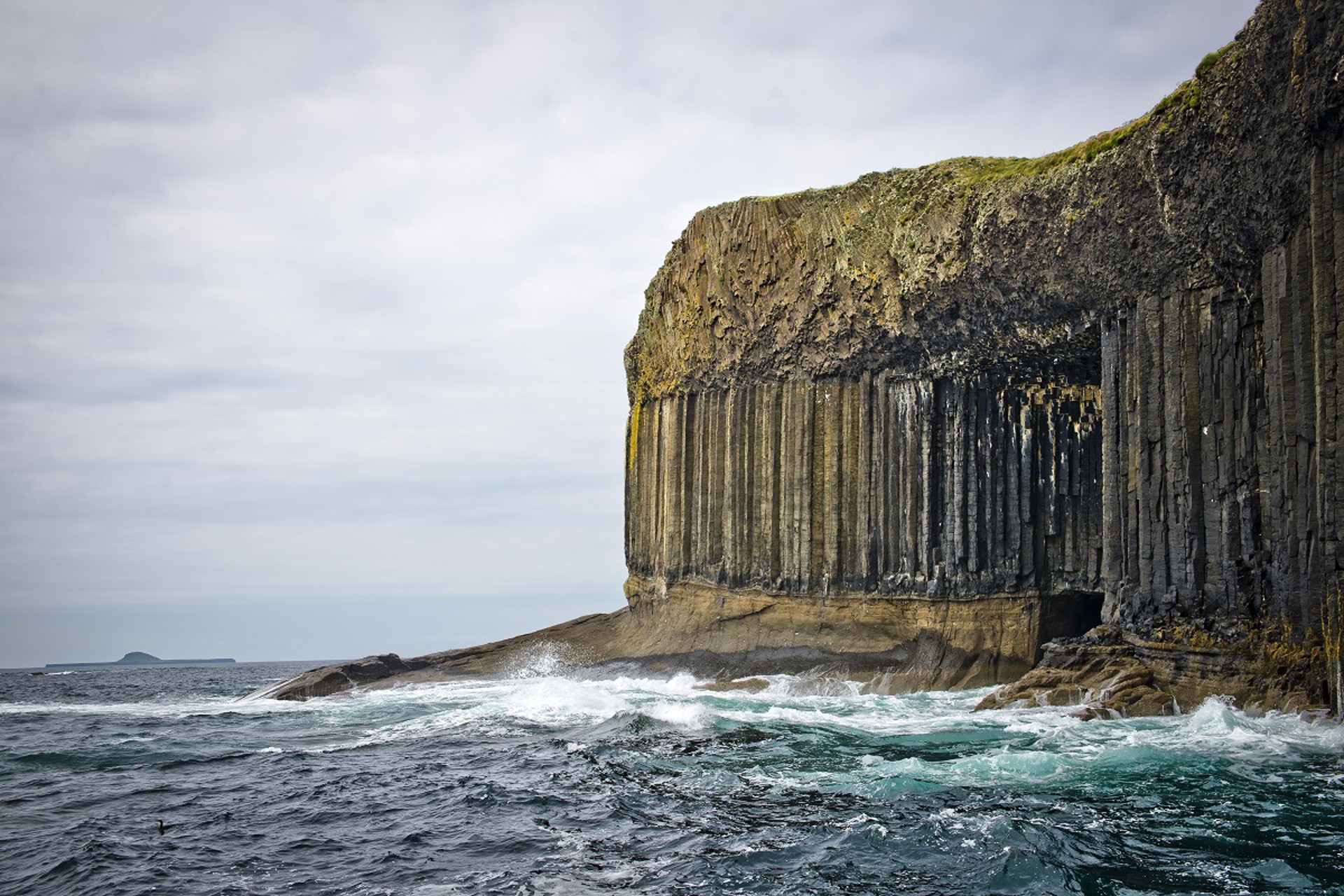

How to visit Fingal's Cave and why you need to
The Hebridean island of Staffa may be tiny – it’s only half a mile long by a quarter of a mile wide and completely uninhabited – but it packs a big cultural punch. This dot on the map six miles west of Mull and a similar distance north of Iona has inspired musicians, artists, writers and storytellers throughout history. Staffa made a huge impression on the likes of composer Mendelssohn, artist JMW Turner, poets Wordsworth and Keats, not to mention Queen Victoria and Prince Albert. And this is down to its remarkable geological features.
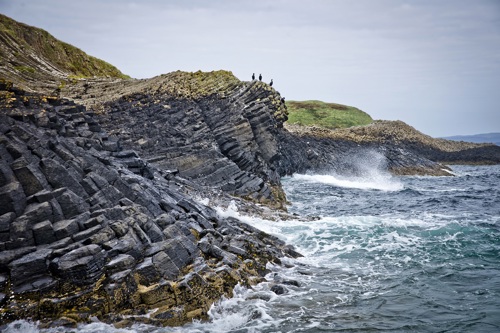
Visiting the Isle of Staffa
When you visit Staffa, you can’t fail to be awestruck by nature’s creative forces. Impossibly dramatic and romantic, Staffa is best known for its basalt columns and spectacular sea caves. The most famous of these is Fingal’s Cave, also known in Gaelic as An Uamh Binn or the Cave of Music, immortalised by Mendelssohn in his Hebrides Overture. The cave is comprised entirely of spectacular hexagonal basalt columns similar to those found at the Giant’s Causeway in Northern Ireland.
Staffa is a volcanic island and the basalt columns formed when a single lava flow cooled around 60 million years ago. As the molten rock solidified it also shrank, allowing gaps to form which created the hexagonal shaped columns seen today. In addition to the cave, the columns form a dramatic cliff face which appear as colonnades or, as the Vikings saw them, the poles or staves (stafr in Old Norse) used in their buildings, hence the name Staffa. The columns are canted over at an angle of four degrees and it was this tilting that happened after they were formed which allowed the sea to exploit natural fissures in the rock, hollowing out the cave over the millenia. Other caves on the island formed in a different way, when a softer layer of ash under the basalt columns was eroded by the sea.
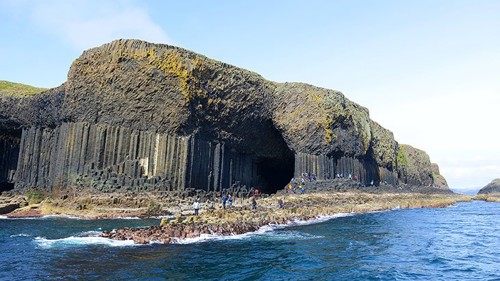
Fingal's Cave, Isle of Staffa
Why is Fingal's Cave so unique?
What makes Fingal’s Cave so special is its size, uniformity and the fact that, due to a fluke of nature, there is a natural walkway which allows visitors to get right inside at low tide. It was the famous botanist, Joseph Banks, who, in 1772, first brought the feature to popular attention. Since then a steady stream of visitors, including a list of famous names from the arts, have made a sort of pilgrimage to this ‘cathedral of the sea’. Among those great artists was a young Felix Mendelssohn who visited the cave in 1829. Duly inspired, Mendelssohn wrote the concert overture Die Hebriden, also known simply as Fingal’s Cave which he finished in 1832. Coincidentally, JMW Turner’s painting “Staffa” was also first exhibited in the spring of the same year. Today, Mendelssohn on Mull, a Scottish chamber music festival, continues to draws inspiration from Staffa. The event brings together young musicians for a week of musical exploration and concerts inspired by the wild beauty of Staffa, Mull and Iona.
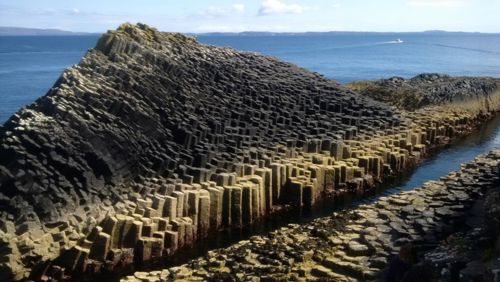
Staffa's hexagonal shaped columns © Turus Mara
How to get to Fingals Cave
West Coast Tours based in Oban enables you to discover three beautiful Inner Hebridean islands including the beauty of Staffa and the awe inspiring Fingal's Cave.
A number of boat operators in Oban offer trips from the mainland to Staffa, including Seafari Adventures . It makes sense to combine a visit to Staffa with trips to its equally enthralling but quite different neighbours Mull and Iona . Boat trips run from Oban, Mull and Iona to Staffa. Staffa Tours operates daily boat tours from Fionnphort on Mull, Staffa Trips operates from Iona.
If you’re feeling adventurous, how about a wild swim in Fingal’s Cave? Basking Shark Scotland offers a bespoke ‘Swim Fingal’s Cave’ tour, where you can swim or snorkel into the cave. Floating in the mouth of the cave, it’s stunning to look straight up the basalt pillars and rock formations then dip your head under water and see the colonies of marine life. You can also kayak into the cave.
You may also be interested in
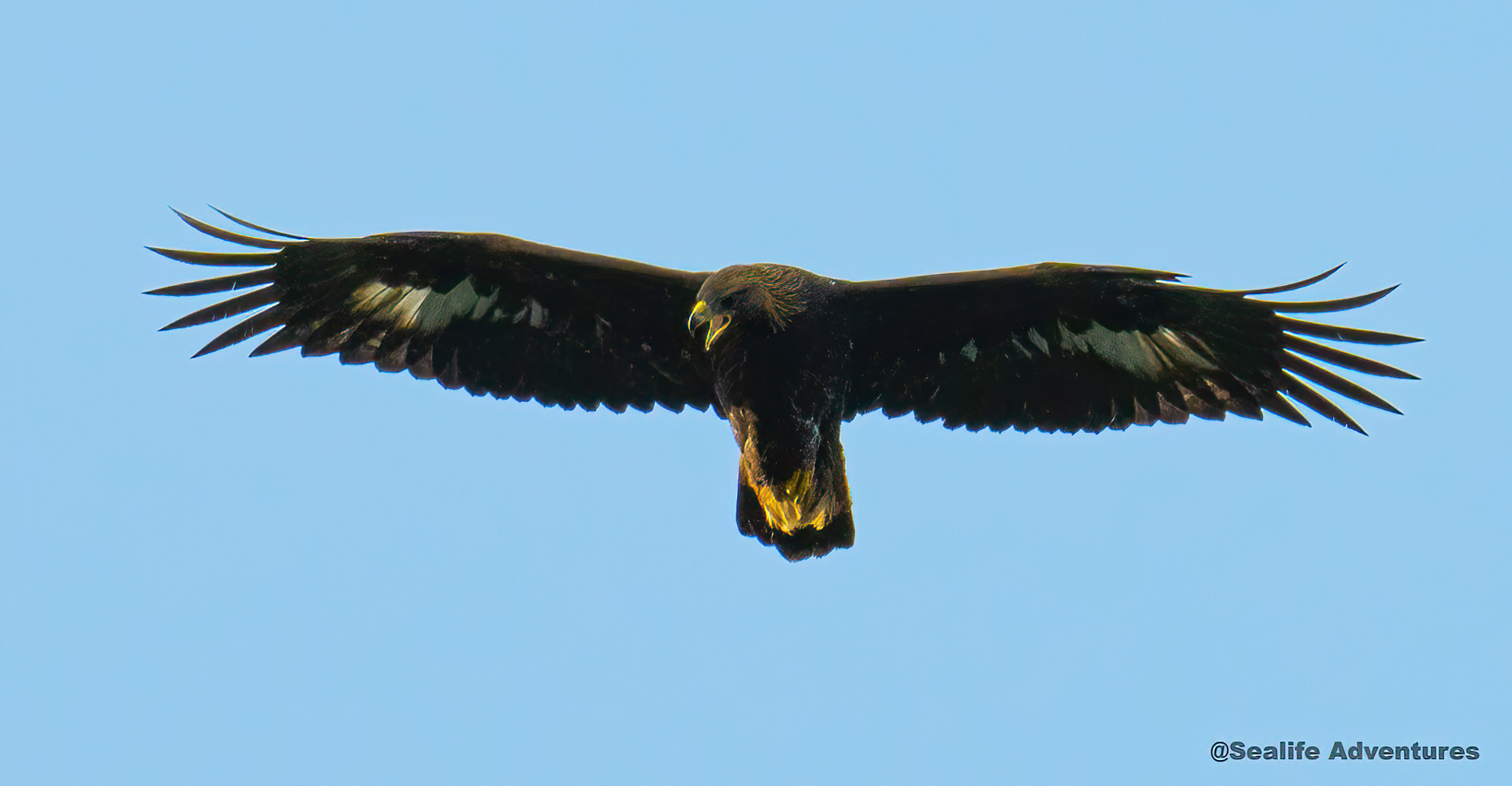
How the Isle of Mull’s eagles will make your heart soar | Argyll & the Isles
Mull, known as Eagle Island has the highest density of nesting golden eagles, so you’ve a good chance of spotting these feathered giants on a visit to Mull.
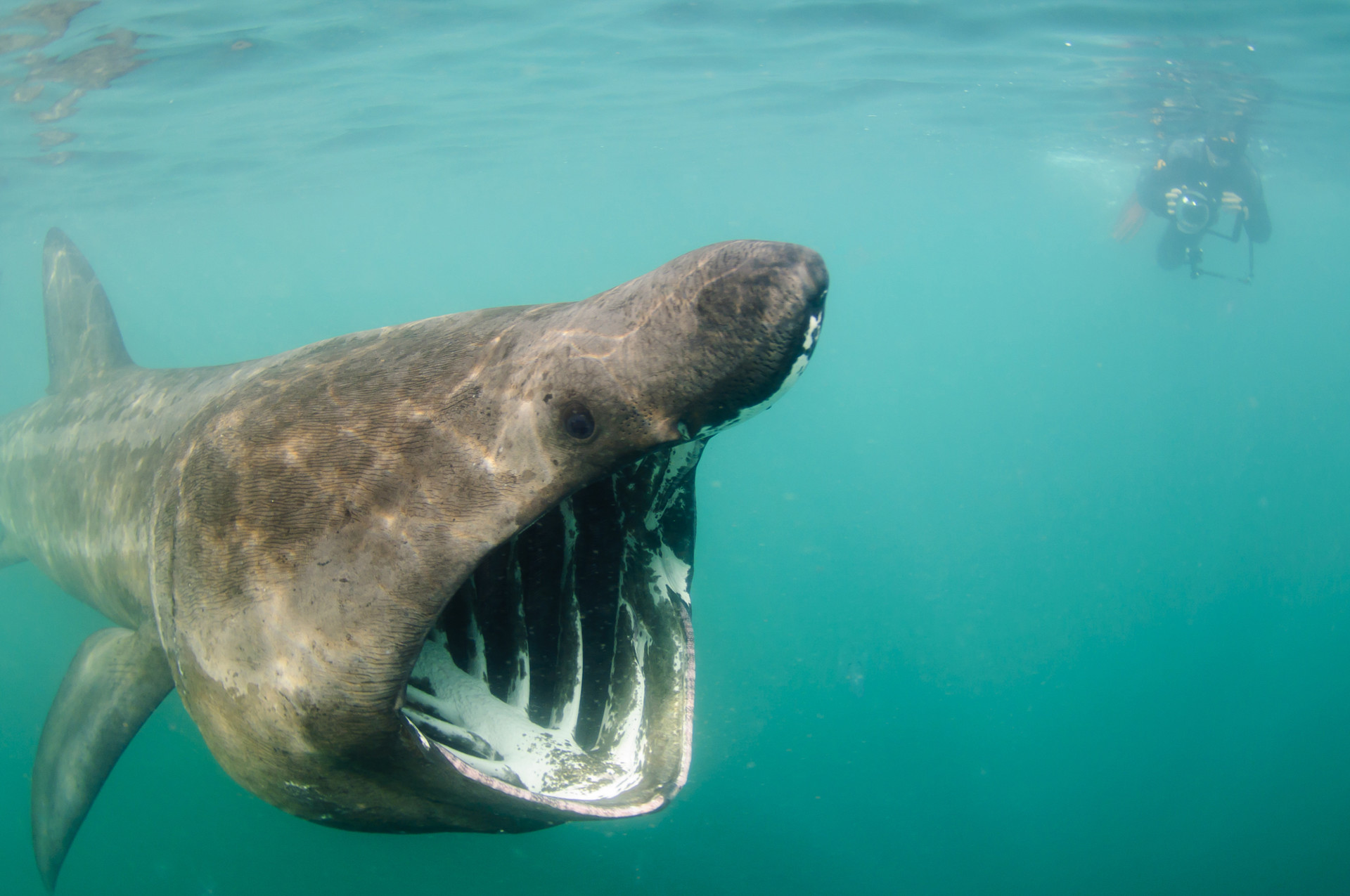
Basking Sharks: where to see them and when?
The basking shark is the biggest fish in the UK and the Inner Hebridean isles is well known world-wide as a whale and basking shark hotspot.
We've noticed that you're using an out of date browser. We recommend that you update to the latest version to enhance your browsing experience.
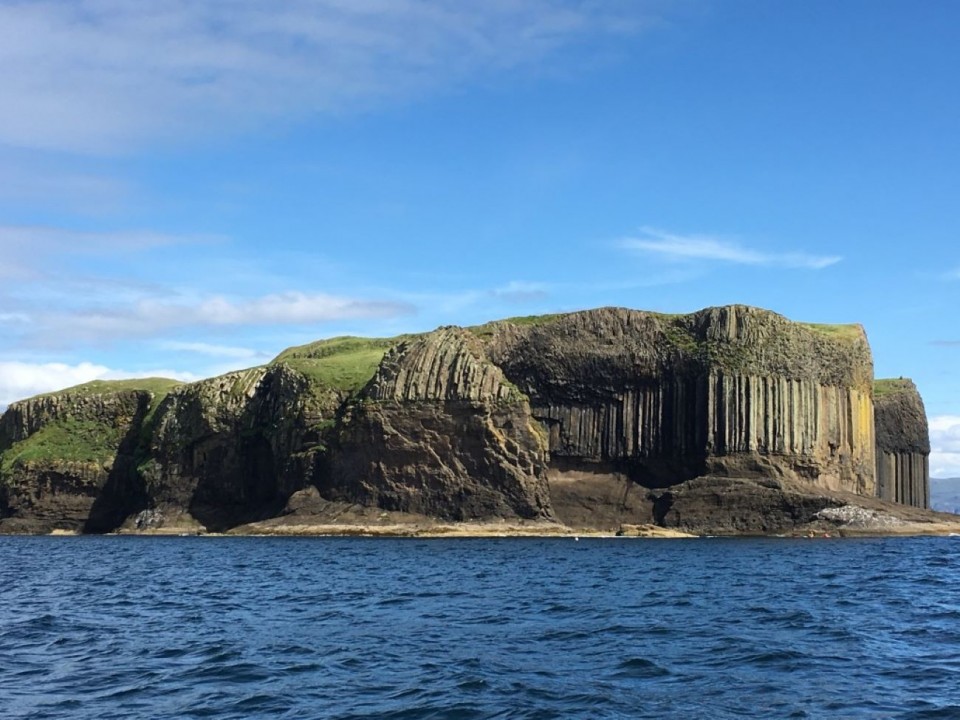
Fingal's Cave (Staffa)
Take this fantastic trip with us to explore the one of a kind Fingal's Cave and enjoy breath taking views and beautiful wildlife.
This three hour cruise takes you South East from Tiree across the passage of Tiree and passed the iconic Dutchman’s cap. Out on the open waters, you’re bound to experience an adrenaline rush, as your Skipper revs the engine and takes you on a thrilling high speed journey to view from the water the unique sight of this amazing hexagonal jointed basalt columns which create the natural wonder- known as Fingal’s Cave. Subject to swell conditions – step ashore and spend an hour on Staffa. Inside this natural cathedral, close your eyes and you can even hear Mendelssohn’s Hebrides Overture
From £50 per adult
Departure days.
- W Wednesday
March — October
Contact details
- +44 (77888) 10623
- View tour details
- [email protected]
Tour information
½ Day
- Small Group (1-16)
Tour prices
From £50 Per Adult
Prices are subject to change depending on season
Tour gallery
JavaScript needs to be enabled to see this. You can turn this on in your browser settings.

Tour company information
Tiree sea tours.
We are a small family run business located on the Isle of Tiree, we offer daily boat trips to some of the most amazing places in the west coast of Scotland from the puffins on Lunga to the majestic Skerryvore Lighthouse. Fly direct from Glasgow to experience a truly unforgettable day trip. Tailormade trips for up to 12 passengers on each of our 2 boats, including shark fishing and private dive charters. Our booking office and gift shop located at Tiree Airport offers car hire and a range of local gifts and food products. Check our website and facebook page for regular updates. We look for
Social Channels
Visit Tiree Sea Tours
Opening times
Boat trips leave at various times please contact us Booking office, shop& car hire Mon-Fri 9am-1pm & 4pm-6pm Sat 9am-1pm
Other tours from this company
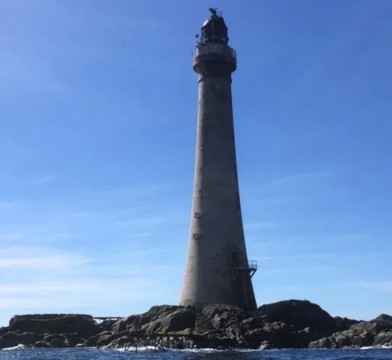
Skerryvore Lighthouse
Departs: Tiree
Join us on our 2.5 hour trip to see the majestic Skerryvore Lighthouse with some...
Price from:
£50pp

Lunga (Treshnish Isles)
Take the chance to see some of Scotland's incredible wildlife on this unique tri...
£45pp

Enjoy this trip to one of our neighbouring islands and explore the rich history...
£55pp

Take the opportunity to visit the Isle of Coll and enjoy what Coll has on offer....
£35pp
The content of many of our web listings is provided by third party operators and not VisitScotland. VisitScotland accepts no responsibility for (1) any error or misrepresentation contained in third party listings, and (2) the contents of any external links within web listings ((1) and (2) together hereinafter referred to as the "Content"). VisitScotland excludes all liability for loss or damage caused by any reliance placed on the Content. The Content is provided for your information only and is not endorsed by VisitScotland.
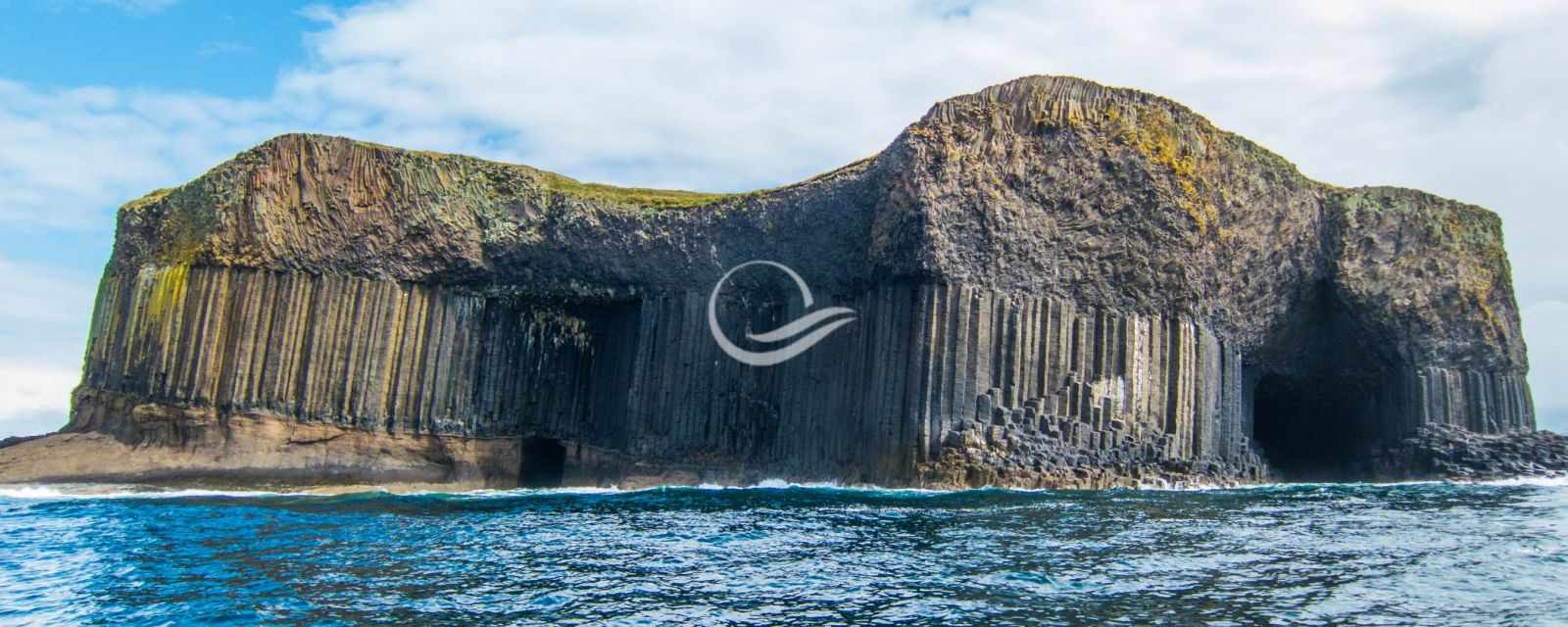
Fingal’s Cave on Isle of Staffa - How to Get Here and Tips

When Is the Best Time
Fingal's Cave was one of my highlights in Scotland. These huge basal columns are fascinating from the boat and even more from inside the cave formed 59 million years ago. Tours are offered from April to October when temperatures are more bearable and less storm occurs. The best chance for pleasant weather is during spring from April until June and again in September.
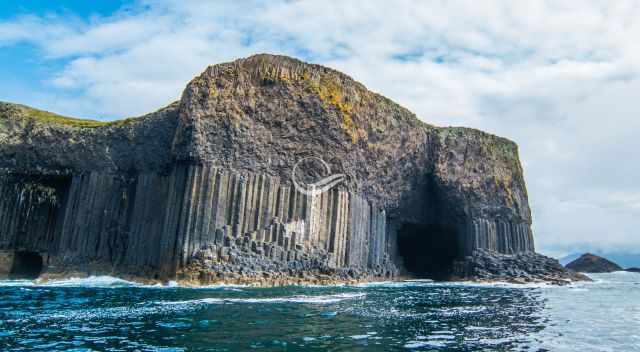
July and August can be lovely but more rain occur during the warmer months. To come ashore, visit the Isle of Staffa and having a look into the cave by foot is possible during a calm sea only. Boats can't dock during high swell and choppy sea. However, the view from the boat to Fingal's Cave is already stunning. The cave's face is southeast, therefore, best seen in the morning.
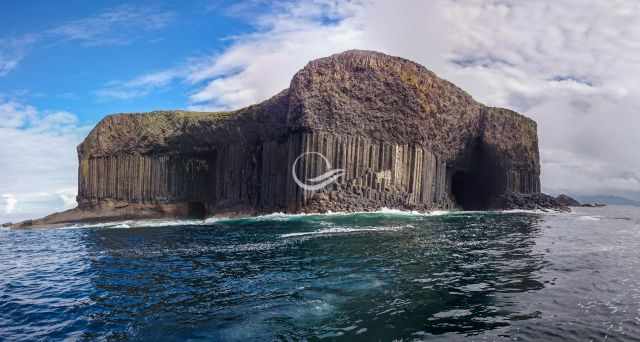
Check the weather forecast before you book a tour. Scotland is famous for quickly changeable weather and it frequently rains in July and August.
Best Months to Visit
Related Topics
Location and Tips

The boat ride to Staffa is already an amazing experience when dolphins pass by, seals get curious, or even a basking shark is spotted from June to August. Approaching Staffa and Fingal's cave from the sea is an incredible adventure. The uninhabited Staffa island measuring half a mile long and wide only. The cave is known for its natural acoustics and is part of a National Nature Reserve.
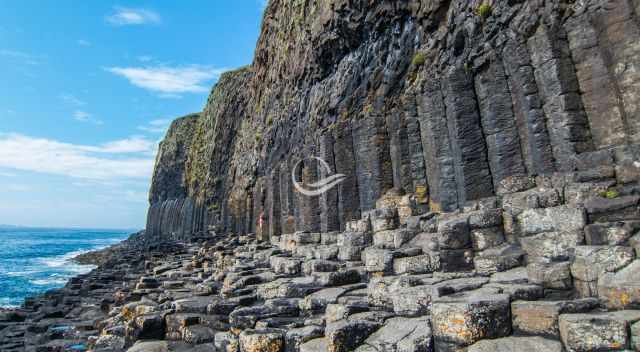
The cave is made of huge basalt columns. A handrail is installed for safety reasons to access the cave. the rocks are slippery after high tide. Composer Felix Mendelssohn visited the cave in 1829 and got inspired to write the overture "The Hebrides". Also, other famous visitors got inspired by the cave like Jules Verne, Turner (painter) and many more.
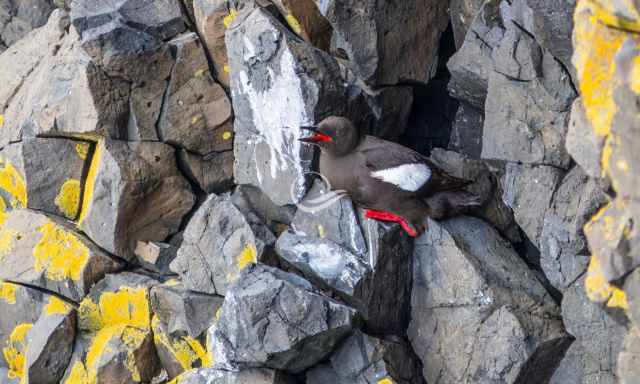
You may spot different bird species like the fulmar, puffins, and the black guillemot (red legs). On the way to Staffa, keep an eye out for dolphins, minke whales, porpoises, and June to August for the popular basking sharks. Usually, Staffa is combined with the Isle of Mull and Isle of Iona and called "The Three Isle Tour". It is a full day trip; the price is about £ 60 per adult.
Another highly recommended tour is the Isle of Staffa, together with Lunga Island . Lunga is famous for being one of the best places to spot puffins quite close.
The History of Staffa
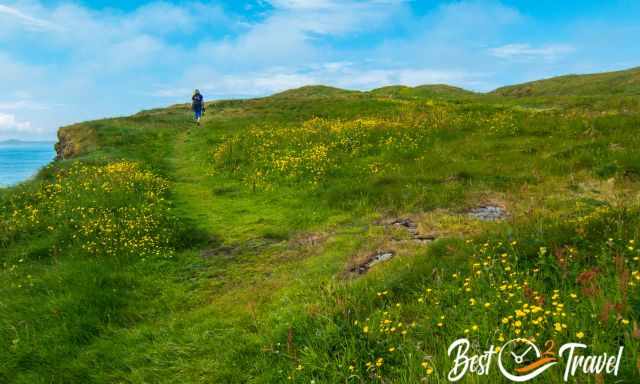
This tiny and remote island was inhabited and farmed already around 1800 BC, regarding a BBC documentation. The ancient fields with distinctive ridges were made by ploughing or digging with furrows on either side to drain off water. The crop was harvested from this tough soil in the middle of nowhere.
At Oban port is the best seafood stall of all located. Don't miss this exceptional seafood meal after your trip to Staffa.
Do you want to obtain the usage right for my images? Contact me, but I will take action against picture theft.
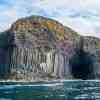
World of Caves
UnderGround Cave Adventures Await

Ultimate Guide to Fingal’s Cave (Scotland) (Tours, Pricing, History)
We may have been compensated for this post. Please keep in mind that it affects you in no way financially. If an item is being reviewed, we are not obligated to give a positive review and always use our own words. This disclosure is in accordance with the Federal Trade Commission’s 16 CFR, Part 255: Guides Concerning the Use of Endorsements and Testimonials in Advertising. If you would like a review done contact Dannelle at [email protected]
Sharing is caring!
- Pinterest 5
One of the most popular tourist attractions in Scotland, Fingal’s Cave is a massive sea cave that was discovered by accident. The crystal clear water inside creates amazing reflections and beautiful colors on the walls of this natural wonder.

It is located near Staffa Island off the coast of Mull, which means it is accessible to tourists who are traveling around Scotland. This guide will give an overview of Fingal’s Cave with information about tours, pricing, and history to help you decide if it would be worth visiting!
Fingal’s cave was formed uniquely and also has a unique shape. Seeing it is on an uninhabited island, the rock formation on it was constantly bashed by the water (waves) until the opening of the cave we now see was formed . The island was not a popular region, and only after Banks discovered it that way, it brought to the attention of those who were enthused by research and nature.
Fingal’s Cave is found in Staffa, an uninhabited island in the Inner Hebrides of Scotland. The cave is owned by Scotland’s National Trust and categorized as a national nature reserve.
Fingal’s Cave is a sea cave located on the uninhabited island of Staffa, in Argyll and Bute. It was formed as molten lava from an ancient volcano cooled into solid rock that later eroded away leaving this natural wonder. This location has become popular because it holds similarities to what some believe are seen on Asteroid Yavin IV, which is home to Luke Skywalker’s Jedi Academy where he trains with other students before going off to fight in Episode IV: Star Wars – A New Hope.

History of Fingal’s Cave
Fingal’s Cave was discovered in 1772 by a British Navy ship called the HMS Fowey, which had stopped at Staffa to get fresh water. The sailors were exploring around when they stumbled across this beautiful cavern that is just under 100 feet long and 30 feet high.
The cave got its name after its connection with the legendary 18th-century Scots poet-historian James Macpherson. It was originally brought to light in the English-speaking world in 1772 by naturalist/botanist Sir Joseph Banks.
Interestingly, the name Fingal means white stranger and is associated with the poetic history of the earlier centuries. However, it has many myths surrounding the same name as back in 250 AD Finn Mac Cumhaill, or Fingal, was an Irish general.
He had many band warriors with him who were pretty faithful, and with his many contributions to Scotland after returning to the land, they thought it necessary to name a lot of land after him.
Fingal’s Cave Fun Facts
- Tourists can visit Fingal’s Cave by boat, or once they are on the island, they can easily access it via foot.
- The cave sits on an uninhabited island in Scotland that has a deep connection to the sea.
- Fingal’s Cave has a rich connection with art and literature as it has appeared in many literary pieces of history.
- It is one of the most intriguing sea caves found in the world .
- The cave is made from lots of basalt columns originally caused by the past’s volcanic actions.
- The cave is said to be approximately 66 to 75 feet deep and roughly 279 feet long. The widest portion of the cave is said to be around 40 feet wide.

Fingal’s Cave Wildlife
Being a sea cave, it is a little different than what you might be used to. Fingal’s Cave is home to sea urchins, starfish, and other marine life that live on the shore but there is so. much. more.
Visiting Fingal’s Cave, you may come across wildlife such as puffins, common shags, black-legged kittiwakes, and gulls. There is also marine wildlife in the region, such as dolphins, sharks, pilot whales, minke, and grey seals. Researchers noted they spotted three red deer on the island back in earlier times, which was later replaced by goats and then by cattle.
Interestingly, through the years, the summer saw the island being a grazing field for animals, but after 1997, this practice was stopped to facilitate the vegetation of the land growing back. Of course, they are protected animals and can lead to problems if you harm them.

Fingal’s Cave Geological Formations
Fingal’s Cave is formed uniquely with an arched entrance that is filled by the sea. As we have mentioned already, the formation of this cave came from volcanic actions cooling off and forming the vertical formation of the rocks.
The cave is a little different from many others as it relates to stalactites and stalagmites. The seawater flows through the cave, and as such, the base of the cave is mainly water, but there are rocks on which visitors can move around. However, there are different formations in the rocks found in the cave.
You will see the hexagonally jointed basalt columns within that Paleocene lava flow.
Download our FREE Fingal’s Cave Guide (Unofficial)
Fingal’s cave tours.
Getting to the small island is not as hard as many people would believe, as there are numerous boat rides offered by locals, which can get you to the cave to explore a part of nature’s best. In general, most boat rides are done from Mull of Iona and take roughly 45 minutes to get there. You can also purchase your tickets through Staffa Tours who offers daily boat rides. The rides vary, and contacting the tour teams will help determine which option is best for you.
However, you have to be mindful that due to the preservation of the eroding rocks, there might be some limitations on tours. Therefore, getting the full information is important before booking your tours.
Here is a tour we found for 45 Euro that runs only from Early August to late September.
Arriving at Staffa you will enjoy a landing visit upon the island, where you can spend up to 1hr15mins to explore and venture into the world-famous Fingal’s Cave, nowhere else is there a sea cave formed completely in hexagonally jointed basalt. Its appeal lies in the size, the sounds, the colours, and the remarkable symmetry of this 227 foot cavern. Along the way there is the opportunity, not only to learn of the landmarks, but to search for wildlife encounters with the Common Bottlenose Dolphins present to the waters year round, as well as Basking Sharks and Minke Whales that can still be sighted until they migrate to warmer waters come October. The trip offers ample time to go in search of the wonderful wildlife that shares home with us; including the magnificent White-tailed Sea Eagle and Golden Eagle. StaffaTours

Fingal’s Cave Prices and Discounts
The pricing for tours to Staffa Island depends on which location you are coming from and the amenities you desire to have on your rides. Bear in mind, if you are on another island, the price for the cruise or boat rides across may vary, and it is best to speak with your booking agency on the different packages available.
Where to Stay Near Fingal’s Cave
So, where should you stay when in the area? Here are some of the coolest spots to stick around as you await the glorious tours of a land like no other…
Perle Oban Hotel
Located at Station Square, Oban PA34 Scotland, you are in for a treat and an experience like no other. The hotel features a Victorian charm and modern style with a touch of local cuisine and a beautiful environment. They boast one of the most comfortable lodging areas that creates a scenic view. It provides a serene environment that caters to your relaxation needs and creates an environment your children will be free to explore. The rooms are designed to give some amazing views, from ocean views to city views. Give them a call today, and you will have no regrets.
Old Library Lodge and Restaurant
Old Library Lodge and Restaurant is located Road to the Isles, Arisaig PH39 4NH Scotland, and is a family-operated restaurant and lounge. It features six bedrooms that provide you with a sea-view experience and an amazing backdrop of the Isles of Eigg, Rum, and Skye. You will love everything about this quiet nature-infused spot as it gives the feeling of home. Interestingly, it is not far from some of the country’s most attractive locations.
Places To Stay Nearby

Get Our Newsletter!
Get our latest and greatest cave guides delivered right to your inbox!
You have successfully joined our subscriber list.
Fingal’s Cave Details
- Length: 279 Feet Long
- Time recommended: 3 Hours
- Trail Type:
- Difficulty: Moderate
- Kid-Friendly: Yes
- Dog-Friendly: Yes
- Accessibility: Boat Ride or Cruise
- Fee/Permit: Varies
- Hours: Varies
How to Get to Fingal’s Cave
Getting to Fingal’s Cave is quite easy and stress-free, and you will enjoy the ride there no matter the location you are coming from. It is located on an uninhabited island in Scotland that can be reached by boat from another island or by foot if you are already on the island.
Other articles you may find interesting:
- Cave Geomorphology: Exploring Underground Landforms
- Ultimate Guide to Subway Cave, California (Tours, Pricing, History, Map)
- Cave Art Across Time: Ancient Paintings and Symbols
- Cave Mapping and Cartography: Creating Accurate Underground Charts
- Ultimate Guide to Warren’s Cave, Florida (Tours, Pricing, History, Map)
Leave a Reply Cancel reply
Your email address will not be published. Required fields are marked *
Save my name, email, and website in this browser for the next time I comment.

Reach us by Email:
DannelleGay (at) gmail (dot) com
Recent Posts
Recent comments.
- Discover Natural Bridge Caverns in Texas - on Ultimate Guide to Natural Bridge Caverns, Texas (Tours, Pricing, History, Map)
- Uncovering the Mysteries: Exploring Caves in Michigan - Michiganly on Ultimate Guide to Spider Cave, Michigan (Tours, Pricing, History, Map)
- Tour These Historical Caves Mined By Native Individuals For Hundreds Of Years – Things To Do in Myrtle Beach on Ultimate Guide to Wyandotte Cave, Indiana (Tours, Pricing, History, Map)
- Majestic Caverns — stunning beauty, amazing history on Ultimate Guide to DeSoto Caverns, Alabama (Tours, Pricing, History, Map)
- Caver on Ultimate Guide to Airmen’s Cave, Texas (Tours, Pricing, History, Map)
- The Best List of Caves in Ohio
- Biggest and Deepest Caves on Earth: Exploring the Depths
- The Best List of Caves in Kansas
- The Best List of Caves in Arizona
- Ultimate Guide to Kickapoo Indian Caverns, Wisconsin (Tours, Pricing, History, Map)

Privacy Policy
Stay Stay in a traditional Scottish castle, camp beside the wild and windswept Atlantic Ocean and just about anything in between.
Fingal’s Cave
Fingal’s cave is a geological wonder.
Firstly, the landmark cave is staggeringly deep at around 230 feet (70 metres). At the entrance, it’s roughly 60 feet high and 50 feet wide! Really awe-inspiring!
Where the Name Comes From
Fingal’s Cave is probably named after Finn MacCumhaill, a legendary leader of the Fianna in Ireland. Other legends suggest Fingal was a giant who put down Staffa as a stepping stone on his way to battle another giant in Ireland. Yet another story places Hell directly under Fingal’s Cave. The name may in fact come from the gaelic ‘an Uamh Binn’. This translates to ‘sweet’ or ‘melodious’ cave. This is due to the music created by the surge of the Atlantic Ocean.
The Music Behind Fingal’s Cave
An extremely well-known and popular classical piece of music is Felix Mendelssohn’s Hebrides overture, Fingal’s Cave. Mendelssohn visited the Island of Staffa and of course the Cave in August 1829. He was allegedly very sea sick at the time. This may help to explain his apparent dissatisfaction with his original version of the overture. However, fortunately for the listening public, the version he came up with a little later became the now ubiquitous piece we often hear today.
How you can visit Fingals Cave
There are several great tour operators that can take you to visit the Isle of Mull’s beautiful Offshore Islands. You can depart from Ulva Ferry, Tobermory, Fionnphort or Iona. They each offer something different so we recommend you check each of them out:
- Mull Charters
- St Hilda Sea Adventures
- Staffa Tours
- Staffa Trips
- Sea Life Surveys
Fingal's Cave Staffa
Offshore Islands
- Geological Landmarks
See & Do in the Area
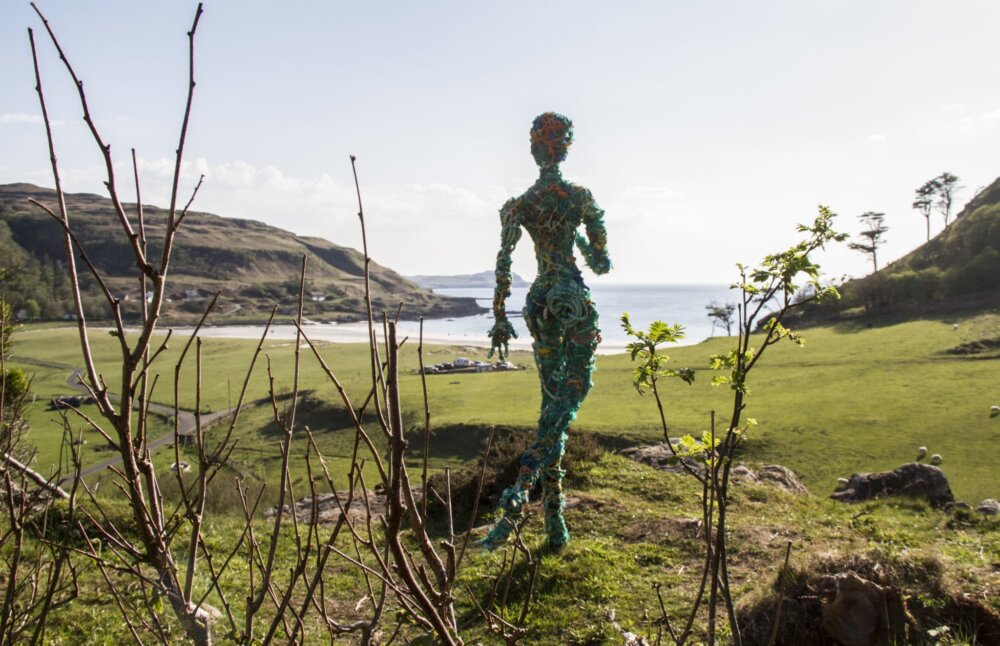
Mull and Iona Arts Trail
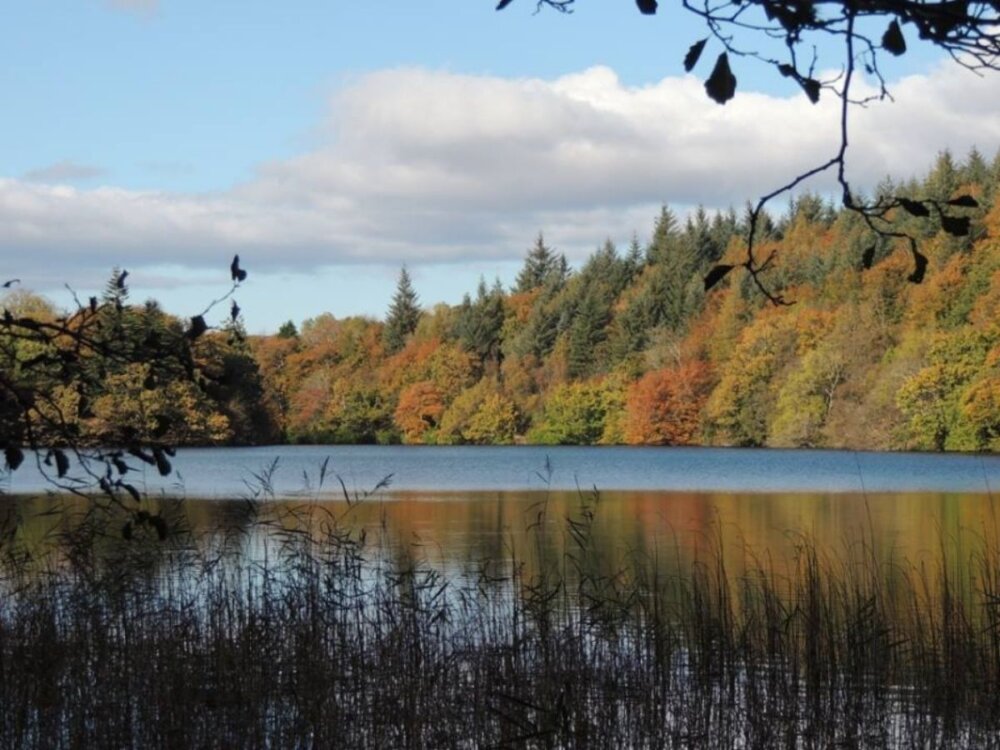
Mull and Iona Ranger Service
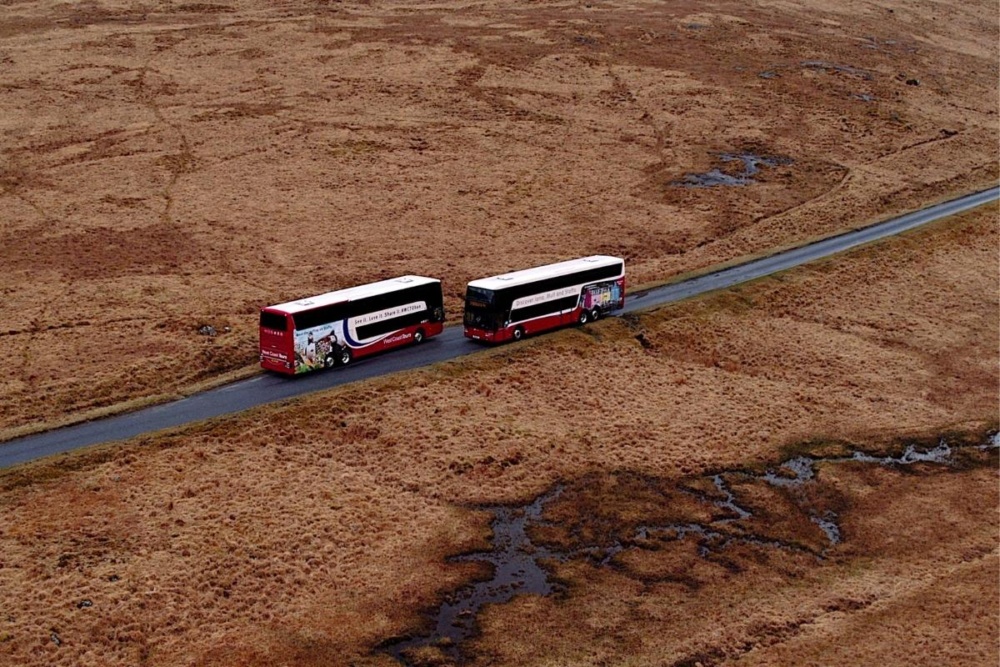
West Coast Tours
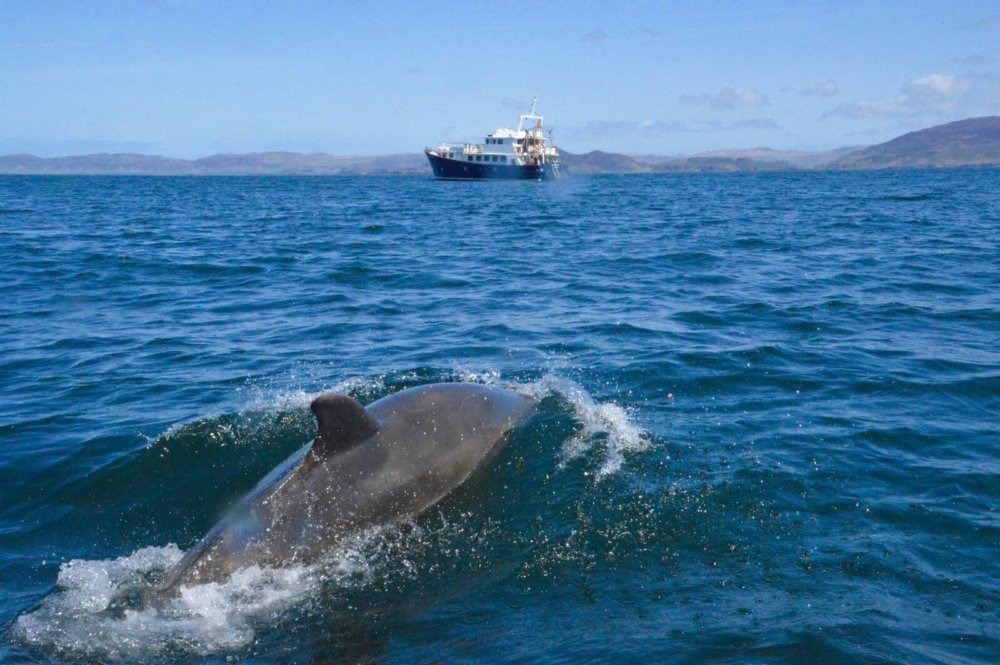
Hebrides Cruises
Follow us for the latest updates across mull & iona.
Subscribe to our Newsletter
Stay up to date with news, updates and guides for the islands of Mull and Iona.
Fingal’s Cave

Top ways to experience Fingal’s Cave and nearby attractions

Most Recent: Reviews ordered by most recent publish date in descending order.
Detailed Reviews: Reviews ordered by recency and descriptiveness of user-identified themes such as wait time, length of visit, general tips, and location information.

Also popular with travelers
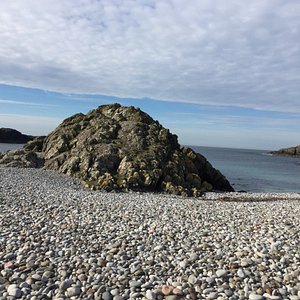
Fingal’s Cave - All You Need to Know BEFORE You Go (2024)
- (7.42 mi) Seaview Bed & Breakfast
- (7.44 mi) Caol-Ithe Guesthouse
- (7.43 mi) Staffa House
- (7.54 mi) Ardoran House
- (7.07 mi) St. Columba Hotel
- (7.16 mi) Ninth Wave Restaurant
- (7.95 mi) The Boathouse
- (7.42 mi) The Creel Seafood Bar
- (7.20 mi) Restaurant at The Argyll Hotel
- (7.16 mi) Iona Heritage Centre Garden Cafe
Fingal’s Cave

Top ways to experience Fingal’s Cave and nearby attractions

Most Recent: Reviews ordered by most recent publish date in descending order.
Detailed Reviews: Reviews ordered by recency and descriptiveness of user-identified themes such as waiting time, length of visit, general tips, and location information.

Also popular with travellers

FINGAL’S CAVE: All You Need to Know BEFORE You Go (with Photos)
- (7.42 mi) Seaview Bed & Breakfast
- (7.44 mi) Caol-Ithe Guesthouse
- (7.43 mi) Staffa House
- (7.54 mi) Ardoran House
- (7.07 mi) St. Columba Hotel
- (7.16 mi) Ninth Wave Restaurant
- (7.95 mi) The Boathouse
- (7.42 mi) The Creel Seafood Bar
- (7.20 mi) Restaurant at The Argyll Hotel
- (7.16 mi) Iona Heritage Centre Garden Cafe
- Skip to primary navigation
- Skip to main content
- Skip to primary sidebar
- Skip to footer
TravelAwaits
Our mission is to serve the 50+ traveler who's ready to cross a few items off their bucket list.
7 Reasons To Visit Fingal’s Cave In Scotland

Altosvic / Shutterstock
- Activities and Interests
- Destinations
- History and Culture
- Outdoor Activities
- United Kingdom
Located just off the southwest coast of Staffa, Fingal’s Cave is one of the world’s most popular sea caves. It’s a breathtaking natural wonder composed of gorgeous hexagonal columns formed millions of years ago by massive lava flows.
If you’re traveling near western Scotland, this unbelievable site certainly deserves your attention. Here’s everything you need to know about this otherworldly attraction.

Steve Allen / Shutterstock
1. It Has Extraordinary Geometric Basalt Columns
Fingal’s Cave seems like something from a science fiction movie. Perfect hexagons grace the symmetrical columns, creating a strange sense of unease or wonder (depending on the viewer).
The scientific explanation for the hexagons is fairly simple, and unfortunately, it doesn’t involve aliens. Millions of years ago, lava flowed across the site; as it cooled, it fractured perpendicular to its cooling surface. Waves eroded the cave over the millennia, creating the striking geometric designs.

PaulienD_22 / Shutterstock
2. It’s Associated With An Ancient Irish Legend
The cave gets its name from Fionn mac Cumhaill (whose name is often written in English as Finn MacCool), a mythical Irish warrior who is said to have built an enormous road over the Irish Sea to fight his Norse foes.
According to legend, Fingal’s Cave is the Scottish entrance to that ancient road. The other side of the mythical “road” is a Northern Irish sea cave, Giant’s Causeway , which likely formed at the same time as Fingal’s Cave.

Eug Png / Shutterstock
3. It Inspired A Popular Overture
Fingal’s Cave owes its modern reputation to an 1829 visit by composer Felix Mendelssohn, who was overcome with the cave’s incredible acoustics. After returning from his trip, he wrote the opening piano melody from his concert overture Th e Hebrides on a postcard, which he sent to his sister.
“In order to make you understand how extraordinarily the Hebrides affected me, I send you the following, which came into my head there,” he wrote .
Over the next several years, Mendelssohn orchestrated the piece, which would become one of his most widely celebrated works.

Erik AJV / Shutterstock
4. It Has Legendary Acoustics
Mendelssohn may have been inspired by the sounds he heard in the cave — as we’ll discuss in a moment, other artists were certainly inspired by the strange acoustics and bizarre geological patterns.
Given that few sea caves share Fingal’s Cave’s geometry, it’s no surprise that the site sounds unique. The sound of lapping waves reverberates off of the arched roof, creating a comforting harmony.

5. It Has Attracted Artists For Centuries
Fingal’s Cave gradually became a major tourist attraction, and it has served as a consistent source of inspiration for some of Europe’s greatest artists.
Famous visitors have included poets William Wordsworth and John Keats, authors Jules Verne and Robert Louis Stevenson, and even Queen Victoria. Rock legend Pink Floyd even wrote a song about the cave.

Jia Li / Shutterstock
6. You Can Walk To The Entrance In Good Weather
The caveat, of course, is that the weather needs to be fairly perfect — obviously, getting trapped in a sea cave during a storm would be bad news.
Still, tourists can usually enter the cave on clear days to experience the acoustics in all of their natural glory. There’s a short path leading to the cave’s entrance, but due to recent damage , visitors can’t currently go inside.

Quaker268 / Shutterstock
7. In The Summer, Puffins Burrow Nearby
Staffa is home to more than 600 confirmed puffin burrows, so if you’re hoping to see these colorful seabirds in their natural habitat, be sure to schedule your visit during the summer.
Puffins begin breeding in April and stay near their burrows until August. During these months, lucky visitors may see them flying to the ocean for food or walking across the island shore. However, the birds are typically on the opposite side of the island from Fingal’s Cave, and you’ll stand a better chance of catching them by taking a tour of the nearby Treshnish Isles, an archipelago of small islands with higher puffin populations.
Whether you make a quick trip to Staffa on a pleasure cruise or you spend some time exploring the surrounding isles, you’ll fall in love with Fingal’s Cave. Be prepared to take photos as soon as you see it on the horizon; the approach to the cave is absolutely magical, and you’ll want to remember the experience for the rest of your life.

Brian Thomas is a professional writer with over 15 years of experience. He’s traveled extensively during that time, frequently touring the American Southwest as both a musician and a tourist. In 2019, he visited Japan and Mexico, and he’s become passionate about spreading a simple message: Traveling isn't necessarily expensive, and it's one of the best paths to self-improvement.
Visit Fingal’s Cave, the Giant’s Causeway of Scotland

Visit Fingal’s Cave and you’ll understand why it’s been inspiring artists for hundreds of years. Turner painted it, Wordsworth wrote a poem and Mendelssohn composed a piece of music to capture the sound of the waves crashing into it. As you sail up to Fingal’s Cave you’ll see its imposing black columns rising up out of the sea like a temple hacked out of the rock. It’s an extraordinary sight from a boat but it’s even better when you go inside. Once in the vast sea cave you can experience the remarkable acoustics that led to it being called ‘The Cave of Melody’ and see the extraordinary geological formations up close.

Fingal’s Cave was visited by the Vikings who named Staffa after their word for the logs their houses were built from but it was the botanist, Joseph Banks, who brought it to the attention of the world after his visit to Fingal’s Cave in 1772. At the time, the Romantic Movement was spreading across Europe, highlighting wildness, natural beauty and emotion and the wild beauty of Staffa and Fingal’s cave soon became a must-see sight on the Grand Tour.

You can visit Fingal’s Cave today on a boat trip from the island of Mull or from Oban on the mainland. As you approach Staffa across the sea you’ll see the cave in front of you. From some angles it looks like two floppy hats floating on the surface of the water, their rims a medley of colours from brown to ochre, cream and dark grey. As you get closer you can see the distinctive black pillars rising out of the sea and the huge openings leading to the entrance of the caves.

Most boats take you right up to the entrance of Fingal’s Cave. Our boat then docked at the landing stage so that we could spend an hour exploring the cave and the island. It’s not difficult to make your way across the rocks to go into the cave itself. The walk along the black hexagonal-shaped rocks feels like stepping into a mathematical puzzle. Tall columns rise up into the air on your right hand side as you edge your way around to the entrance. Climbing into the mouth of the cave is an otherworldly experience as you listen to the sounds of the sea playing melodies in your ears as it crashes agains the rocks and gaze up at the stunning geological formations on the roof of the cave.

After visiting Fingal’s Cave we climbed up the hill to explore the island itself. Staffa is only half a mile long and a quarter of a mile wide and from the top you can see from one side of the island to another. Up here you’re in classic Scottish scenery: purple heather grows in the grass banks and seabirds swoop in and out of the water. The views across the sea are stunning. It’s hard to imagine a more beautiful spot for a picnic. With everyone else on our boat dispersed over different parts of the island it felt like we had the whole of Staffa to ourselves.

It’s not unusual to spot dolphins and porpoises as you sail from Mull across to Staffa and if you’re really lucky you might see a minke whale or a basking shark. Sailing back towards Mull you pass the island of Ulva, Scotland’s newest community-owned island. You can also see Inch Kenneth, a tiny island where several ancient Scottish kings are said to be buried. It’s famous for being the last home of Unity Mitford, the notorious aristocrat and friend of Adolf Hitler who lived as an invalid here after shooting herself in the head when Britain declared war on Germany in 1939.
But it was Fingal’s Cave that was the highlight of our trip. It’s an extraordinary sight and a must-see on any trip to Mull and the Inner Hebrides.
Turus Mara runs small boat trips to visit Fingal’s Cave and Staffa from the Ulva ferry dock on Mull. During the puffin breeding season from April until early August you’ll spend an hour on Staffa and two hours on Lunga. Check the website for more details. The boat trips can book up weeks in advance in the summer months so book as early as you can.
Do you love CAVES? We’ve got guides to cave cities in Italy , the most beautiful caves in Vietnam , cave churches in Southern France and luxurious cave hotels . Take a look at:
Underground Secrets and things to do in Saint-Émilion
Guide to Matera, Italy’s City of Caves
The Incredible Paradise Cave in Vietnam
Sleeping in a Cave Hotel in Matera

You may also enjoy:
Fun ideas for days out with dogs, hotel in snowdonia: plas weunydd, the best city breaks for families in …, the harry potter london guide.
Went here with the kids, and they kept saying that the cave looked like an elephant!
I can definitely see an elephant too!
Thanks for sharing the photos! My first impression to Scotland is the butter cookies ahahah
You’re very welcome. They make the best biscuits in Scotland, don’t they?
Leave a Reply Cancel reply
Your email address will not be published. Required fields are marked *
By using this form you agree with the storage and handling of your data by this website. *
Notify me of follow-up comments by email.
Notify me of new posts by email.
This site uses Akismet to reduce spam. Learn how your comment data is processed .
This website uses cookies
Privacy overview.

5 Fingal’s Cave Tours You for EPIC Landscapes
Affiliate Disclaimer
This site is user-supported and that’s why we use affiliate links. At no extra cost to you, we get a little bit of money when you purchase something through one of our links. Thank you for helping support sustainable travel. You can read more about our affiliate disclosure policy here .
Scotland is the holy land of hidden treasures, and is full of beautiful scenery, iconic wildlife, and rich and fanciful mythology.
Whether you’re a native, or just a wandering soul stopping by this incredible country, there are multiple buckle list pitstops you can make – and more often than not, most of them are off the beaten track.
Those heading north will not regret indulging in a Fingal’s Cave tour. We look at the best of what’s on offer.
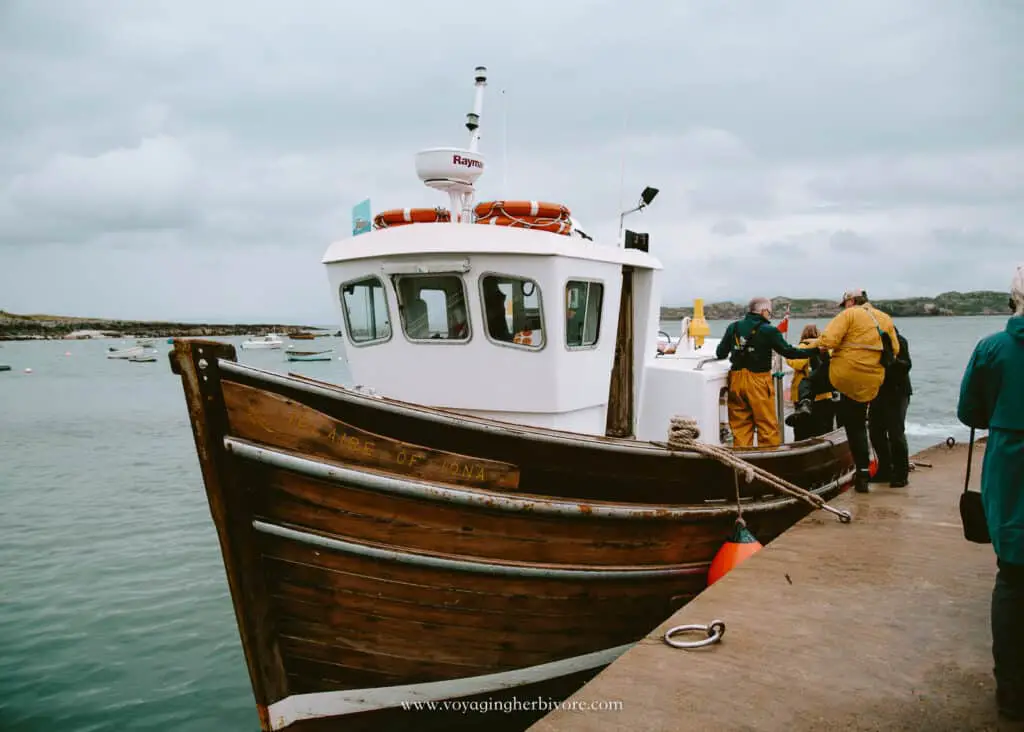
Table of contents
Where is fingal’s cave, why visit fingal’s cave, 1. staffa, fingal’s cave & iona morning tour, 2. iona, mull & isle of skye tour, 3. isle of mull & iona small-group tour, 4. loch ness, glencoe & the scottish highlands tour, 5. magical mull, iona & west highlands small-group tour from edinburgh, fingal’s cave tours faqs, final thoughts, more scotland posts, pin fingal’s cave tours.
Fingal’s Cave can be found on the Isle of Staffa on the North Sea, which is in the Inner Hebrides of Scotland.
This is Why You Need to Visit the Isle of Staffa
The island, which was discovered in 1772, is uninhibited and is currently owned and preserved by the National Trust, and is accessible only by boat. The rock formation that makes up the island was initially formed by lava flow and is more specifically known as hexagonally jolted basalt columns.
The cave was discovered and put on the map by the 18th-century naturalist, Sir Joseph Banks, a year after the island’s initial discovery.
Fingal’s Cave is famous for many things, but most notably, its natural acoustics. The island measures at roughly half a mile in both length and width and can be easily explored in just a few hours.
Over the years, Fingal’s Cave has piqued the interest of some pretty famous faces, including Sir Walter Scott, Robert Louis Stevenson, and even Queen Victoria.
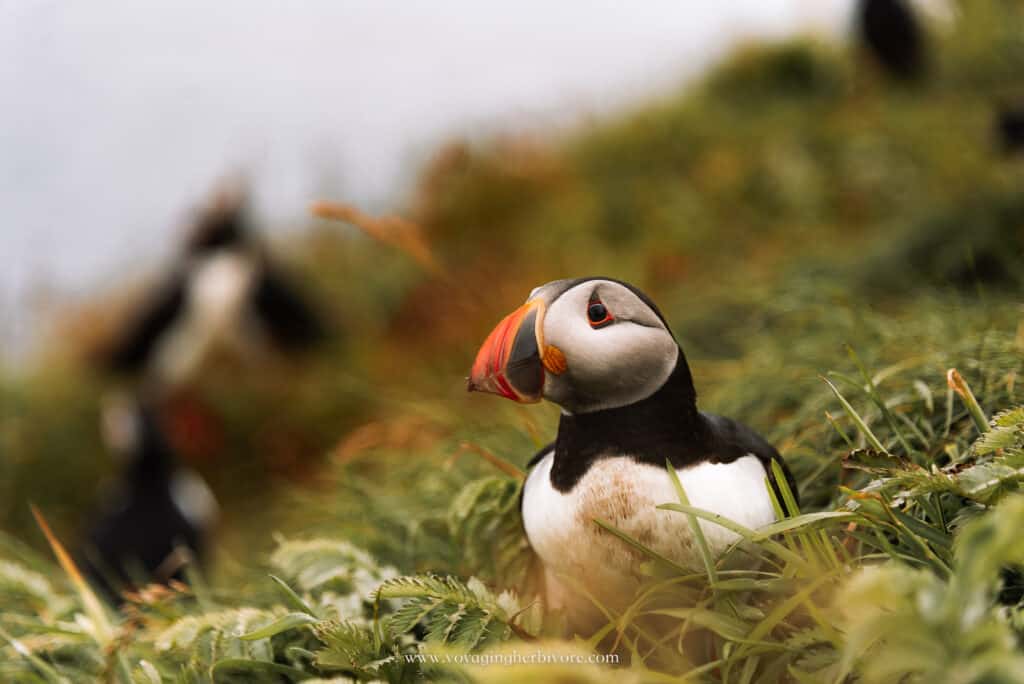
Aside from the stunning aesthetic of the cave, which depicts hardened flowing lava, there are many reasons to spend an afternoon perusing the magical Fingal’s Cave.
The basalt columns are quite the sight to behold, and almost resemble a frozen waterfall. Also, those of you who consider yourselves history buffs and/or Scottish folklore fanatics will enjoy the rich Gaelic origins of the cave.
Fingal’s Cave inherited its unusual name by way of a famous poem in James MacPherson’s collection of poems, known as Ossian, which are based on Scottish and Irish Gaelic folklore and mythology.
In terms of mythology and folklore, Fingal’s Cave has connections to the Giant’s Causeway in County Antrim in Northern Ireland, which is an area made up of roughly 40,000 basalt columns, which interlocked after a volcanic fissure eruption from roughly 55 million years ago.
The cave is also similar in structure to Ulva, another island in the Inner Hebrides, which, unlike the Isle of Staffa, is populated, and has been since Mesolithic times.
So it’s safe to say it’s pretty rich in history!
@voyagingherbivore This isnf Iceland… it’s actually an island off the cosst of #Scotland . 📍 #FingalsCave is not for the faint lf heart, but it is a pretty spectacular thing to see! #scottishisles #isleofmull #hiddenscotland #scotlandhiddengems ♬ original sound – Alysa
If you visit Fingal’s Cave, you can also marvel at the many sights to be seen, including puffin watching, whale or basking shark watching, and gazing at the Isle of Iona, which can be seen framed by the inside of the cave.
In short, it is a dreamscape for lovers of geology, wildlife (particularly seabirds), and cave explorers!
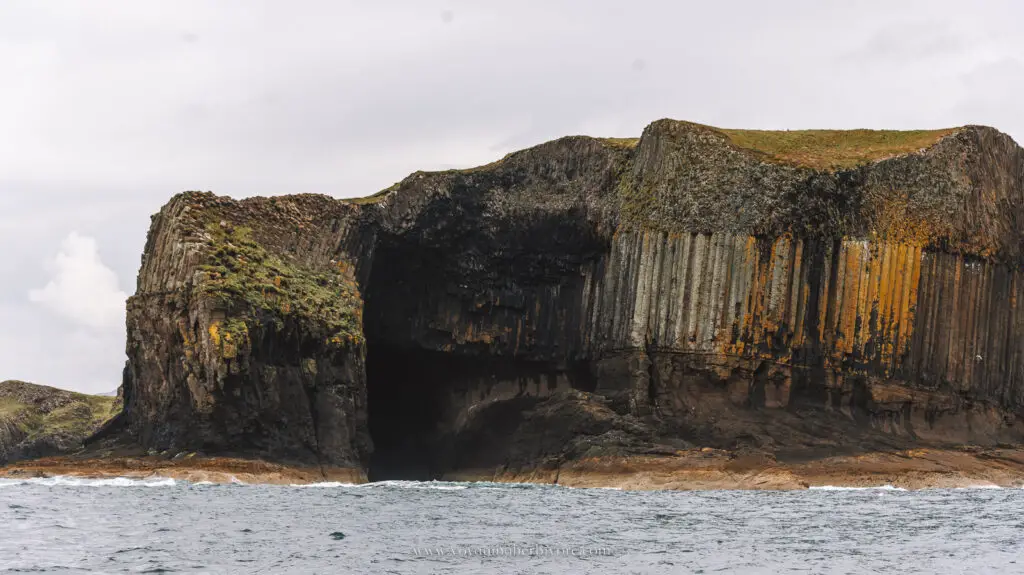

5 Fingal’s Cave Tours to Try in 2023
So, now that we know there’s much to behold when visiting Staffa Island, let’s look into some of the best Fingal’s Cave tours available in 2023.
First of all, it’s important to take certain factors into consideration before booking a tour:
- Tours are only available between the months of April and late October.
- All trips and landings are via boat and are subject to the day’s weather and sea conditions.
- Even in the summer months, the North Sea can be chilly, so do bundle up.
Now that we’re in the know about those advisories, let’s look at tours available to book.
- Tour length: 3 hours
Visit the moody, atmospheric Fingal’s Cave by way of Iona or Fionnphort and take in the sights that have captivated so many people over the years.
Not only can you explore in awe of the dramatic rock formations that have stood the test of time – all 59 million years of it – but you can breathe in the fresh North Sea air, explore the cave itself, and – if you’re really lucky – get to witness some of the wonderful native wildlife, such as puffins, gannets, porpoises, basking sharks, dolphins, sea otters, guillemots, and many more.
Read the Complete Guide on Puffins here: Puffins in Scotland: Where, When & How to See Them
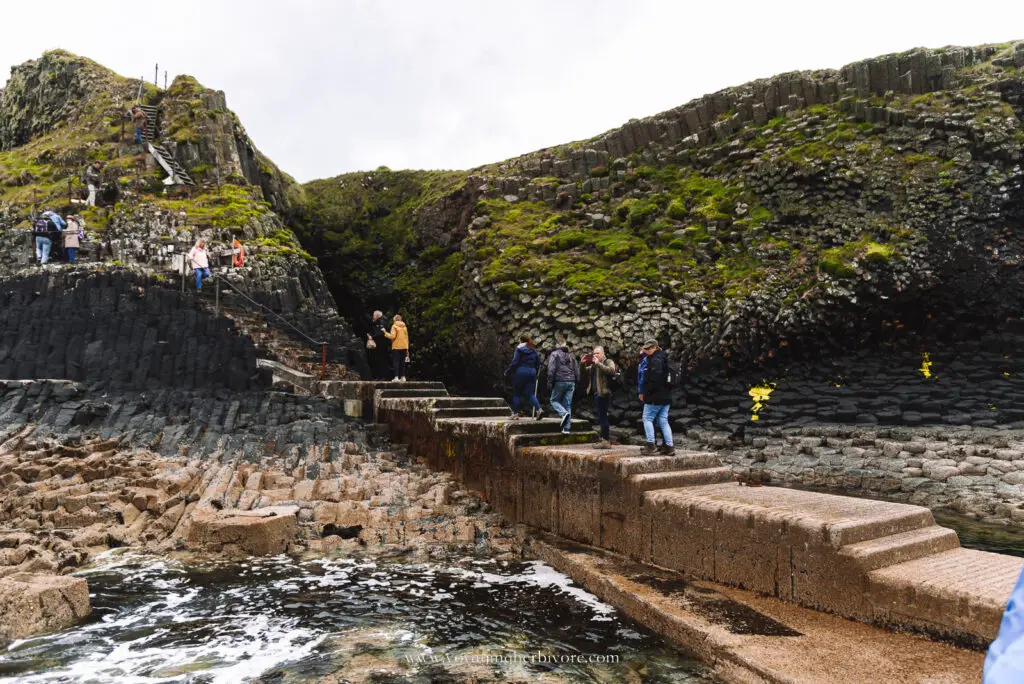
- Tour length: 5 days
If a morning tour just isn’t enough time to quench the thirst for exploring the northern gems of Scotland, perhaps a five-day tour is in order.
This incredible tour allows you to get personally acquainted with the rugged rocks, magnificent mountains, lovely lochs, bone-warming whiskey, and awe-inspiring abbeys that the Highlands are known for. And yes – a trip to Fingal’s Cave is included.
Read More: 8 Things to Do on the Isle of Mull
Where you’ll be going:
- Loch Lomond National Park
- Iona & Staffa
- Fingal’s Cave
- Isle of Skye
- Eilean Donan Castle
That list should add a few ticks to that bucket list, no?!
- Price: ££/£££
- Tour length: 3 days
The sweet spot between a one-day tour and a five-day tour is, of course, a three-day tour.
Read More: 7 Best Isle of Mull Cottages For Your Next Holiday
This intimate small-group tour is ideal for those who love to explore various locations, without the headache of organising (or driving to) the event.
This tour allows you to travel in the comfort of a 16-seater Mercedes minibus, while experiencing the incredible scenery (not to mention local whisky and food) while being driven by an expert tour guide.
To add to the ease of the experience, you won’t need to arrange accommodation – a two-night stay in a hotel or B&B are included within this package.
- Loch Lomond
- Tobermory town
- Isle of Staffa (optional)
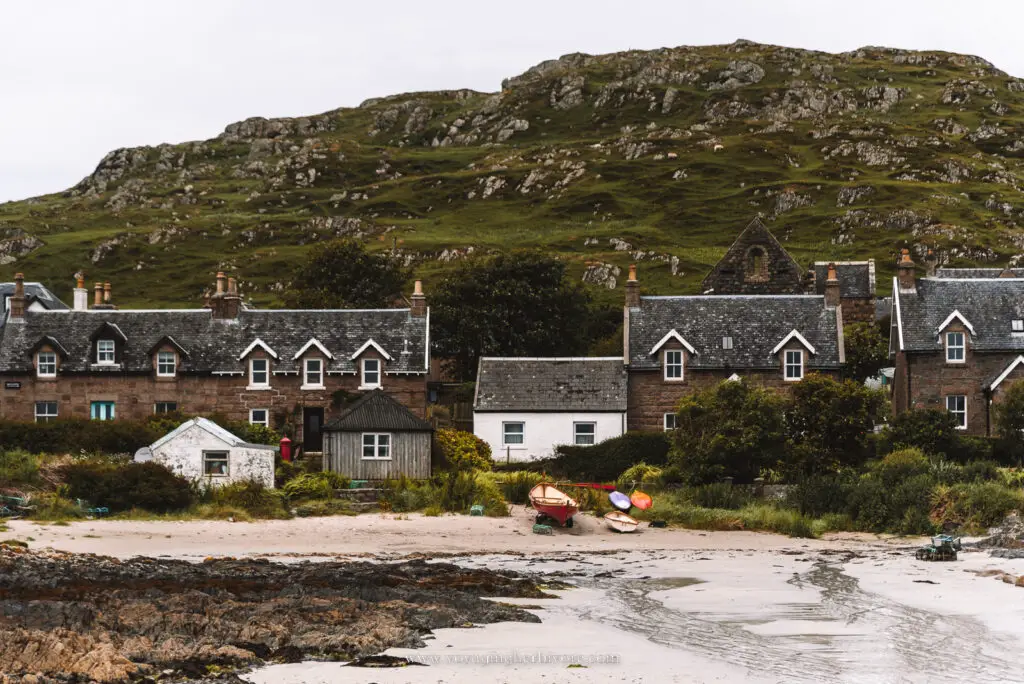
- Price: £/££
- Tour length: Full-day
If Fingal’s Cave and Loch Ness are both on your bucket list – you’re in luck!
Prepare for a full day of Highland adventure with this day-tour that covers Loch Ness, Glencoe, and other optional detours.
Learn all about the Highlands history with a driver/guide doing the legwork of the tour for you – and the best part? This tour is part-customisable, allowing you to add certain pit stops you just have to see.
Not only do you have a chance at witnessing Scotland’s most legendary native, Nessie, but you are also very likely to see some other national treasures – Highland cows!
This tour includes:
- Transportation on an air-conditioned bus
- An expert tour guide, which includes a live commentary
- Loch Ness boat cruise (optional)
- Urquhart castle visit (optional)
- Tour length: 4 days
Last but not least, this magical four-day tour allows you to explore the magnificent Mull, Iona, and the West Highlands in a small, intimate group for a more personalised experience. I actually went on this tour with my family and LOVED it! Mull is absolutely stunning and this was a perfect tour with plenty of photo stops and truly breathtaking landscapes.
Read More: A Guide to Visiting Iona Island in Scotland in 2023
This tour departs from the beautiful city of Edinburgh, therefore is ideal for those exploring the more urban areas of this incredible country, as well as the mythical nooks and crannies that are off the beaten track.
Accommodation is included and a local whisky distillery tour is recommended!
- Three-night stay in Tobermory, a picturesque seaside town.
- Tours of the islands, including Iona Abbey – where ancient Celtic kings are buried.
- Exploring Neolithic burial grounds, including The Valley of Ghosts.
- Touring includes being chaperoned in a fully-guided minibus.
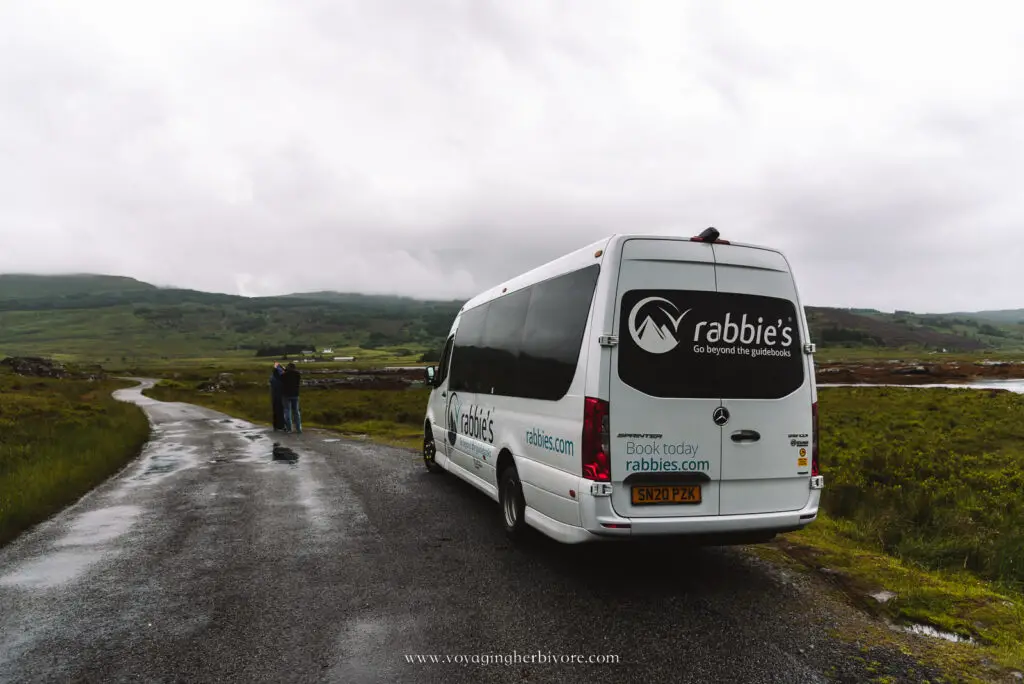
At low tide, visitors can explore the inside of Fingal’s Cave via a walkway. It’s important to note that the walkway is thin and slippery with very dangerous drops down the side. There is a handrail attached to the wall, but there’s nothing between you and the waves below.
Aside from both being formed from lava, which, when solidified, resulted in the hexagonal columns that they are both famous for, Fingal’s Cave and Giant’s Causeway are said to have been quite literally connected at one point. Because the two sites were created by the same ancient lava flow, it is believed that at one point in history there may have been a lava rock “bridge” that physically connected them.
There is a legend associated with Fingal’s Cave, which is typically known as “Uamh-Binn”, or “The Cave of Melody”, which coincides with the belief that Fingal’s Cave was once physically linked to Giant’s Causeway. According to Celtic and Gaelic legend, this bridge wasn’t the creation of a natural event, but instead was built by an ancient Irish giant named Fionn mac Cumhaill, who was said to be friendly and harmless.
Before embarking on a tour, please be mindful that: The island is completely uninhibited. That means there aren’t any toilets, cafés, or gift shops. Appropriate footwear is imperative, owing to slippery and uneven rocks. The island is owned by the National Trust, so it is only accessible via local licensed tour companies.
Fingal’s Cave is a perfect example of the wonders of nature, and is a beautiful Scottish landmark that simply must be visited whenever in the country.

What Camera Gear Do We Use?
- Camera body : Nikon d750
- Phone : iPhone 13 Pro
- Favorite Multipurpose Travel Lens: 24-120mm f/4
- GoPro : GoPro Hero 8
- Drone : DJI Mavic Air is no longer available so we recommend the DJI Air2S
- Camera Bag: Wandrd Prvke 31L
- Tripod : ESDDI Aluminum Tripod
If you want the full list of things we keep in our camera bag, check out the complete guide or browse our photography guides .
Free Resources

And as always, you can find more sustainable travel content on Instagram @Voyaging Herbivore , Youtube , and TikTok and to get updates straight to your inbox, enter your email below.
If you found this guide helpful and want to help us keep these resources free, please consider making your next Amazon , Expedia , Hostel World , Etsy , Trivago , and Booking.com purchase through our links (just click right on those words – you can do it right now and unless you clear your cookies before your next purchase, it will remember). It costs you no extra and gives us a small commission. Thank you!
By submitting this form you acknowledge that the information you provide will be processed in accordance with our Privacy Policy. You can unsubscribe at any time.
You have successfully joined our subscriber list.
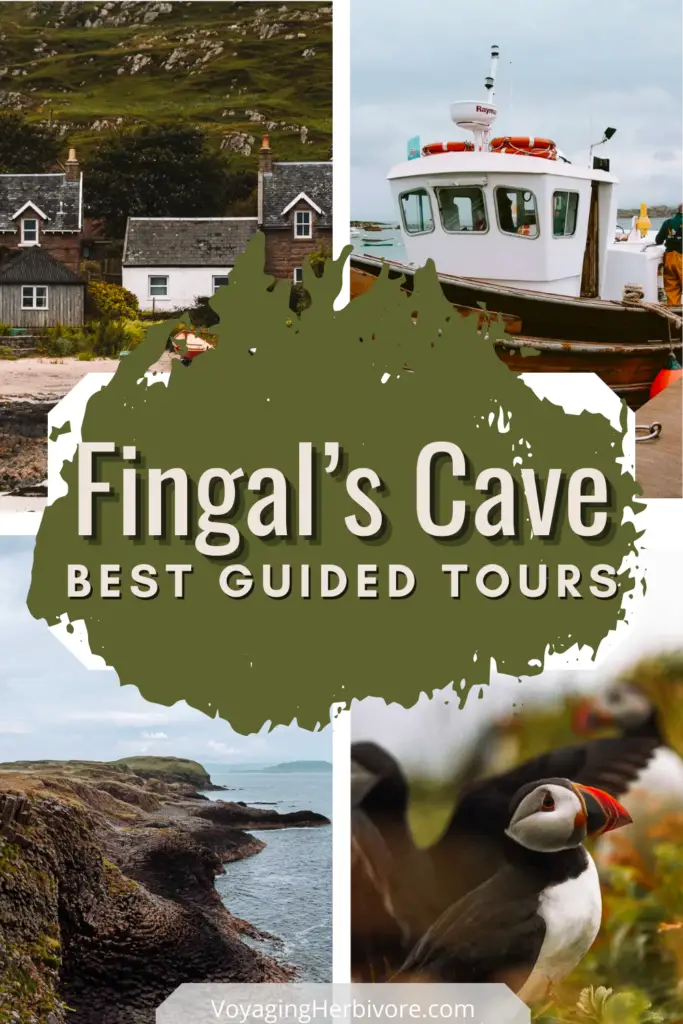
Leave a Reply Cancel reply
Your email address will not be published. Required fields are marked *
This site uses Akismet to reduce spam. Learn how your comment data is processed .

The Three Sisters Glencoe: A Guide
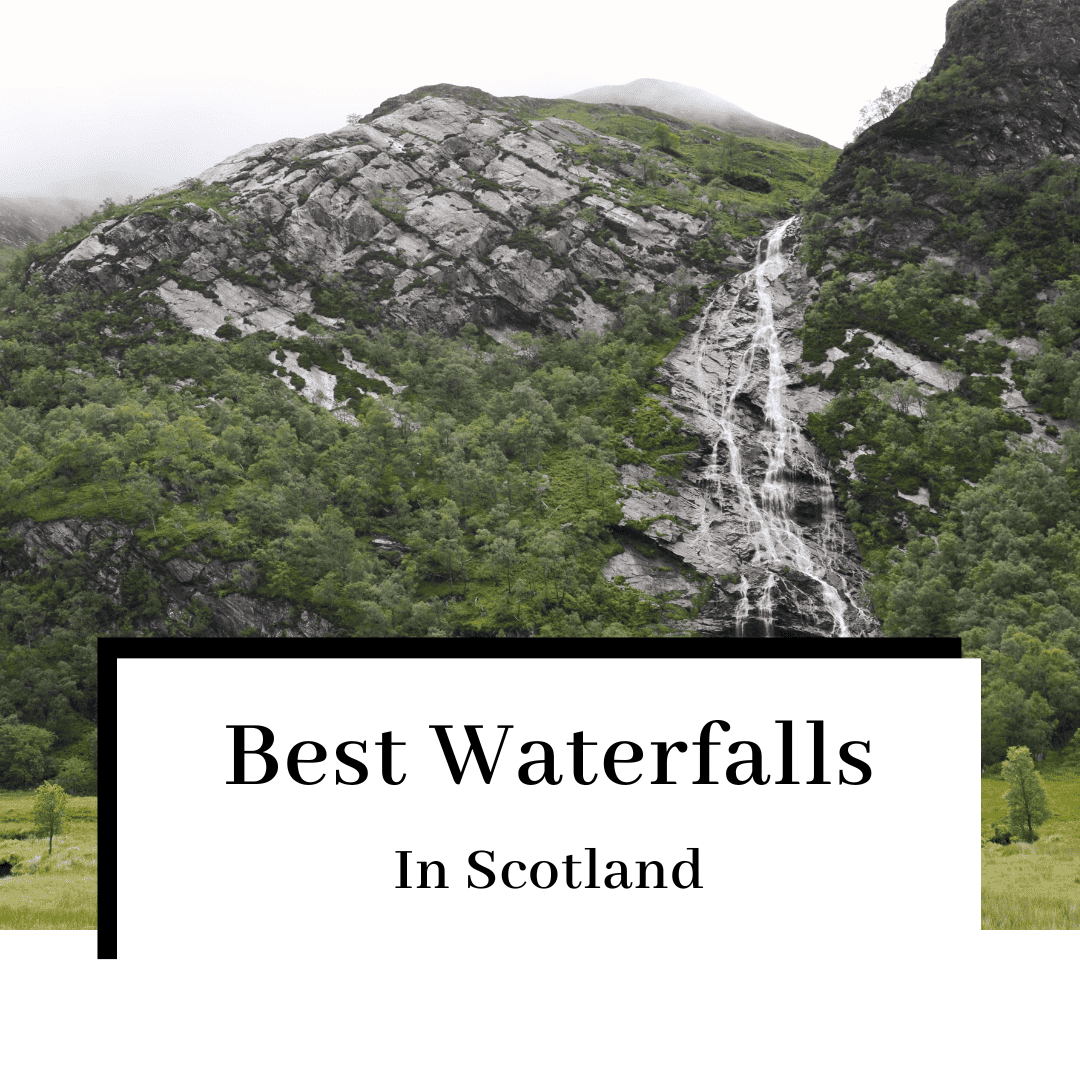
10 Best Waterfalls in Scotland for 2024 Adventures

Hopetoun House: Outlander, History, & More
- Book a trip
Your browser does not support the HTML5 video element.
All Oban based trips must be booked direct with Turus Mara.
- From £20.00‐£40.00
Trip Details
**Times from Oban subject to confirmation of Calmac 2024 Summer timetable.
Passengers from Oban join the 12:15 Calmac ferry to Craignure, where our minibus awaits to transport you to Ulva Ferry to join the Turus Mara tour.
This trip from Oban is an opportunity to combine a boat trip to visit Fingal’s Cave on Staffa with a little bit of Puffin Therapy (May – July) too!
Turus Mara team up with Caledonian MacBrayne to run trips for those staying in Oban and surrounding areas. On this tour you will join the Ferry in Oban for the 45 minute journey to Mull ( NOTE: you pay for and pick up your Calmac tickets on the day of travel ). From the start of your trip you will have great views of Oban Bay, then the Firth of Lorn, Lismore and the rugged South East corner of Mull including the imposing structure of Duart Castle backed by Ben More and the central Mull mountains.
Transport is provided from the Ferry Terminal at Craignure, through the Loch Na Keal designated National Scenic Area (NSA) to join our trips from Ulva Ferry. Keep an eye out for otters in the loch and both Golden and Sea Eagles as you skirt the loch across from Mull’s largest mountain and only Munro, Ben More.
Your transport arrives at Ulva Ferry with plenty time to join the boat to Staffa – a trip of around an hour cruising via the stunning south side of the community owned Island of Ulva. We will almost certainly encounter common seals and various bird species on this leg of the journey as well as having the opportunity to spot whales, dolphins and other sealife.
On to Staffa and a visit to Fingal’s Cave. On good days follow in many famous footsteps along the causeway and imagine you can hear the first few bars of Mendelssohn’s Overture in the eternal surge of the sea.
Puffins nest on the North East corner of Staffa and visitors can enjoy a little bit of ‘Puffin Therapy’ on most days until early August when the breeding season comes to an end.
The boat ride back to Ulva Ferry to rejoin your transport back to Craignure will usually head back in via Loch a Tuath, allowing for the circumnavigation of Ulva, giving lots more opportunities to spot wildife.
What have our customers said
Discover our range of trips, treshnish isles and staffa wildlife tour from mull (restarts april 2024), treshnish isles and staffa wildlife tour from oban (restarts april 2024), staffa tour from mull, big bird trip from mull, iona and staffa tour from mull, staffa & treshnish isles wildlife tour from oban (from 1st aug 2024), book a trip with us.
Connecting the Dots
Share . the . meal, destinations:, the guide & map to top 10 best beaches in crete island, greece, guide to staffa island & fingal's cave tour from oban, scotland, history guide to schönbrunn palace gardens, zoo & monuments, vienna.
Thank you for visiting Connecting the Dots Journal's official website!
You got lucky! We have no ad to show to you, if youu want to support my work in a different way, please, subscribe to newsletter or become a Patron
Home > Places > Scotland > Guide to Staffa Island & Fingal’s Cave Tour from Oban, Scotland
June 7, 2023
Active life , earth science , history , mythology , tour , travel.
…this superb monument of nature, which in regard to its form bears so strong a resemblance to a work of art, though art can certainly claim no share in it. – Barthélemy Faujas de Saint-Fond, 1784
Quick Navigation
Approaching Staffa Island
Do you ever wonder why people are so fascinated by traveling? I, personally, think it is one of those questions with an answer within it. People love to wonder… People love to wonder what is like in other countries. How people are living over there? How does local food taste like? Are people more beautiful over there? Is life better or worse compared to theirs? One thing of what I love to wonder about is how the landscape changed the life of local culture, and, especially, how it shaped the history.
I cannot help myself, but wonder, how did it look like when the Vikings accidentally hit Staffa island. Imagine bloodthirsty warriors, who put their axes aside just to take the paddles instead, rowing hundreds of miles on a relatively small boat toward a foreign land, to kill or conquer whoever lives other there. It is raining, of course, and the weather is somewhat as you could imagine when the Vikings go to conquer Celtic people in Scotland. The atmosphere is tense, but it only gets louder once they approach Staffa island. To their surprise, or maybe not, what they saw was very similar to the appearance of their homes built out of wooden staves. They named the island staffi-oy (from Old Norse pillar or stave).
The Cathedral of Sea
To human beings thinking more in a symbolic way than we do today, that must have been a sign from the Gods, which, at least, resulted in an extra rally of the troops. I imagine that confidence was the main weapon of these berserker warriors. Thus I wonder what if they didn’t bump into the Island before the battle? Would they still have ended-up as victorious in battle? If not, would there have been an impact on the occupation of Scotland by the Vikings which lasted for seven centuries? All of this could have been because of the right conditions millions of years ago, which formed truly unique rock formations resembling the houses of the Vikings up in the North. What are the odds?
If you still are not amazed by the impact of all the conditions these rocks had to bear to get this surprising geometrical shape, let me remind you that it is the only reason you will ever want to end up in that place of the world. It was definitely the reason I went there. Now let me tell you a bit more about the formation of Staffa Island and all the people who visited the place. Without a doubt, it is among the top destination in Scottish Highlands .
Staffa Island Tour Details
- Difficulty: Cruise will be canceled if it is too dangerous
- Duration: 2-12h
- Starting Point: Oban or Isle of Mull (Ulva Ferry)
- Destination: Staffa Island, Inner Hebrides
- Tours : Calmac & Turus Mara or StaffaTours
- Price: from £35 to £73 (depending on tour and starting point)
- Best time to visit: May-July
- Accomondation: Oban & Craignure
Map of Staffa Island Tour from Oban
You got lucky! We have no ad to show for you. If you still want to support my work in a different way, please, subscribe to newsletter or become a Patron
Facilities in Staffa Island Cruise Tour
As you may expect, Staffa island is uninhabited and almost untouched by the civilization. Except a staircase and life circle, there are not many signs of civilization either. Be sure to get your food for the day in Oban. The tour boat should be able to supply you with the most important needs like water or bathroom.
Possible Tours to Staffa Island from Oban
While the situation might vary from year to year, the show in Oban is run by two competing companies: Staffa Tours and Turus Mara in partnership with CalMac. I don’t want to promote one over another, so it is up to you to decide which one provides a better service. My personal choice was made purely on the route. If I happen to feel like I want more beaches than more rock formations that day, I would have gone with Staffa tours instead of Turus Mara. Hopefully, the following list will be more than enough to find the best tour from Oban for you.
Staffa Tours
- Staffa Island Tour (3h | £ 30, €35, $37/person)
Calmac & Turus Mara Tours
- Various Tours
Other Companies:
- West Coasts Tours
- Staffa Trips
From Other Cities:
- Scotland: West Highlands, Mull and Iona 4-Day Tour from Edinburgh (4days | £571, €663.46, $709.43 /person)
- Isle of Mull and Iona 3-Day Small-Group Tour from Glasgow (3days | £403, €468.26, $500.70 /person)
Staffa Island
If I said that Staffa Island is one of the most beautiful natural wonders in the whole Britain, you would probably think that I’m exaggerating just to make this article more interesting, or to attract more readers. I’m not even using my own words to state that, but the will of the British people themselves as some of the polls say. Many people have visited Staffa island, but only a handful was left unsurprised. From Vikings to local Gaels, from many English to foreign tourists, ages after ages this island sprung the imagination of all the visitors.
Tent on Staffa island, Hebrides, Scotland Photo Mantas Ališauskas [ CC BY-SA 4.0 ], via Connecting the Dots Am Buchaille (The Herdsman) near Staffa island, Hebrides, Scotland. Photo Mantas Ališauskas [ CC BY-SA 4.0 ], via Connecting the Dots
Though being one of the smallest islands in whole Southern Hebrides, on Google, Staffa gets more attention than the Hebrides itself. Uninhabited, it was once home to as much as 16 people somewhere in the 1700s. Later on, in the 1800s three red deer lived on the island, just to be replaced by goats after whom came herd of black cattle. After many private owners, only in 1986, the island was gifted to the National Trust of Scotland by advertising executive Jock Elliot, who brought Ogilvy from scratch to the biggest advertising company in the whole world after he bought Staffa Island for his wife 60th birthday. Today Staffa island is taken over by tourists and seabirds, most noticeably, puffins.
The Legend of Fingal
The key feature of Staffa Island – Fingal’s Cave – is named after the hero of an epic poem – Fingal – by James Macpherson (1762), the poem is based on ancient Gaelic Legends and foretells an epic story about the King of Northwest Caledonia (The name given by Romans to the territories above of Adrian’s wall, basically, modern Scotland), who comes into the defense of Ireland against fierce Swaran, the King of Lochlin, and Lochlainn forces (Gaelic term for Norse). Unfortunately, Fingal and Caledonians arrived late, the remaining Irish forces were already fleeing. The defenders engaged the enemy and after a hard battle, they defeat the Lochlainn and notoriously forbid them to return to Ireland in a hostile manner ever again.
…Who can meet Swaran in fight? Who but Fingal, king of Selma of storms?… – Fingal: an Ancient Epic Poem
Fingal’s Cave – The Melodious Cave
As nobody will be left unaware of this story during any trip to Staffa Island, Felix Mendelssohn was inspired to write “Hebrides Overture” during his visit to the cave. When the composer was brought to Staffa island, the melodious sound of waves in the Fingal’s Cave left him in awe which is not that surprising. After all, Gaels of Scotland knew the musical features of cave already. The old Gaelic name for Fingal’s Cave is An Uamh Bhin, meaning “the melodious cave”.
Puffin Colony on Staffa Island
Depending on your interests and your tour route, it is possible to have a mini “Puffin therapy” right on the other side of Staffa island to Fingal’s Cave. I know we all want to see and witness all, but if you are on the Treshnish Isles Wildlife tour, just skip the puffins. They are not the reason why this island is so amazing. Instead, embrace the beauty of Fingal’s Cave and unique polygon rock formations. If there is some spare time, climb up the stairs near the docking spot and spend it on the top of the southern side of Staffa, where the gorgeous rock face reveals itself to the endless ocean.
View from the top of Staffa Island, Hebrides, Scotland. Photo Mantas Ališauskas [ CC BY-SA 4.0 ], via Connecting the Dots Stairs to the top of Staffa Island, Hebrides, Scotland. Photo Mantas Ališauskas [ CC BY-SA 4.0 ], via Connecting the Dots
If it is your only chance to see a puffin colony, I could give you this one, but have in mind that despite the absolute amazingness of these charming birds, the geological miracle that Staffa island is, is barely paralleled by anything else around the world.
Puffin Watching Tours
If you are still itching to see the puffins, just go to a tour which includes both Staffa and the Treshnish isles. This will give you 1 hour on this wonder of nature, and 2 hours to meet puffins and their close relatives: razorbills and guillemots. That was my personal choice because both puffins and Staffa are worth your time and the price. I’m just afraid that if it is done at the same time, it is impossible to properly experience either of those. You can read more about my encounter with the birds here .
Is it dangerous in Staffa Island?
As for today in August 2019, Fingal’s Cave is closed due to security reasons. It is a no-brainer, entering the cave is dangerous. As for everything else, like most of the things, it depends on weather conditions, gear, and cautiousness. The top of Staffa island is basically green fields and the rest is made of natural stairs. I wouldn’t go too close to the cave if the waves are hitting it too much, but otherwise, it should be fine if you are wearing shoes with a deep protector. Sometimes, the beauty of the island could be the deadliest thing, it is hard to keep watching every step while there is a surprise after every corner. Take your time, walk carefully, stop, take a picture, repeat. If you’ll stick to these steps, Staffa island will be a pleasant surprise – the natural cathedral of the sea.
Geology of Staffa Island
I could bet that the first question which comes to the mind of a person who saw geological structures like they are on Staffa island would be something like – who the hell built this? And if it is not built by humans or Gods, then by who? For something as geometrical as the pillars found on Staffa, Giant’s Causeway or few other sites, the natural formation seems like an unlikely origin.
How did the Rock Formations of Staffa Island had Formed?
We are used to the more chaotic nature of… the Nature, but it is rather counter-intuitive. The example I like of naturally occurring geometrical shapes I like is the hexagonal form of a honeycomb. This choice of bees might look strange, but the reason for it is not sophisticated.
There are only two geometrical shapes which could join each other together without leaving an empty space: rectangle and hexagon. The latter has a clear advantage over its competitor because hexagon shares its walls with six different hexagons while rectangle only does so with four. Therefore, you need to build fewer walls for the same number of holes, and the overall area of honeycomb is bigger than the one of a hypothetical counterpart made out of rectangles. Hexagon is just a more efficient shape and it happens to be that most of the pillars found on Staffa island are hexagon as well.
Columnar Jointing
So far, we have cleared some clouds behind the mystery, but, still, any of that doesn’t explain why the pillars had to form on the island in the first place. Let’s start simple. Staffa Island is made out of three layers:
- The upper layer of tuff;
- The middle layer of beautiful pillars made out of basalt;
- The lowest one is also made out of basalt but without crystalline structure.
Both tuff and basalt are indigenous rocks, therefore the island is of volcanic origin, and while structures like Staffa remained a mystery for some time. In the late 18th century we learned that the rocks have formed this way as a result of volcanic activity. These days geologists call the phenomenon – columnar jointing. It occurs when lava flow, under the hardened crust, slowly cools at a different pace at different locations. As it dries, the lava contracts until eventually a piece of it cracks from the warmer body of molten rock and forms polygon shapes. Basalt magma fractures between 840-890°C and scientists now know that the slower process is, the bigger polygons are, from which most of them are hexagons. The colonnade of Staffa island was formed in this manner.
From Edinburg: Loch Ness, Glencoe & Highlands
Explore Scotland's Highlands, search for 'Nessie', and meet 'hairy coos'.
From Inverness: Isle of Skye & Eilean Donan Castle
Visit the Isle of Skye and Eilean Donan Castle on a day tour from Inverness.
From Edinburg: Glenfinnan, Fort William & Glencoe
Day trip from Edinburgh to Glencoe, Fort William, and Glenfinnan Viaduct.
Personal Experience
It is not even worth talking if the Staffa is worth anybody’s attention. Especially, if you find yourself in Oban. The legendary Ruler of the British Empire, Queen Victoria thought it was worth her time. So, who are we to doubt the long-standing beauty of Cathedral of the Sea? The British people themselves voted in 2005 poll, hosted by Radio Times, Staffa island to be the 8th greatest natural wonder in Britain. I could bet that it would rank even higher if it was not so hard to reach. To say the least, I was really impressed by Staffa Island, take it as I don’t have words for it.
I am lucky to live standing on the shoulders of giants in the era of information, where the education of their knowledge could be easily accessed with a small device in my pocket. Thus, once I see a natural wonder like Staffa island, I can find a scientific explanation in the moment of a few breaths. Yet, the awe of seeing a magnificent object take my breath away despite my knowledge. It probably would have been easier to grasp my mind around with an explanation that Staffa island is some kind of divine intervention rather than a chain of certain geological conditions. I can only wonder what it meant to the Vikings, once they saw the shape of the island. Maybe, just maybe, they perceived it as a sign that they need to make this land their home.
Media Attachments
Share. the.word, connect. to. the.adventure..
Connecting the Dots blog requires a lot of my time and I do it alone on my free time. If you appreciate my work, you can contribute to it by becoming a Patreon or subscribing to my newsletter.
Staffa Trips
Visit staffa, fingal's cave and iona.

Visit Staffa with Staffa Trips
Over the years, we've shared this special place - and our knowledge of it - with tens of thousands of people. Whether you're interested in geology or seabirds, or if you just fancy being out on the water for a few hours, we look forward to welcoming you aboard and hope you'll enjoy the trip.
The Isle of Staffa – off the west coast of Scotland – is a beautiful uninhabited island, famous for its dramatic basalt columns, sea caves and bird life. Over the years it has captivated thousands of people including Johnson & Boswell, Queen Victoria, Robert Louis Stevenson, Walter Scott, Jules Verne and Joseph Banks. Fingal’s Cave is always splendid and atmospheric with its basalt columns formed during a period of volcanic activity 59 million years ago. Puffins can be seen ashore in season as well as shags, oystercatchers and black guillemots. We often see guillemots, razorbills, fulmars, kittiwakes, shearwaters gannets, great skuas and other birds from the boat. If you’re lucky, you might see a passing otter, porpoise, dolphin, basking shark or whale! The trip lasts approximately three hours and you can disembark at Fionnphort or Iona. Staffa Trips leave Iona and Fionnphort twice daily (1st April-late October) and we aim to give you at least 1 hour ashore.

Prices: £40 Adult, £20 Child (5-15). Under 5’s free. Please note: All trips and landings are subject to suitable weather and sea conditions.
We’ll do our best to make your trip as safe and enjoyable as possible.

- Geology Staffa was formed during a period of intense volcanic activity some 59 million years ago. Slow cooling of basaltic lava cause the resulting rock to have a polygonal joint pattern. Most of the columns are 5 or 6 sided and free standing.

- Seabirds The area in which we operate is home to a wide variety of seabirds including Cormorants, Shags, Guillemots, Razorbills, and Shearwaters. Puffins nest on Staffa each year, arriving in early April and leaving again at the end of July. They can often be seen ashore at close quarters during May, June and July.

- Marine Life The water around Staffa is home to a wide variety of marine life and we see common seals on most trips. Porpoises and Dolphins are seen fairly regularly, while Minke Whales and Basking Sharks visit when the water is warmest in June, July and August.
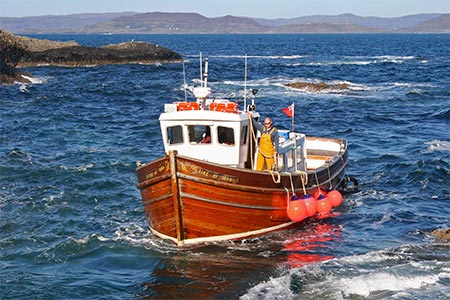
- Our Boat Staffa Trips’ boat, Iolaire of Iona is a beautiful wooden boat, purpose built to take visitors to Staffa. She’s constructed from larch planks on an oak frame in the carvel style and powered by two diesel engines. She’s lifted out of the water each winter and inspected twice yearly by the MCA.
Our 2024 season has begun and we're taking bookings!
The Isle of Staffa – off the west coast of Scotland – is a beautiful uninhabited island, famous for its dramatic basalt columns, sea caves and bird life. Over the years it has captivated thousands of people including Johnson & Boswell, Queen Victoria, Robert Louis Stevenson, Walter Scott, Jules Verne and Joseph Banks. Fingal’s Cave is always splendid and atmospheric with its basalt columns formed during a period of volcanic activity 59 million years ago.
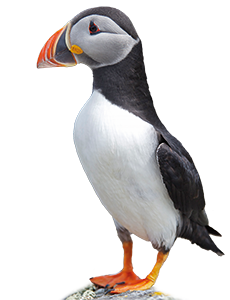
Puffins can be seen ashore in season as well as shags, oystercatchers and black guillemots. We often see guillemots, razorbills, fulmars, kittiwakes, shearwaters gannets, great skuas and other birds from the boat. If you’re lucky, you might see a passing otter, porpoise, dolphin, basking shark or whale! The trip lasts approximately three hours and you can disembark at Fionnphort or Iona. Staffa Trips leave Iona and Fionnphort twice daily (1st April-late October) and we aim to give you at least 1 hour ashore.

Prices: £40 Adult £20 Child (5-15) Under 5’s free. Please note: All trips and landings are subject to suitable weather and sea conditions.

DID YOU KNOW THAT WE OFFER GIFT VOUCHERS? They make a great gift and a brilliant way to plan for a future trip!
Read reviews of Staffa Trips on Tripadvisor®

Follow Us on Facebook, Twitter and Instagram.


The World’s Most Beautiful Caves
Posted: November 23, 2023 | Last updated: November 23, 2023
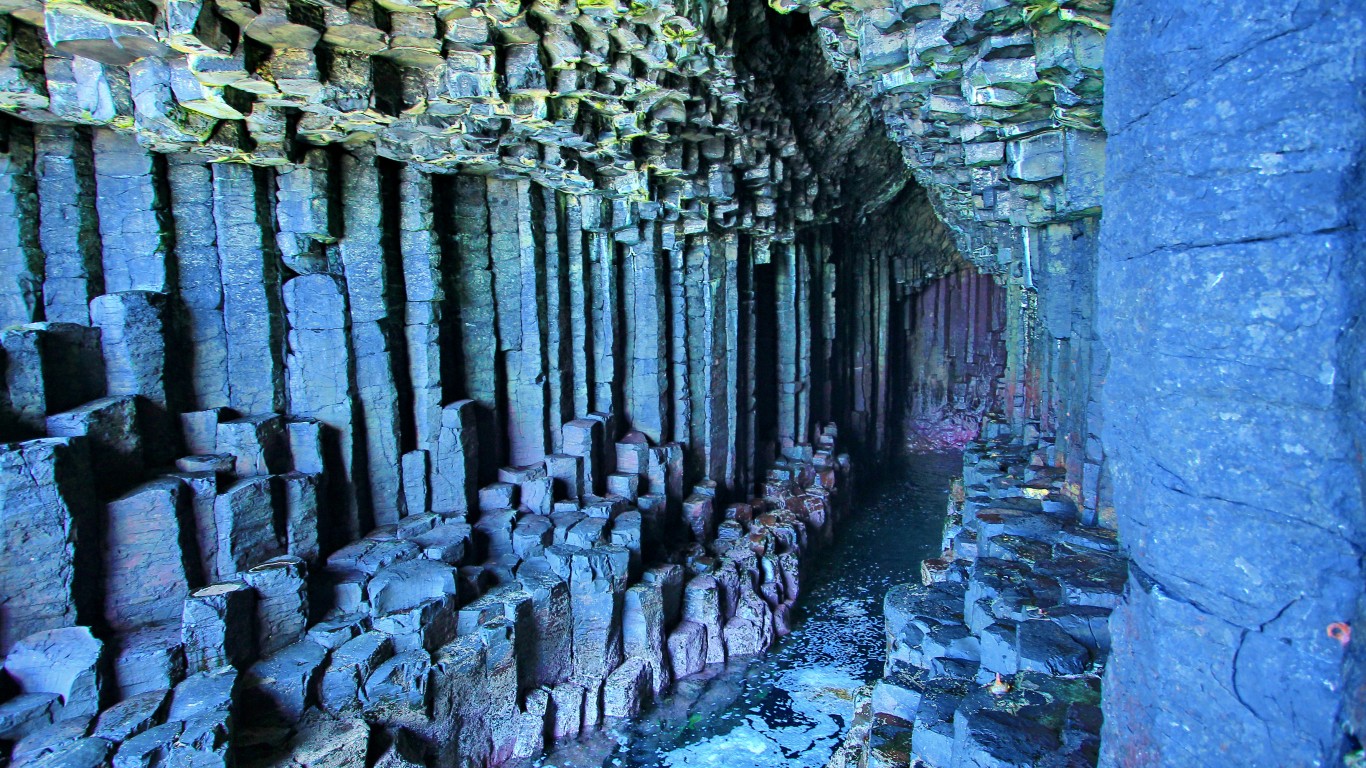
Beauty can be found throughout the world. People travel throughout the world to immerse themselves in the wonders of new, exciting, and beautiful places. Though many people travel to see such places on the surface of the earth, oftentimes, these marvels of beauty are actually beneath it.
Caves contain their own ecosystems that would not be sustainable above ground, and their environments are often studied by scientists known as speleologists. Often hidden in jungles or wild rocky regions, they may not always be easily accessible, but this is what makes them even more alluring to experience.
Those who venture beyond the cave mouths, serious cave explorers are known as spelunkers, from the Latin word for cave, “spelunca”), often encounter narrow passages, precipitous drops, waterfalls and pools, and other potential hazards along the way. For many, these challenges are viewed as exciting adventures that just add to their appeal.
Caverns and caves may be foreboding to some, but to many others, they are things of great beauty. To determine the most beautiful caves in the world, 24/7 Tempo consulted numerous websites including Timeout and The Active Times , focusing on caves of striking natural beauty, as well as a few with exceptional man-made elements.
Varying significantly in age, from several thousand to several million years, the caves on the list highlight a multitude of incredible wonders. Each is formed with a diverse assortment of materials. From limestone and dolomite to ice, each one presents the beauty of nature and is stunning in its own way. ( These are the most colorful natural wonders in the world .)
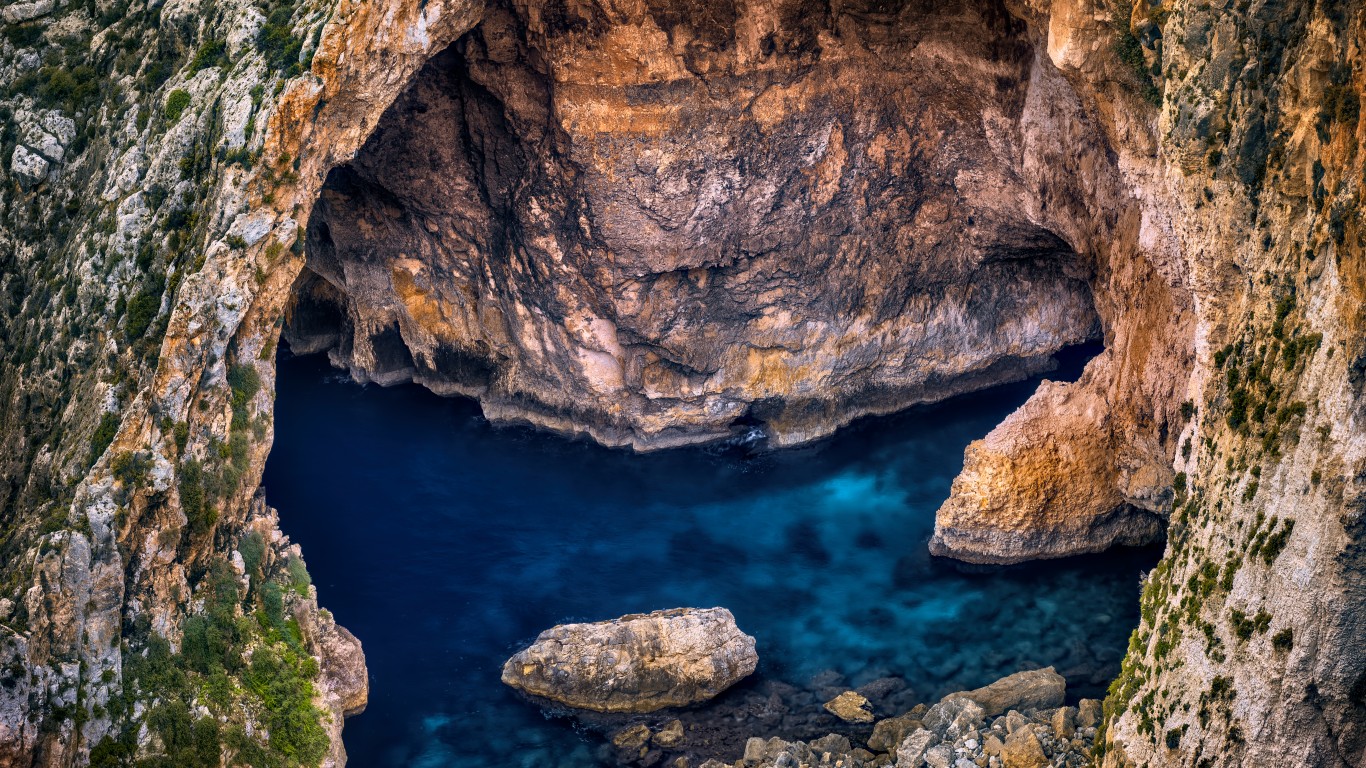
Blue Grotto
> Location: Italy
Blue Grotto > Location: Italy
This legendary location can be accessed on the island of Capri off the coast of Naples by wooden rowboat. However, visitors may only explore in calm seas at low tide. Inside, it's almost completely dark. The cavern is only lit by azure blue light from the water - a crystalline blue with silver reflections.
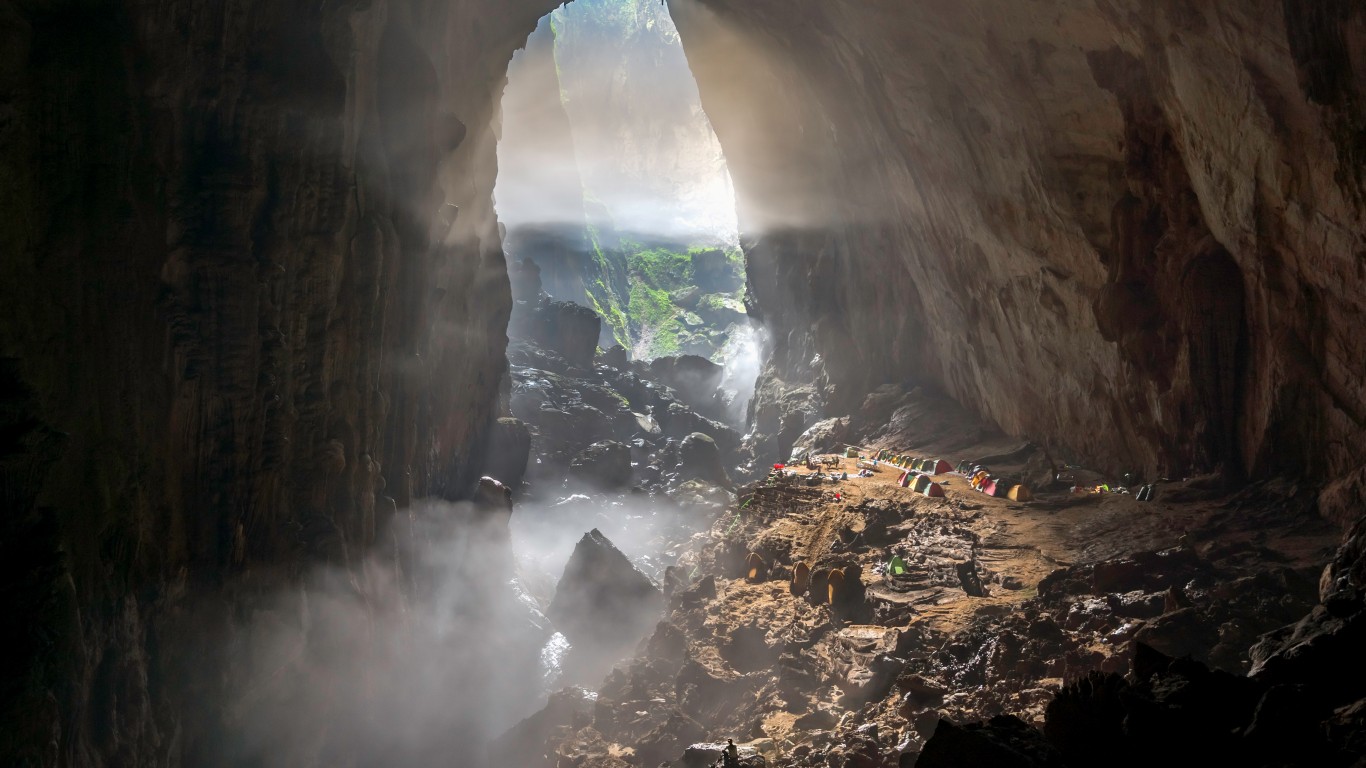
Hang Sơn Đoòng
> Location: Vietnam
The Sơn Đoòng is thought to be the biggest natural cave in the world. Located in Phong Nha-Kẻ Bàng National Park, in Quảng Bình Province, Hang Sơn Đoòng measures three miles long, with certain sections reaching 650 feet high. It was discovered in 2009 and opened to the public four years later. The cave is known for having underground rainforests.
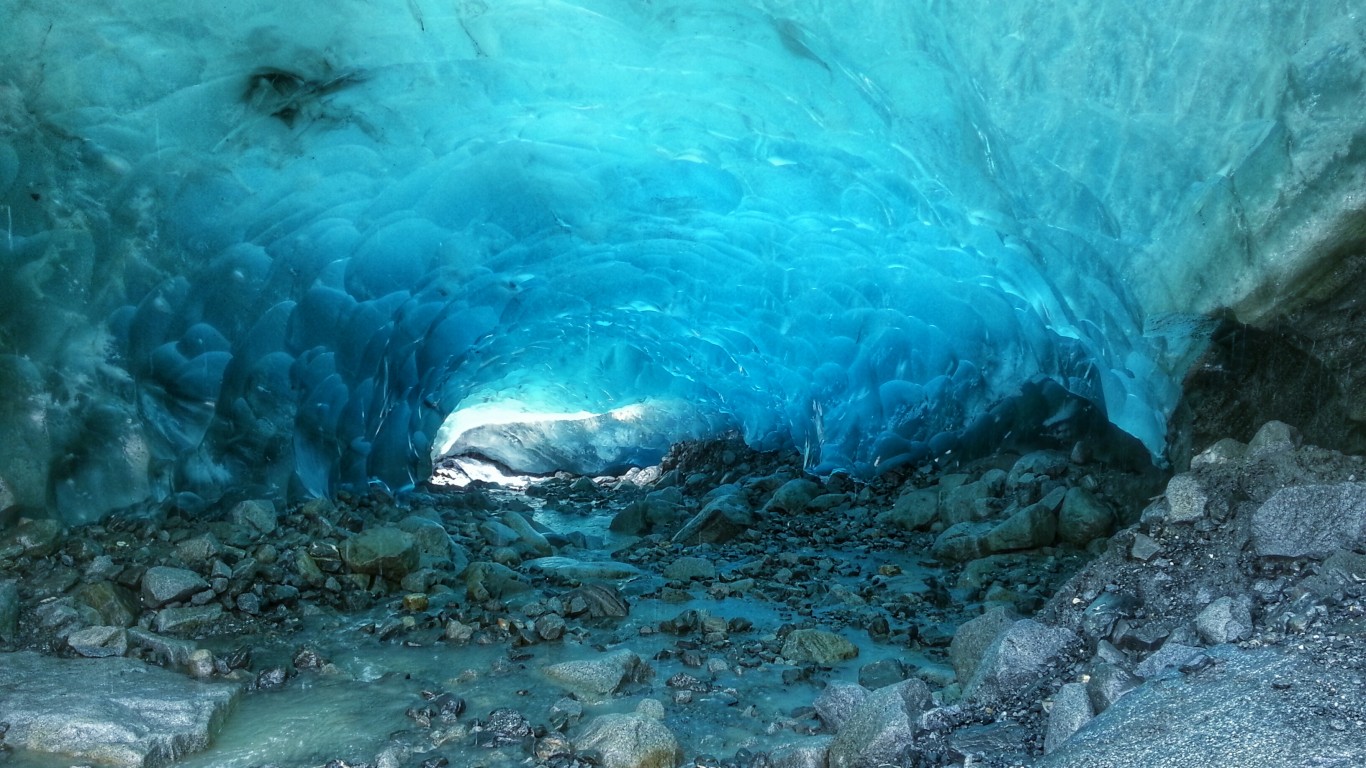
Mendenhall Glacier Caves
> Location: Alaska, USA
This cave is located near Juneau and is inside a partially hollow 12-mile-long glacier. The Mendenhall Ice Caves are only accessible by first kayaking to the edge, and then climbing over the glacier. Fast-rising ocean temperatures in recent decades have contributed to the glacier receding by almost two miles since 1958.
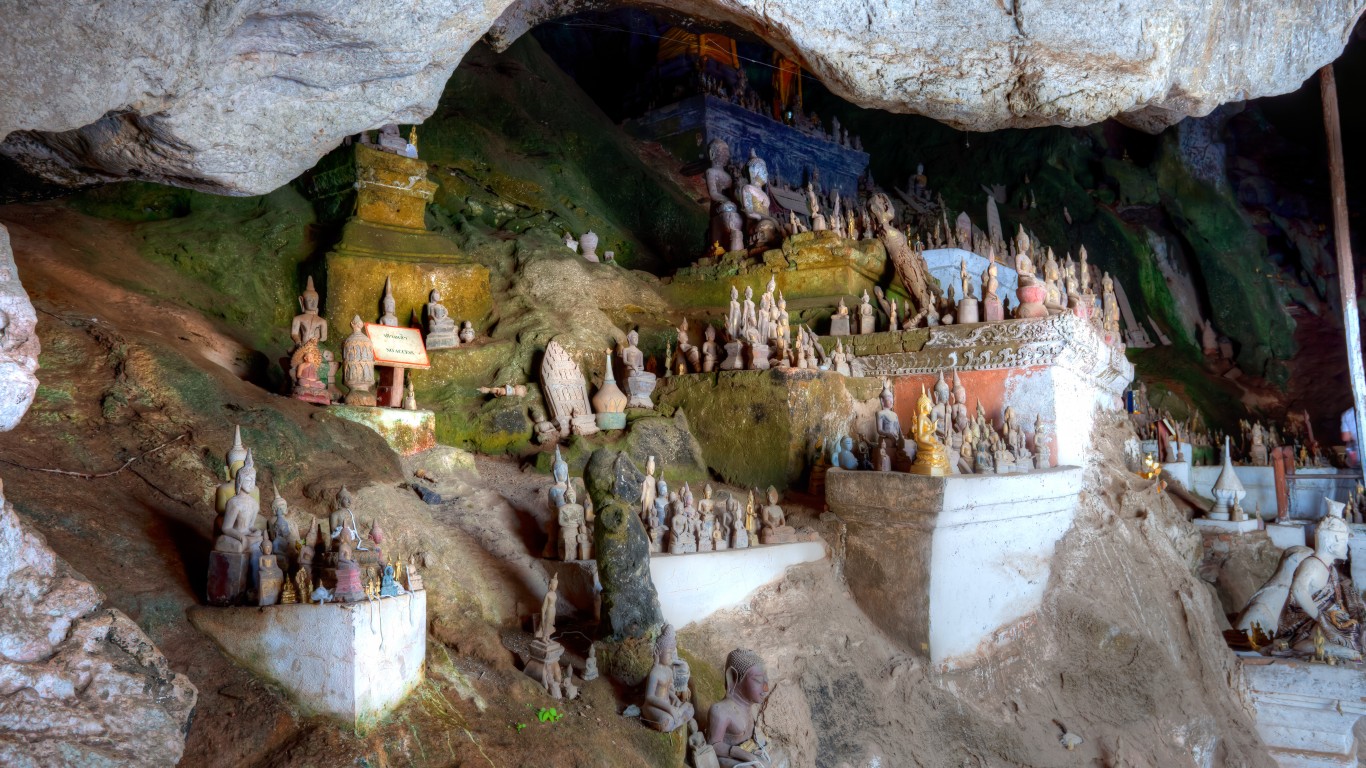
Pak Ou Caves
> Location: Laos
The Pak Ou Caves are a religious site that overlooks the Mekong River. The caves, comprised of two separate caves, the lower cave, Tham Ting, and the upper cave, Tham Theung, are known for the hundreds of Buddha statues found inside. Local legend has it the caves were discovered in the 16th century and have been used for worship since then.
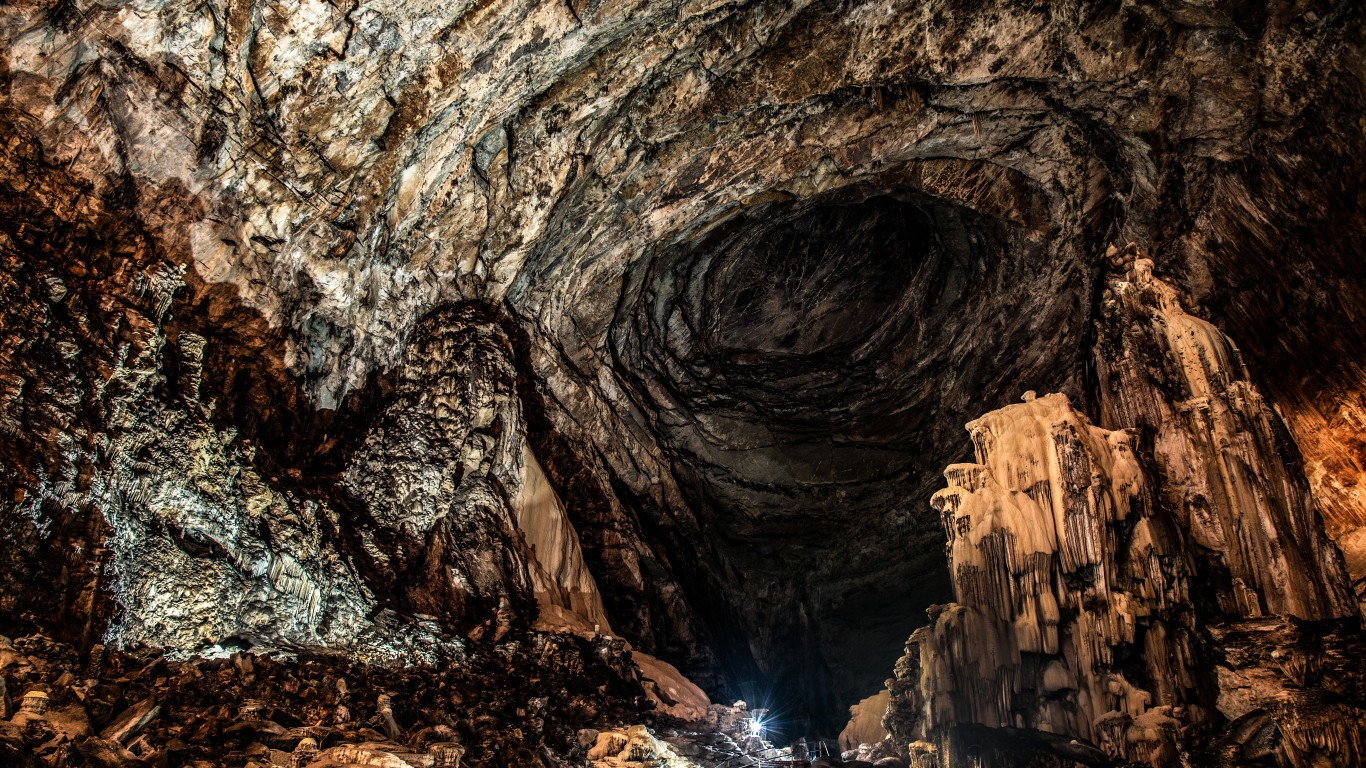
Grutas de Cacahuamilpa Caverns
> Location: Mexico
These caverns form one of the world's largest cave systems and getting inside requires a hike longer than one mile. Local legend has it the caves were discovered in the 16th century and have been used for worship since then. Cacahuamilpa is a "live" cave, meaning that water is still seeping into the formation.
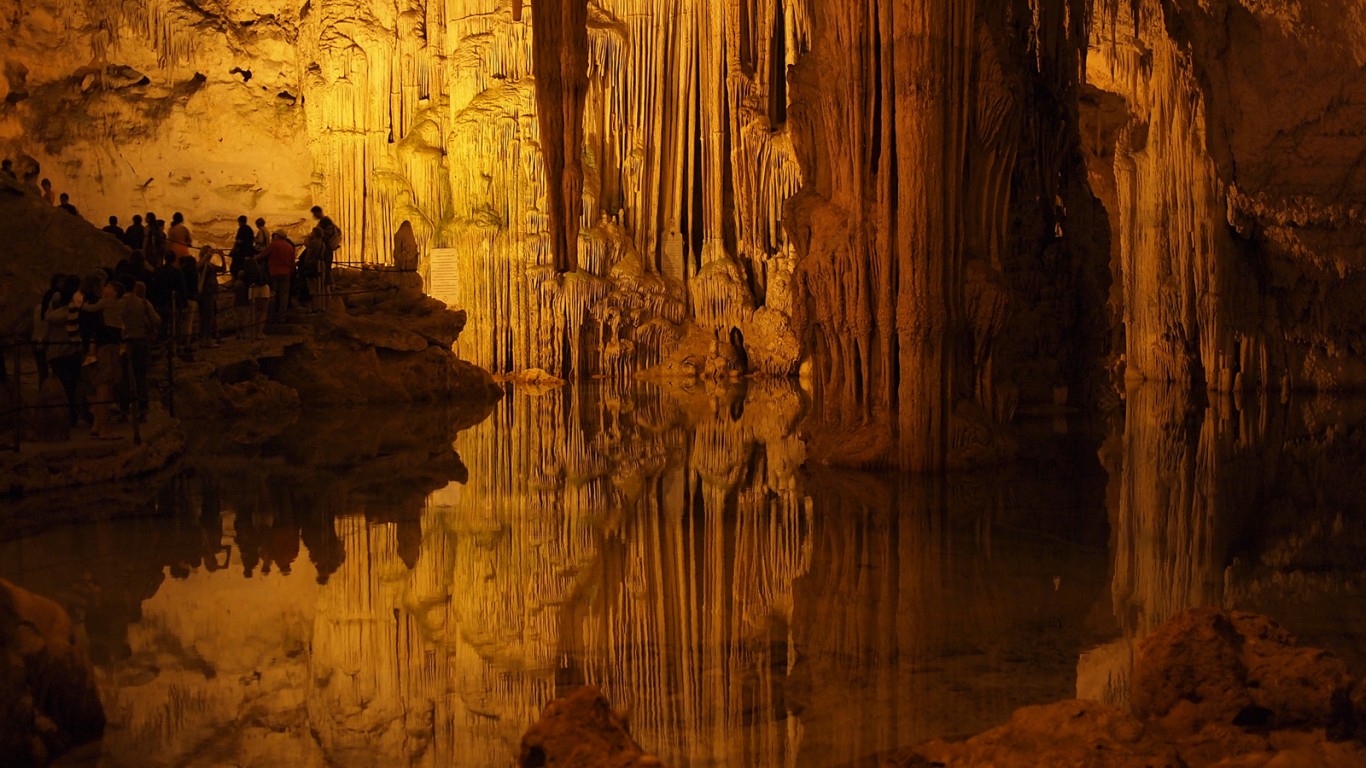
Neptune's Grotto
Located near Alghero in northern Sardinia, this is one of the largest marine caves in Italy. Neptune's Grotto is a stalactite cave that was formed about two million years ago. Inside, there is a huge underground lake and a white sandy beach.
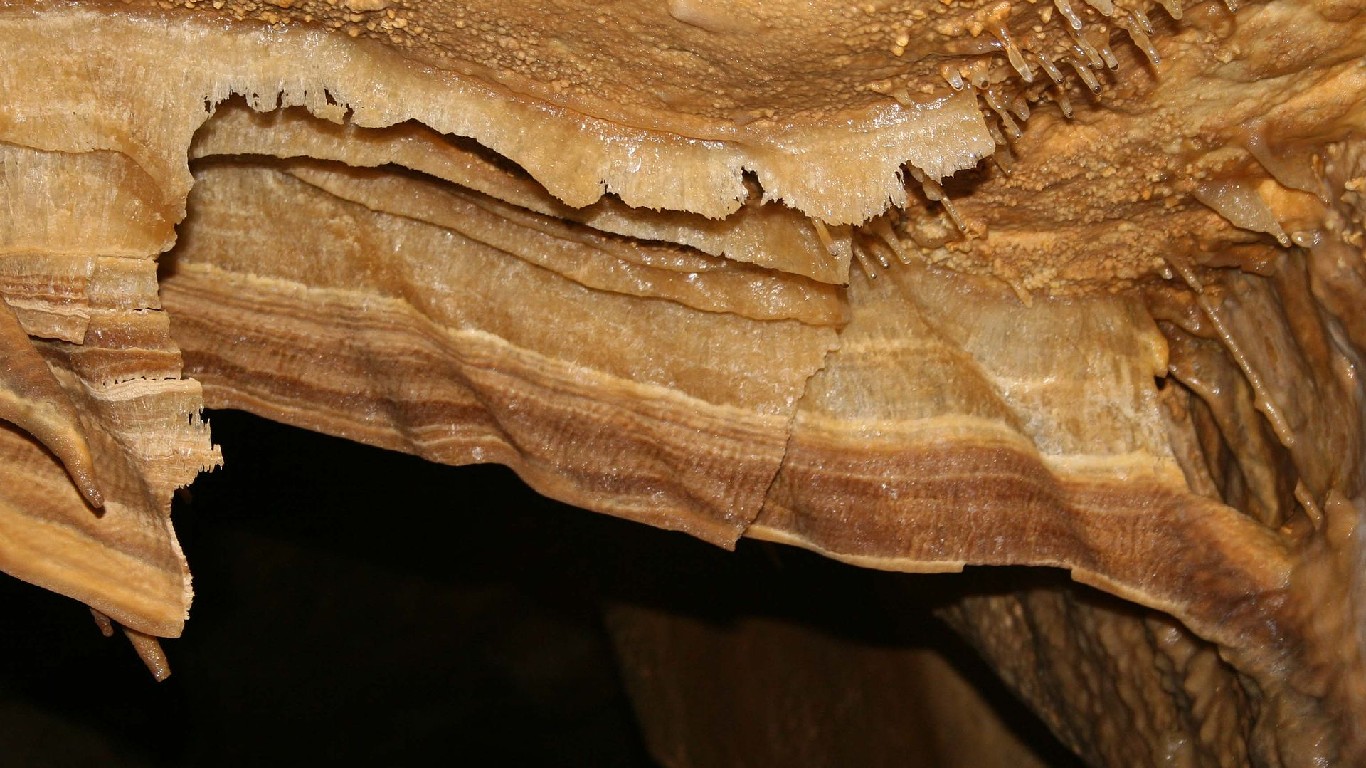
Caverns of Sonora
> Location: Texas, USA
The Caverns of Sonora are located halfway between San Antonio and Big Bend National Park, just 15 miles southwest of the West Texas town of Sonora. These caves are known for their array of calcite crystal formations and are also a National Natural Landmark.
Fingal's Cave
> Location: Scotland
This Scottish cave, located on the uninhabited island of Staffa in the Inner Hebrides, is unlike other caves, in that it is symmetrical. One of the best-known caves in Scotland, Fingal's Cave is formed from volcanic basalt columns. Though it looks like it was man-made, the cave is completely natural.
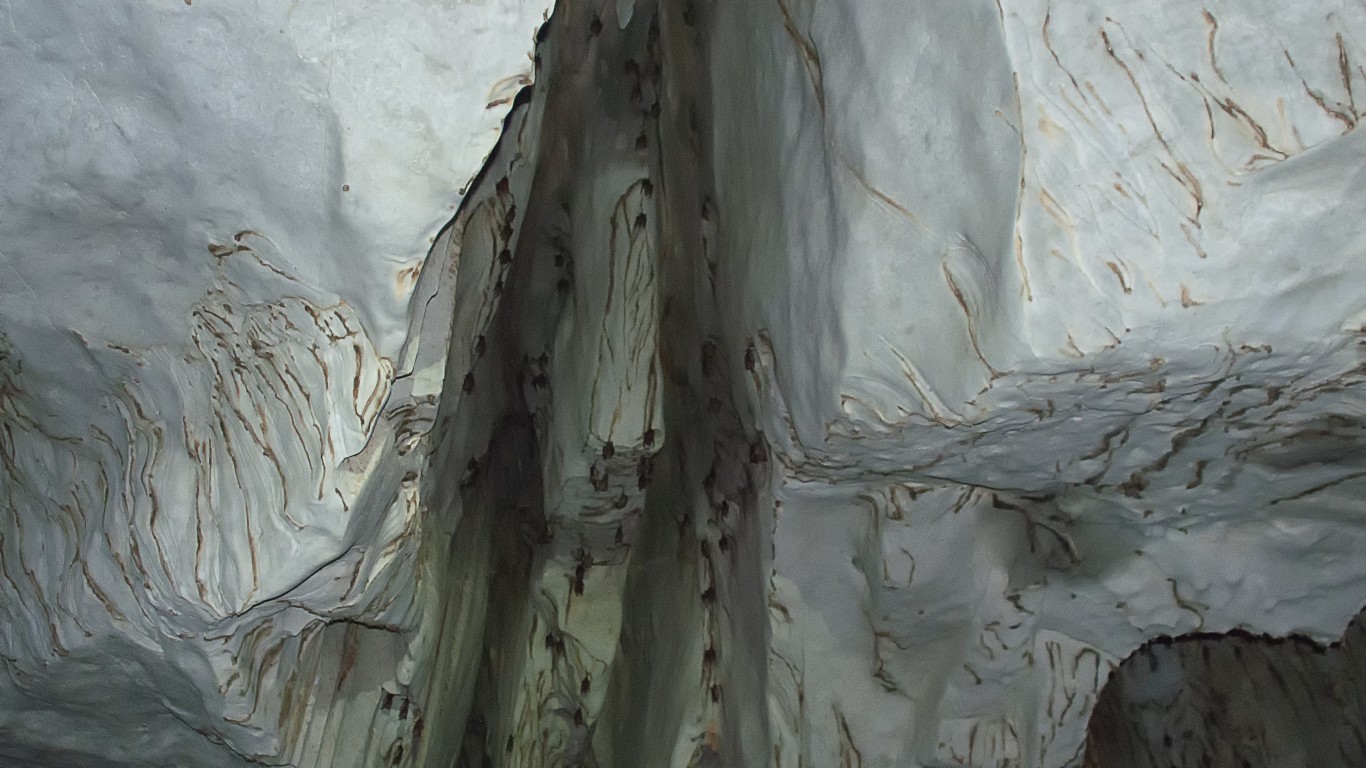
Puerto-Princesa Subterranean River
> Location: Philippines
The Puerto-Princesa Subterranean River cave is a National Park on the island of Palawan. It contains a river that runs five miles underground through a series of limestone caves, connecting a lake to the South China Sea. The above-ground portion of the park features intact old-growth forest.
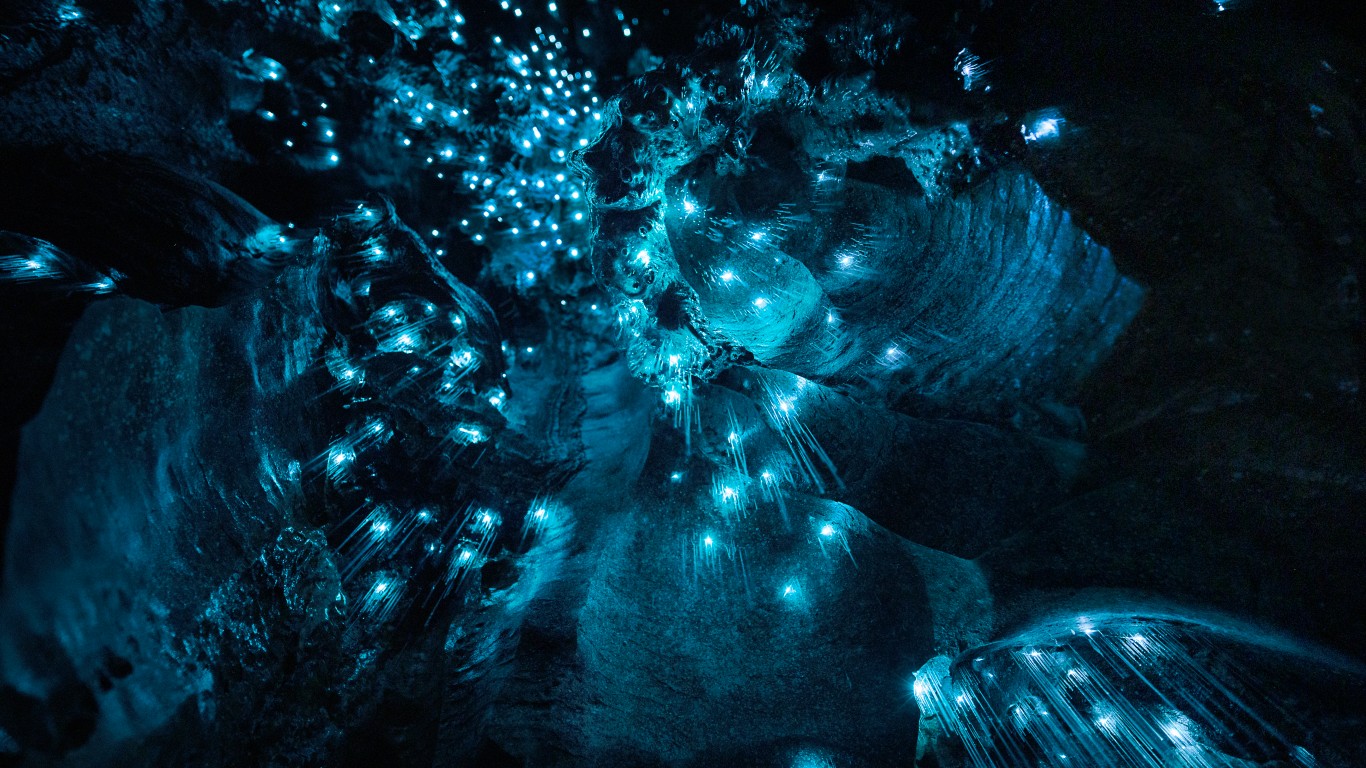
Waitomo Caves
> Location: New Zealand
This cave system on New Zealand's North Island is an underground labyrinth of caves, sinkholes, and rivers. The name "Waitomo" comes from the Māori words for "water" and "sinkhole." Visitors can walk, take a boat, and even go ziplining through the darkness.
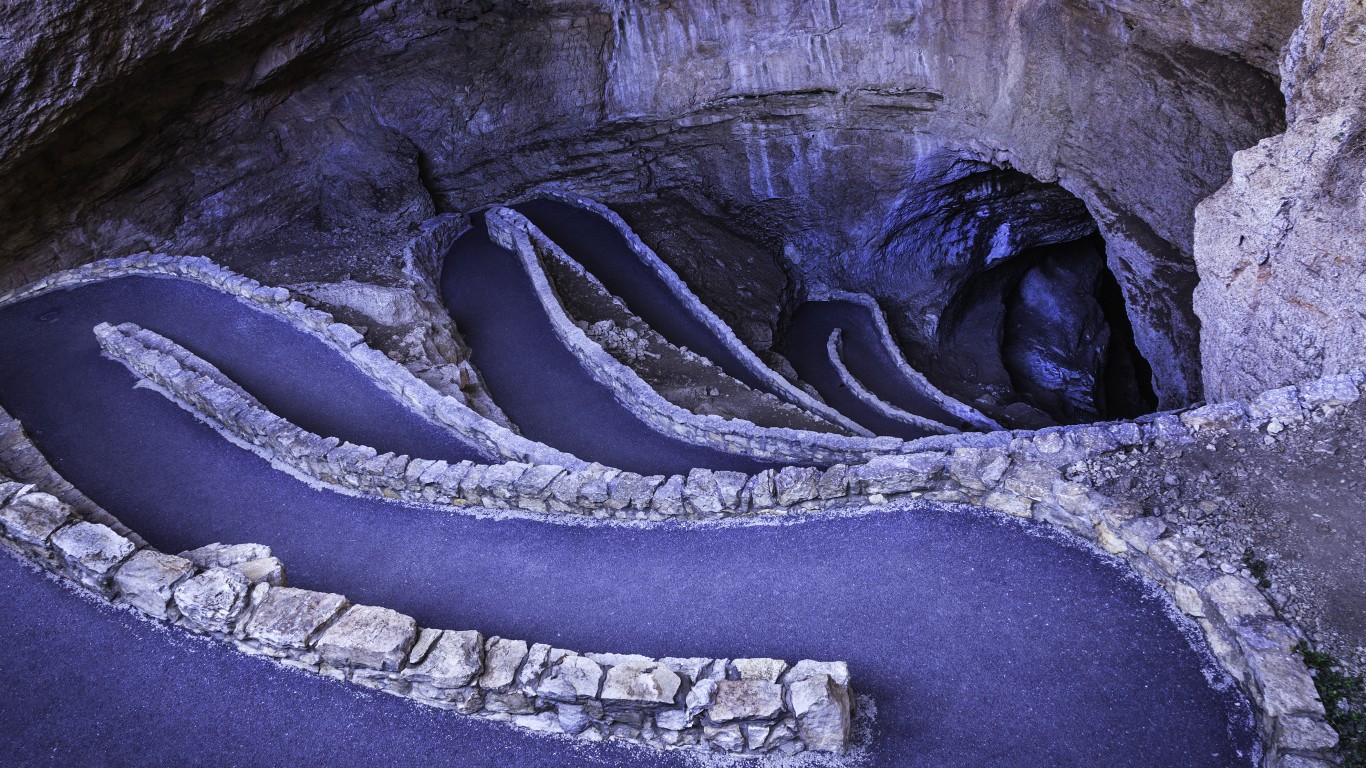
Carlsbad Caverns
> Location: New Mexico, USA
Carlsbad Caverns National Park is situated in the desert of New Mexico. There are more than 100 known caves in the park. The park's most popular attraction, and its namesake, Carlsbad Cavern, was formed between four and six million years ago.
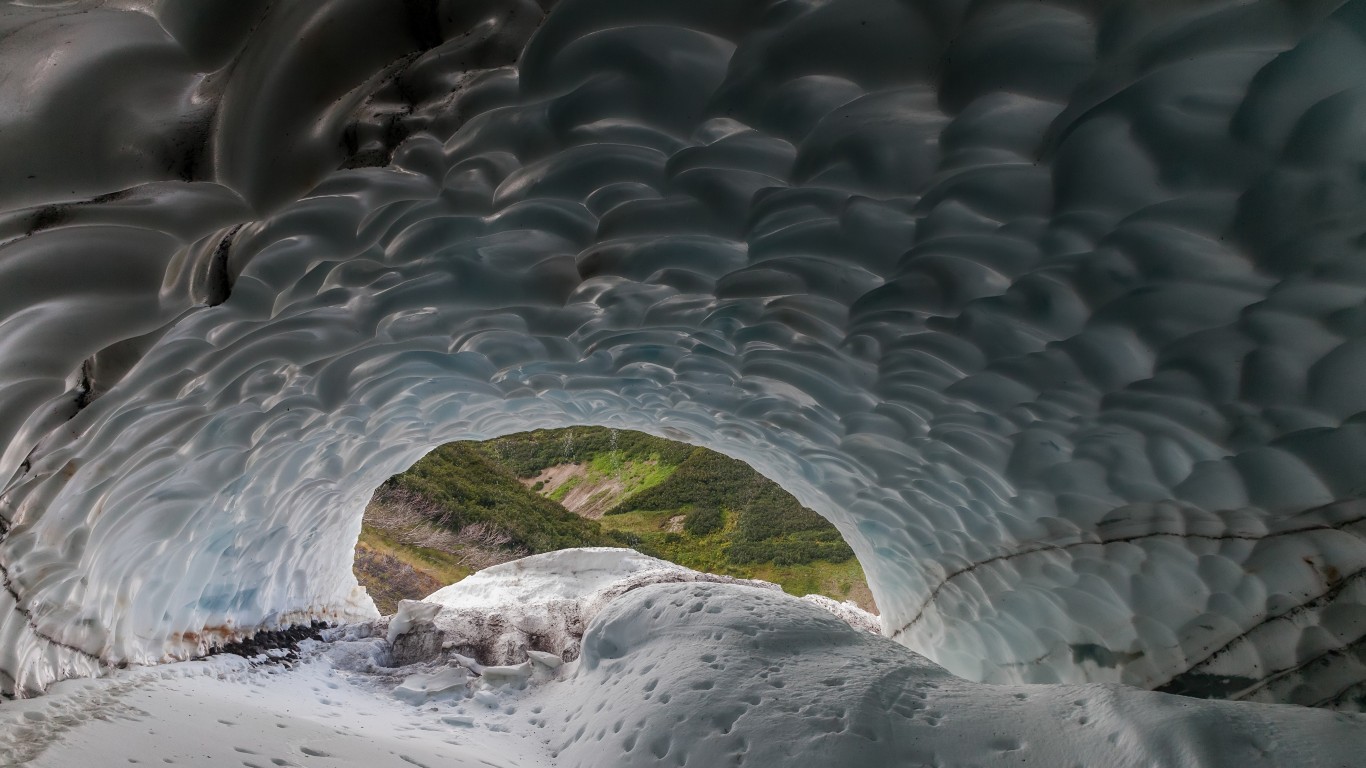
Kamchatka Ice Caves
> Location: Russia
Formed by water from hot springs near the Mutnovsky volcano, the Kamchatka Ice Caves are located in the far northeastern reaches of Russia. The roofs of some of the caves are so thin due to the melting of the glaciers above them that sunlight actually gets through, lighting up the caverns.
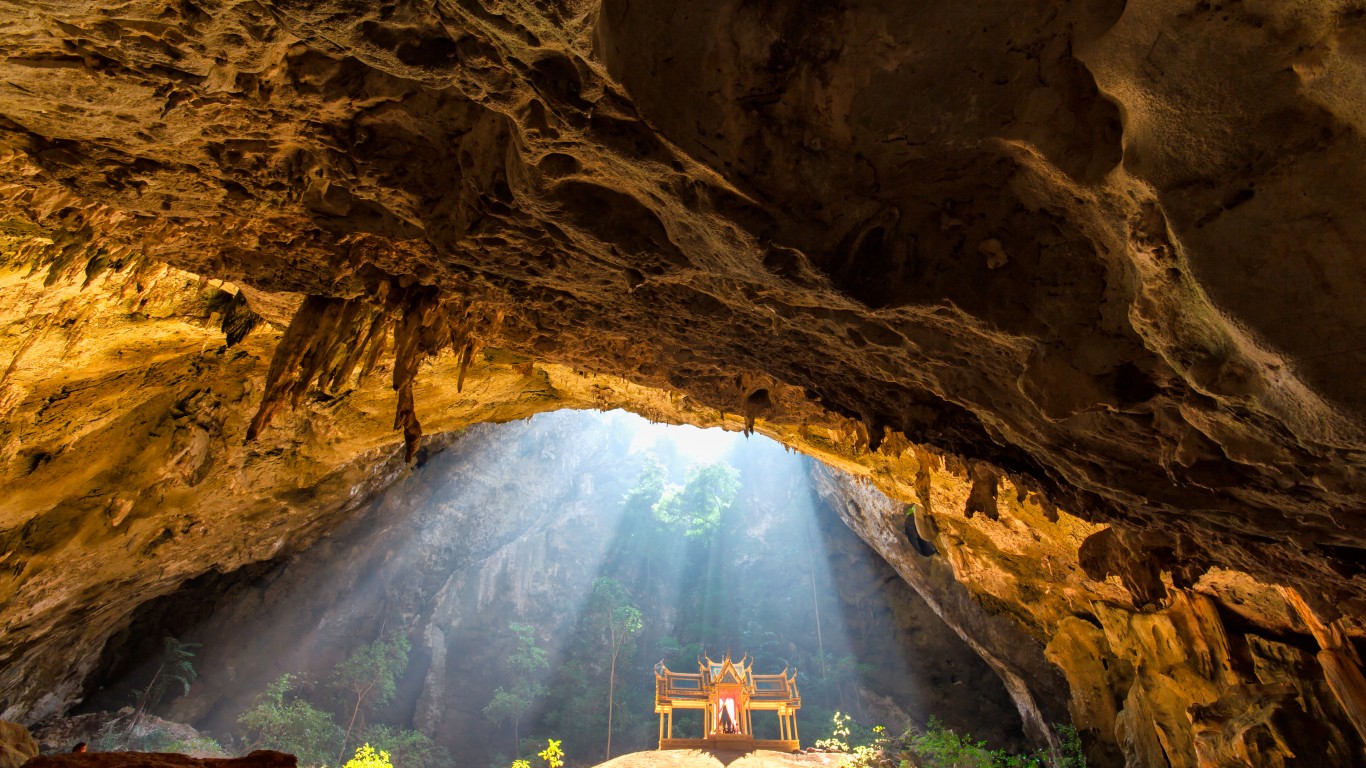
Phraya Nakhon Cave
> Location: Thailand
Hiking to this cave may be a bit more strenuous than others. Phraya Nakhon Cave is one of the most famous caves in the Khao Sam Roi Yot National Park on Thailand's coast and can be reached by boat or by hiking about 45 minutes to the cave's entrance. Locals believe the cave was discovered about two centuries ago when the ruler suffered a shipwreck during a storm and sought refuge in the cave.
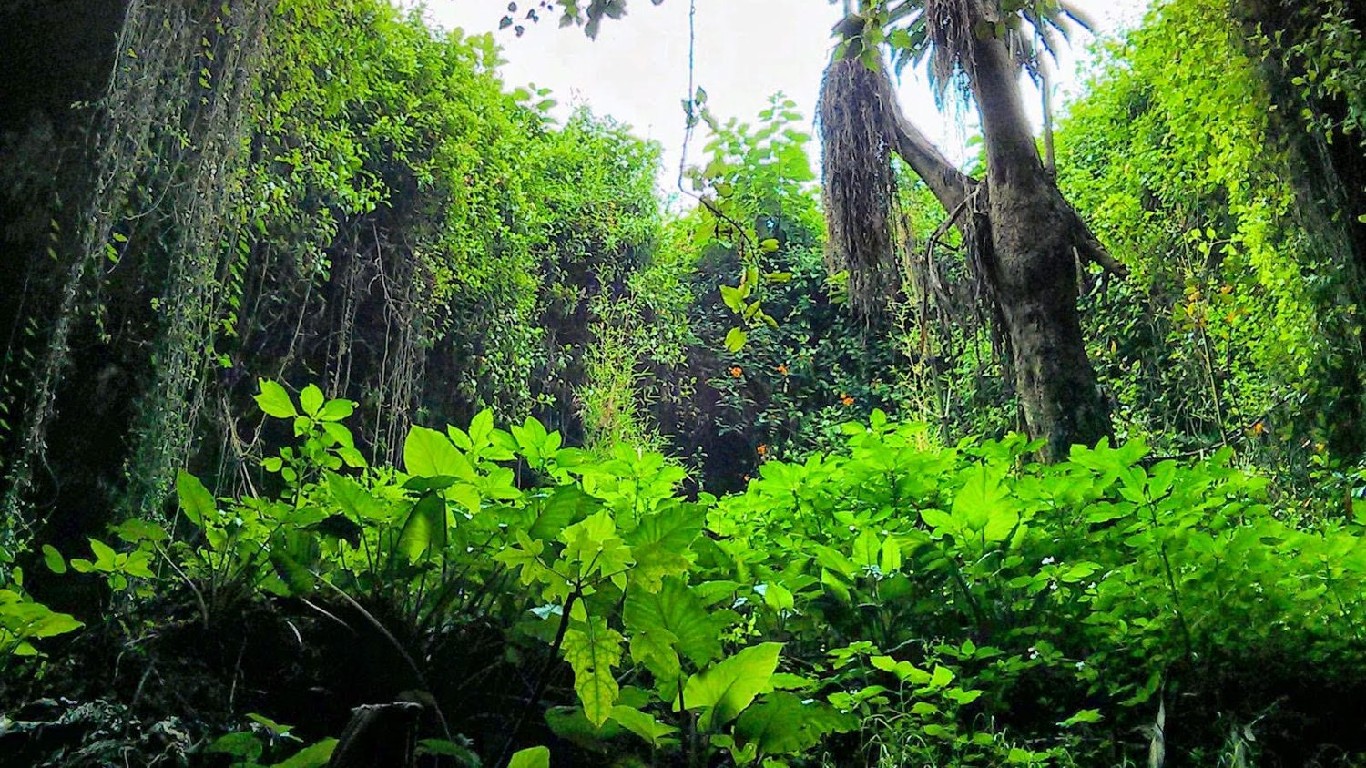
Musanze Caves
> Location: Rwanda
The Musanze Caves are part of an extensive cave system and one of the top attractions in Rwanda. The main Musanze Cave, on the grounds of Innes University, is part of the lava basaltic layers formed by the Bisoke and Sabyinyo volcanoes and has 31 entrances. The site of a massacre during the genocidal Rwandan war, it has been a tourist attraction open to the public since 2014. Flying bats are a common sight.
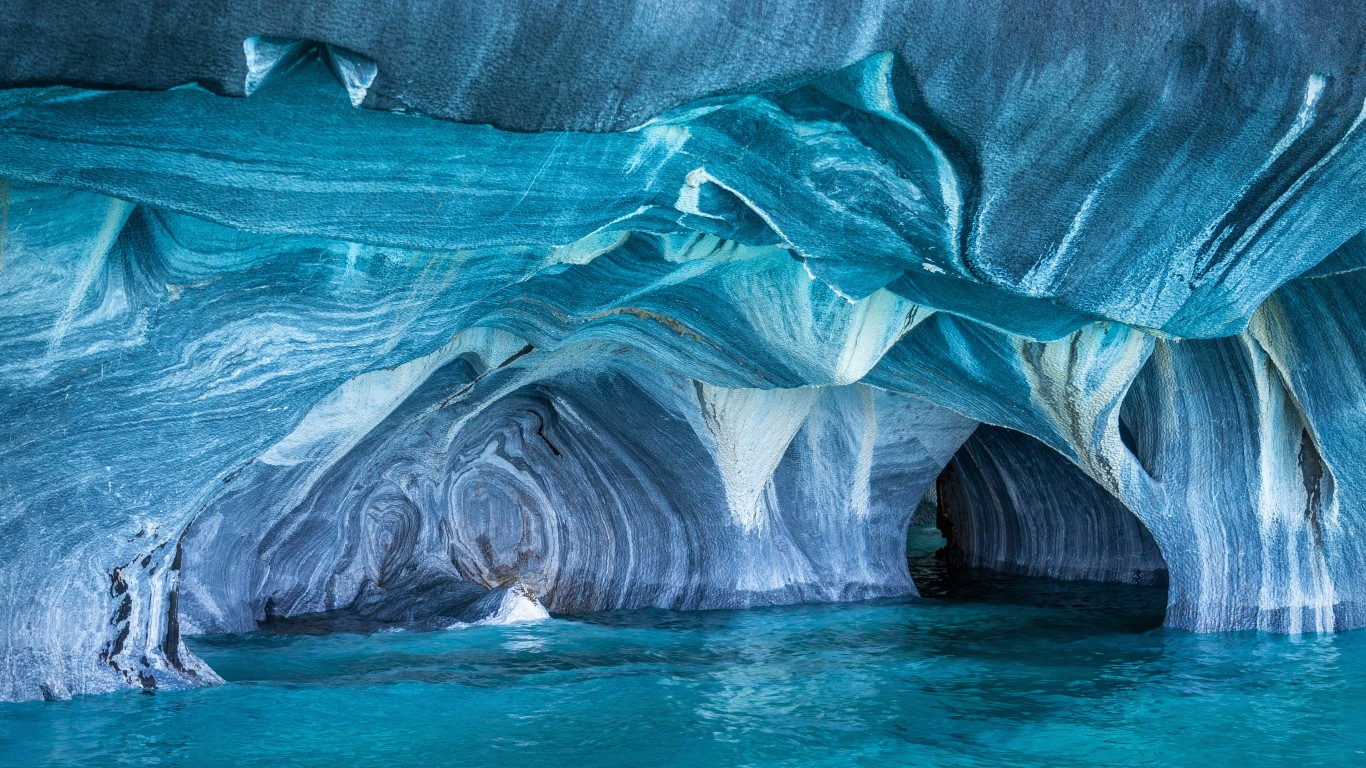
Marble Cathedral
> Location: Chile
The only way to reach the Marble Cathedral is by traversing the glacial lake of General Carrera by boat, or for those seeking a bit more adventure, using a kayak. General Carrera Lake and the marble cathedral are located in Chilean Patagonia, on a peninsula of solid marble. The brilliant blue-striped caverns are the result of 6,000 years of erosion caused by waves lapping against the marble.

Tham Lod Cave
Tham Lod is a huge river tunnel with three dry caverns located in the Pang Mapha District. The cave walls are more than 65 feet high. A recently excavated site near the visitor center is said to be a rock shelter where a human skeleton 20,000 years old was found.
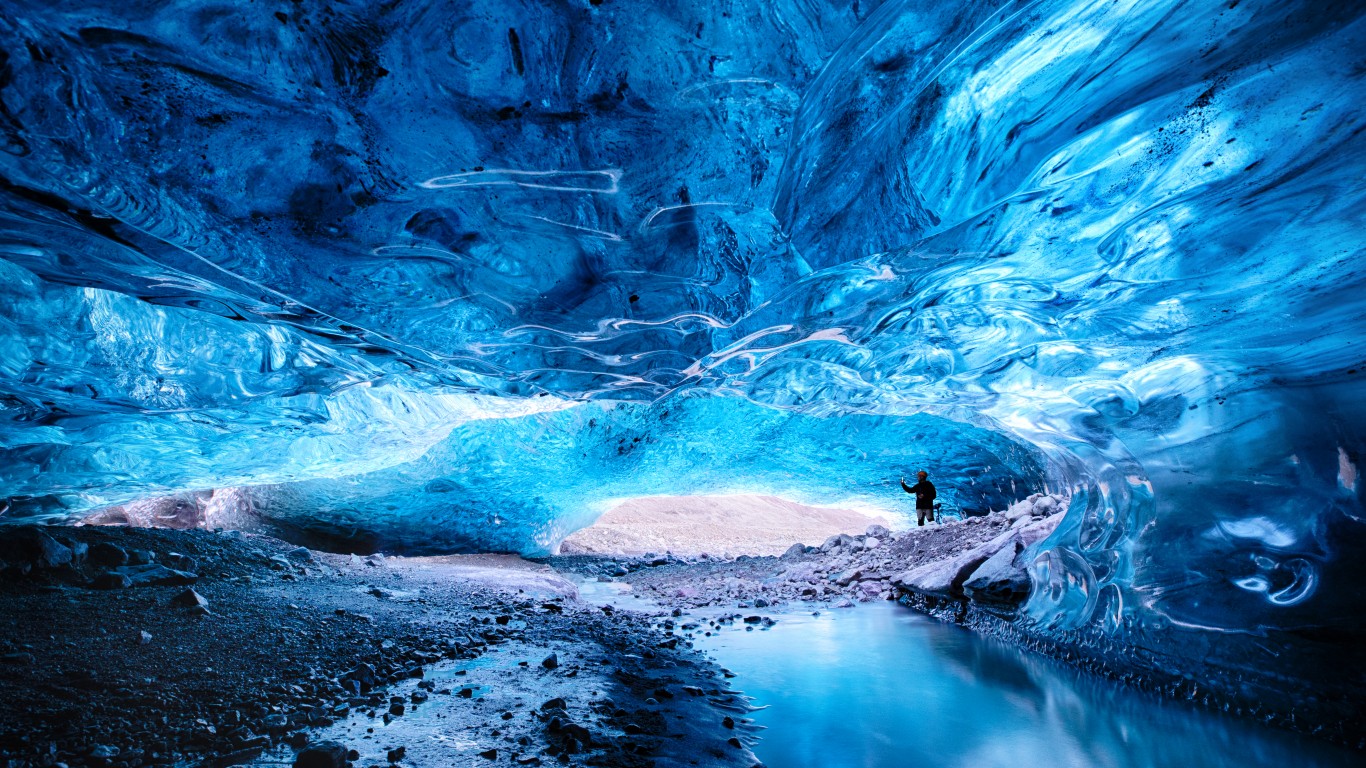
Vatnajökull Glacier Cave
> Location: Iceland
The Vatnajökull Ice Cave, the largest glacier cave in Iceland, is nicknamed the Anaconda Ice Cave for its shape, which is long and winding like a snake. These ice caves here form during winter months in the outlet glaciers of Vatnajökull, although they are different each year due to the changes in climate conditions. It is also called the Crystal Ice Cave, a name it shares with other Icelandic glacier caves.

Reed Flute Cave
> Location: China
Known as "the Palace of Natural Arts.", the Reed Flute Cave in Guangxi, is more than 180 million years old. The cave, named after the lush reeds growing outside, has been a major tourist attraction in China for many decades.
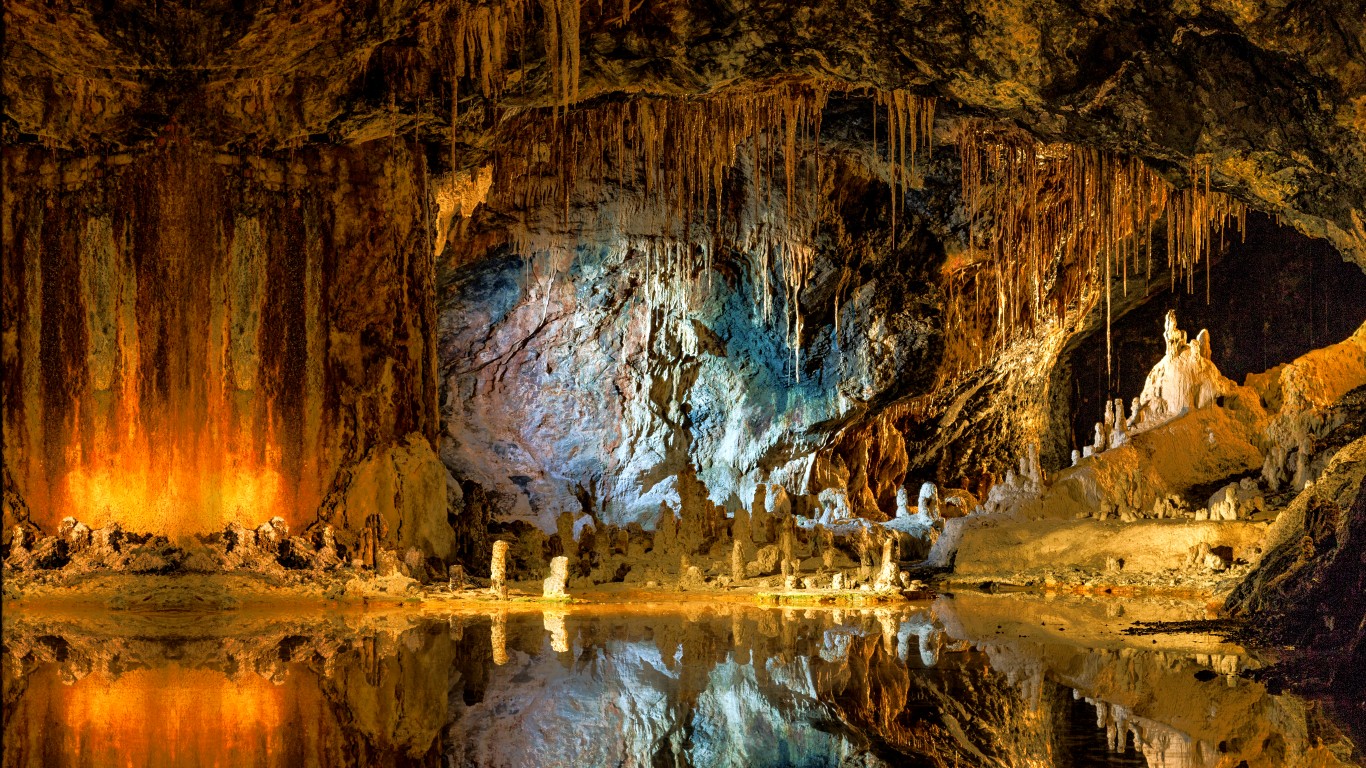
Saalfeld Fairy Grottoes
> Location: Germany
The Saalfeld Fairy Grottoes are located in the German state of Thuringia. They were the site of a mine where shale was removed from the ground. The mine closed in the mid-19th century, but it was reopened in 1910. The minerals that comprise the remaining stalactites and stalagmites created a fairytale-like effect, transforming the grottoes into a colorful underworld.
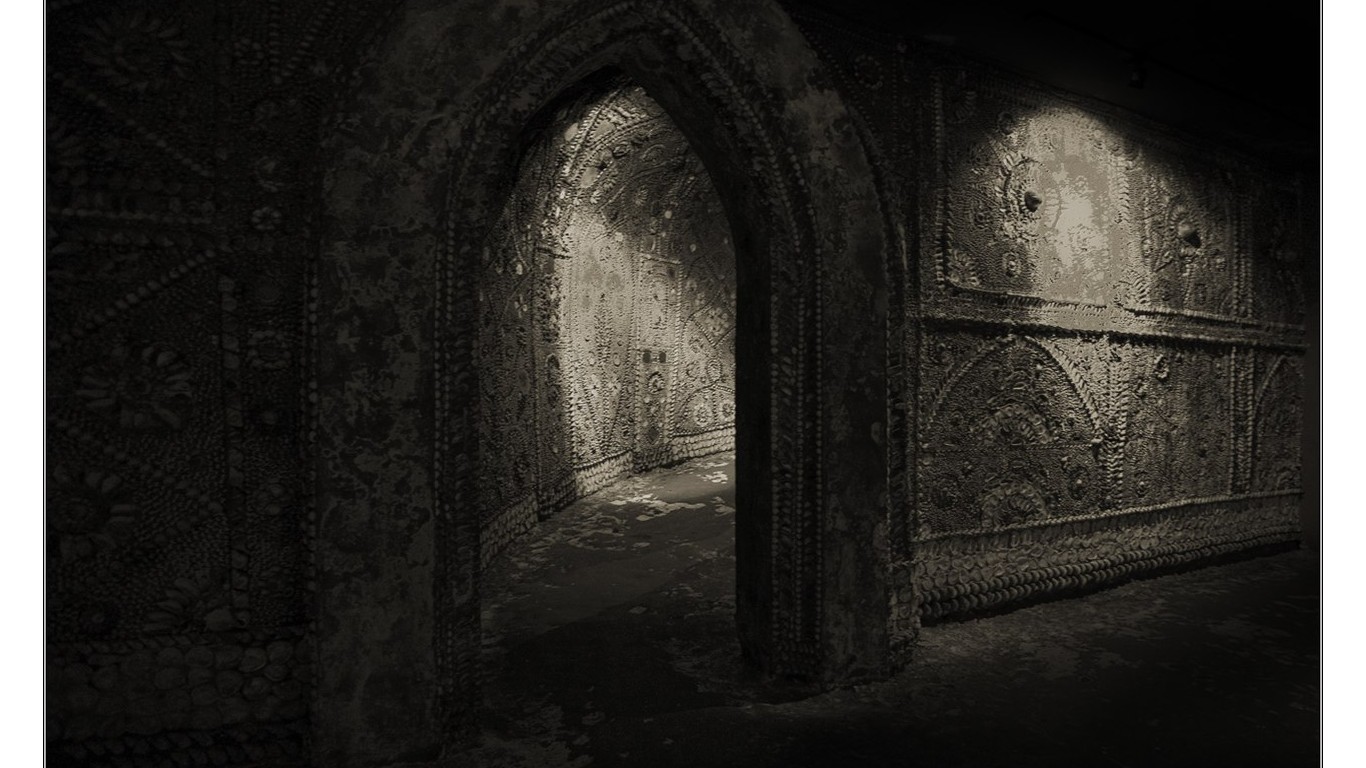
Shell Grotto
> Location: England
The Shell Grotto was discovered in 1835 in Margate, Kent, and has been open to the public since 1838. The subterranean chalk walls are a mind-bending mosaic of 4.6 million shells placed in the grotto by people of unknown origin.
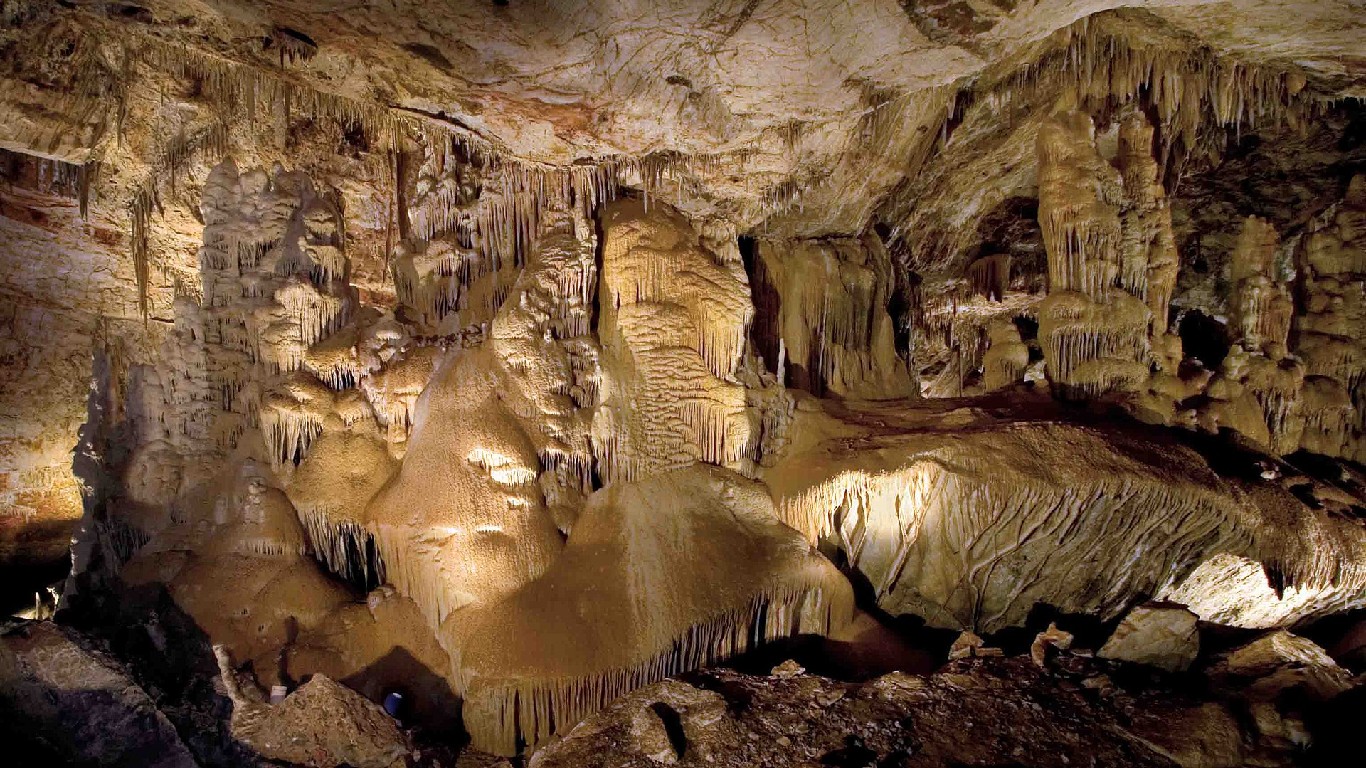
Kartchner Caverns
> Location: Arizona, USA
Arizona is home to the Kartchner Caverns, a large limestone cave system near the town of Benson in the southern part of the state. The caves house the largest stalactite formation in the world and has a show cave that is comprised of 2.4 miles of passages.
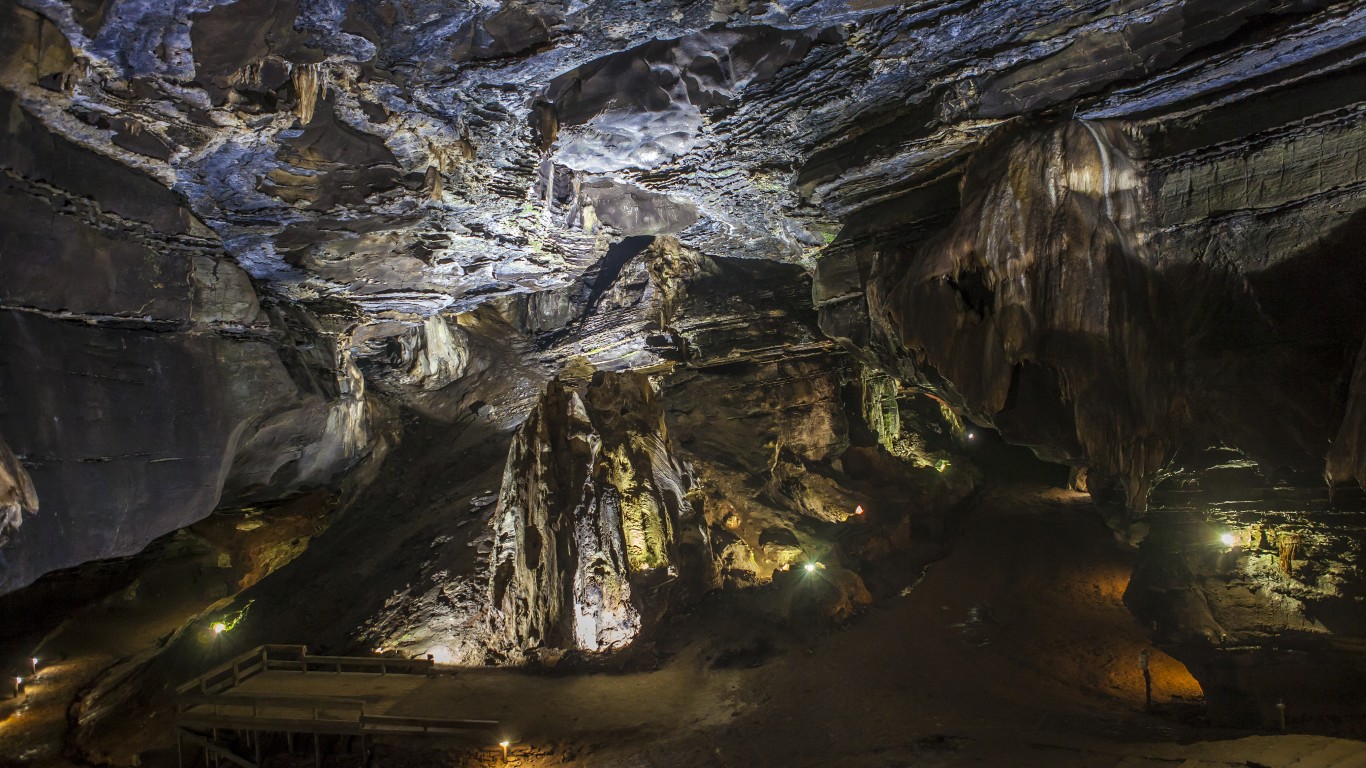
Sudwala Caves
> Location: South Africa
The Sudwala Caves in Mpumalanga form one of the oldest cave systems in the world dating back at least 240 million years. Thought to be the oldest cave system, Sudwala Caves has a large natural amphitheater inside dubbed Miriam Makeba Hall (in honor of the famed South African singer) that has been used for concerts.
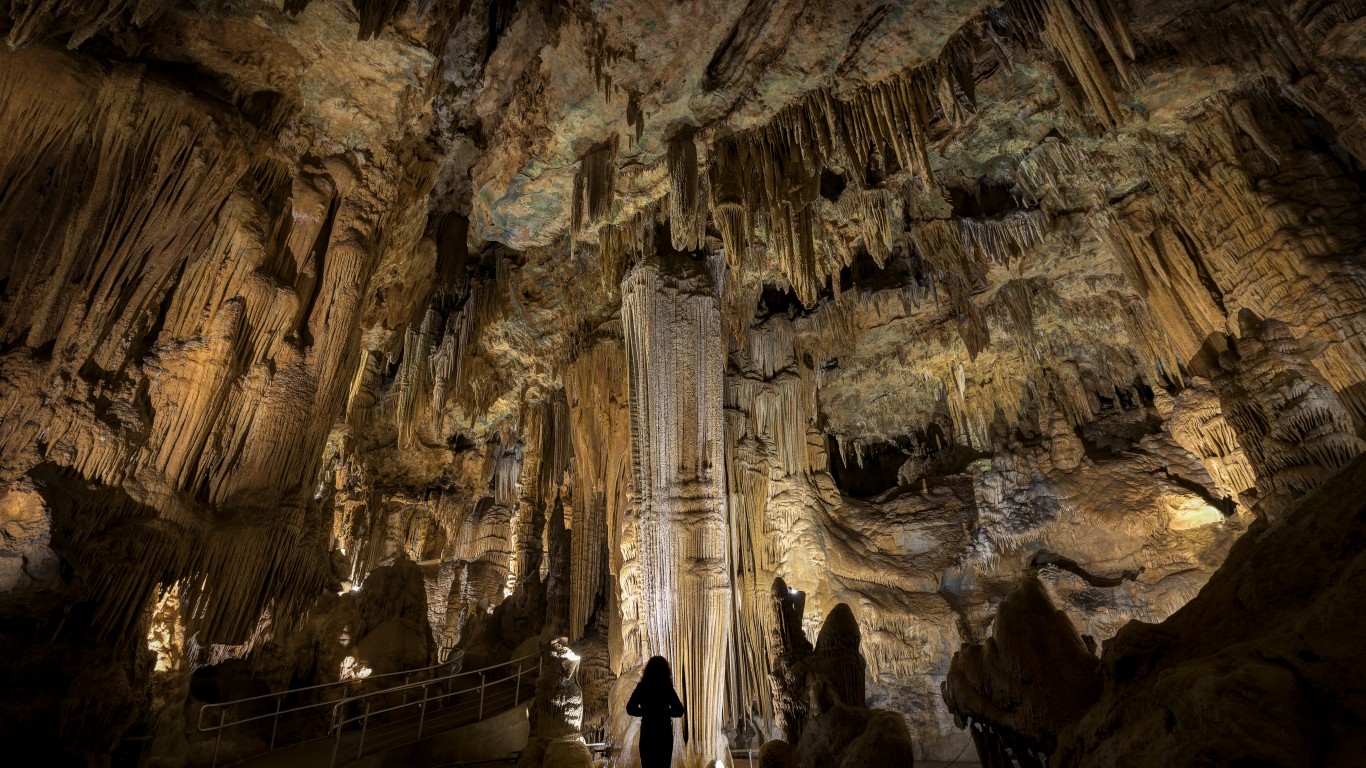
Luray Caverns
> Location: Virginia, USA
Luray Caverns, also known as Luray Cave, is located in the Shenandoah Valley and is the largest cavern system in the eastern United States. The cavern has been open to the public since 1878, with well-lit paved walkways and ceilings extending about 10 stories high.
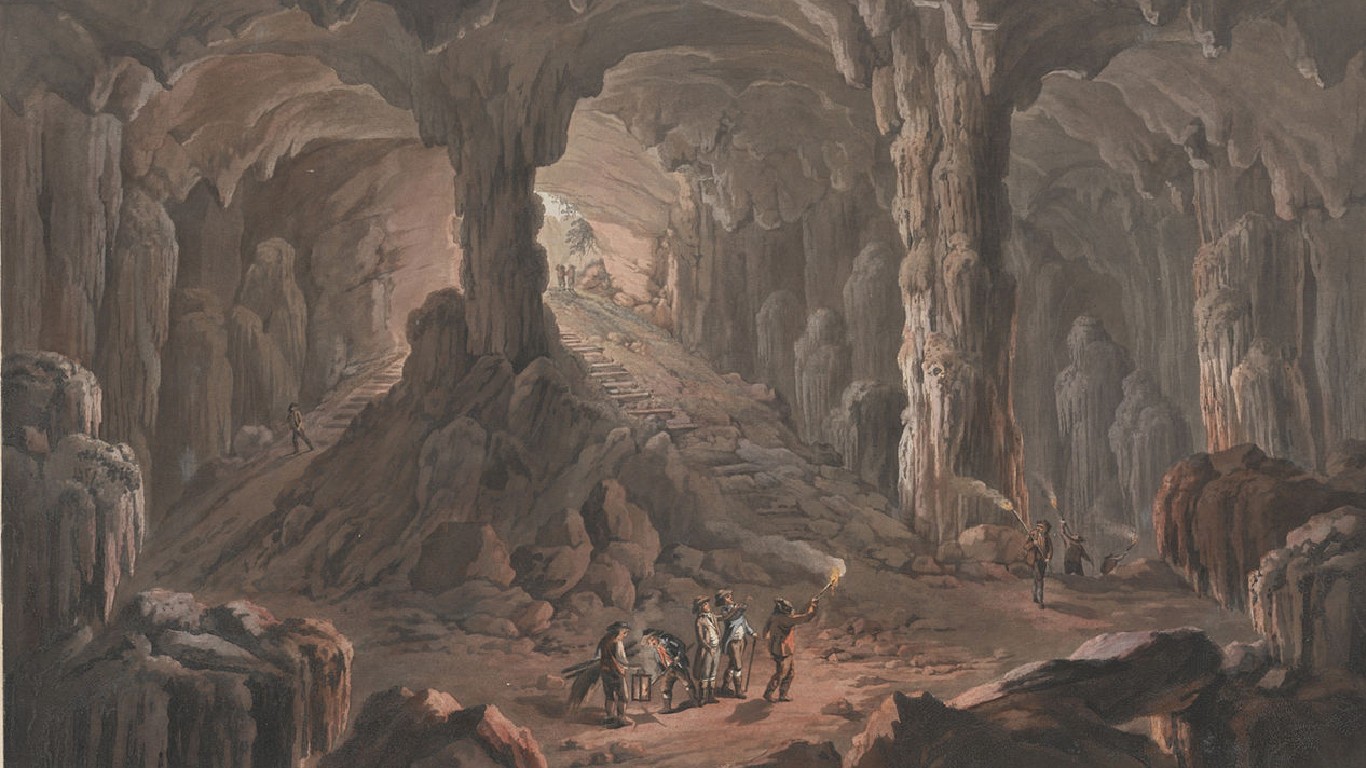
Vilenica Cave
> Location: Slovenia
The Vilenica Cave is located next to the village of Loken in the Karst region of southwestern Slovenia. It might have been used as a shelter in ancient times, as artifacts have been discovered within. Tourists first visited as early as 1633, making this one of the oldest touring caves in Europe.
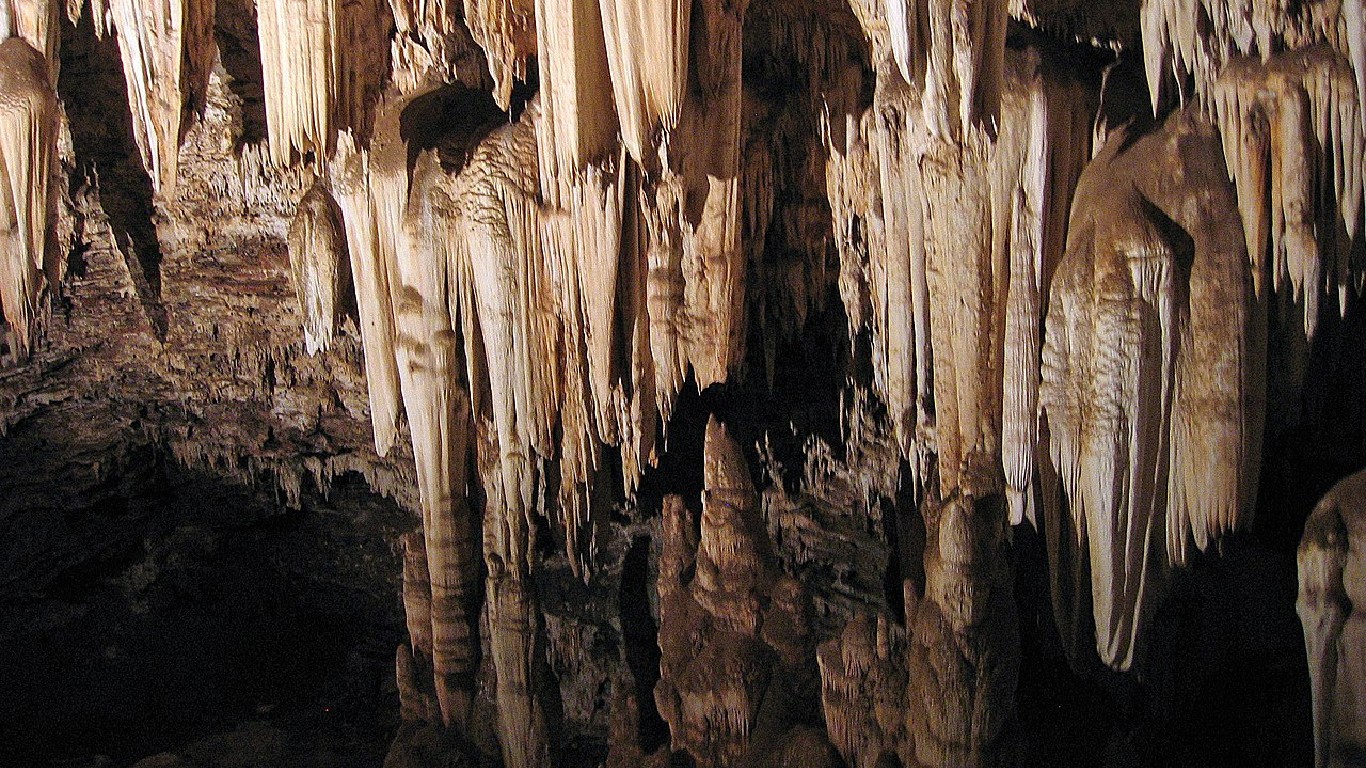
The Bothongo WonderCave
The Wonder Cave, in the Bothongo Rhino & Lion Nature Preserve in South Africa’s the Gauteng province, is believed to be 2.2 million years old. Besides awe-inspiring stalactites and stalagmites, it contains a colony of bats.
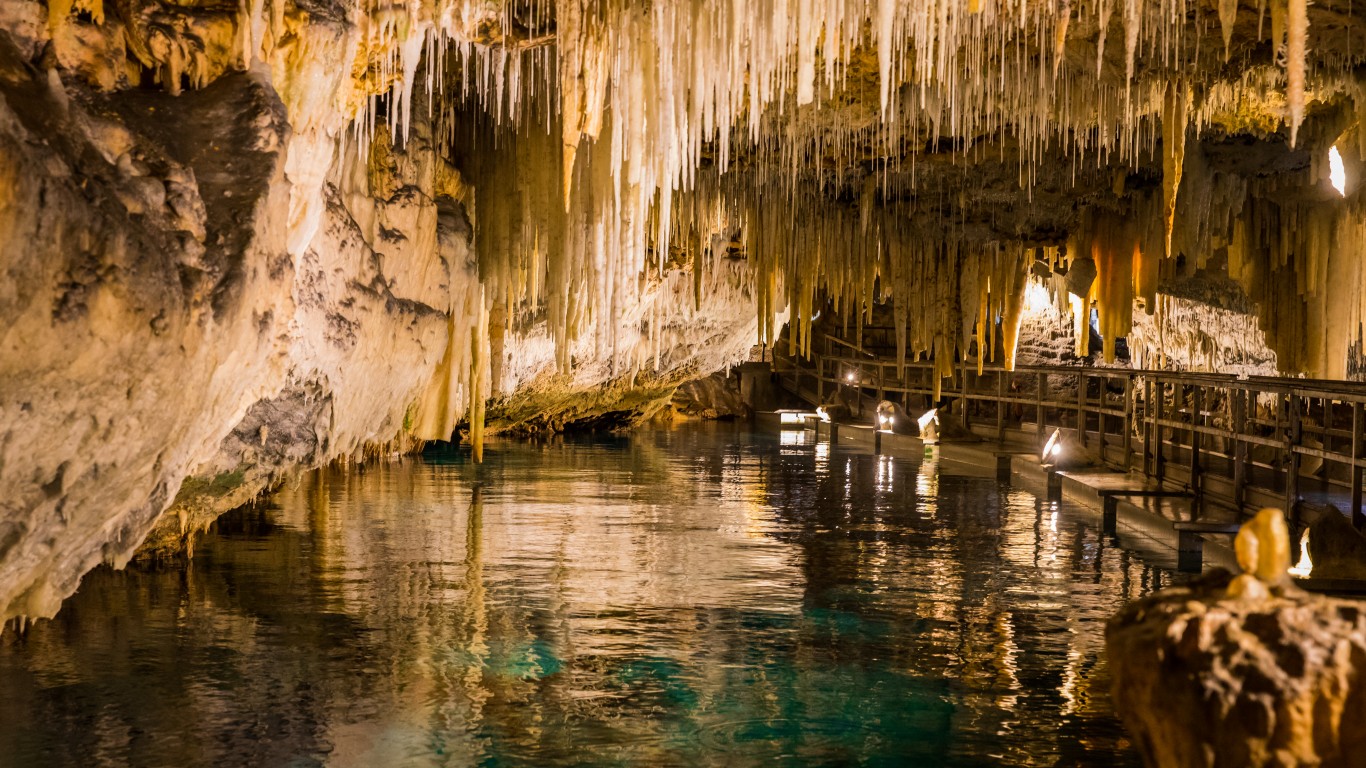
Crystal and Fantasy Caves
> Location: Bermuda
The Crystal and Fantasy Caves in Bermuda's Hamilton Parish were formed during the Ice Age. Just a few minutes' drive from Grotto Bay, Crystal Cave has the added beauty of a crystal clear lake that goes down 55 feet. Welcoming visitors since the early 20th century, they feature row upon row of stalactites and stalagmites.
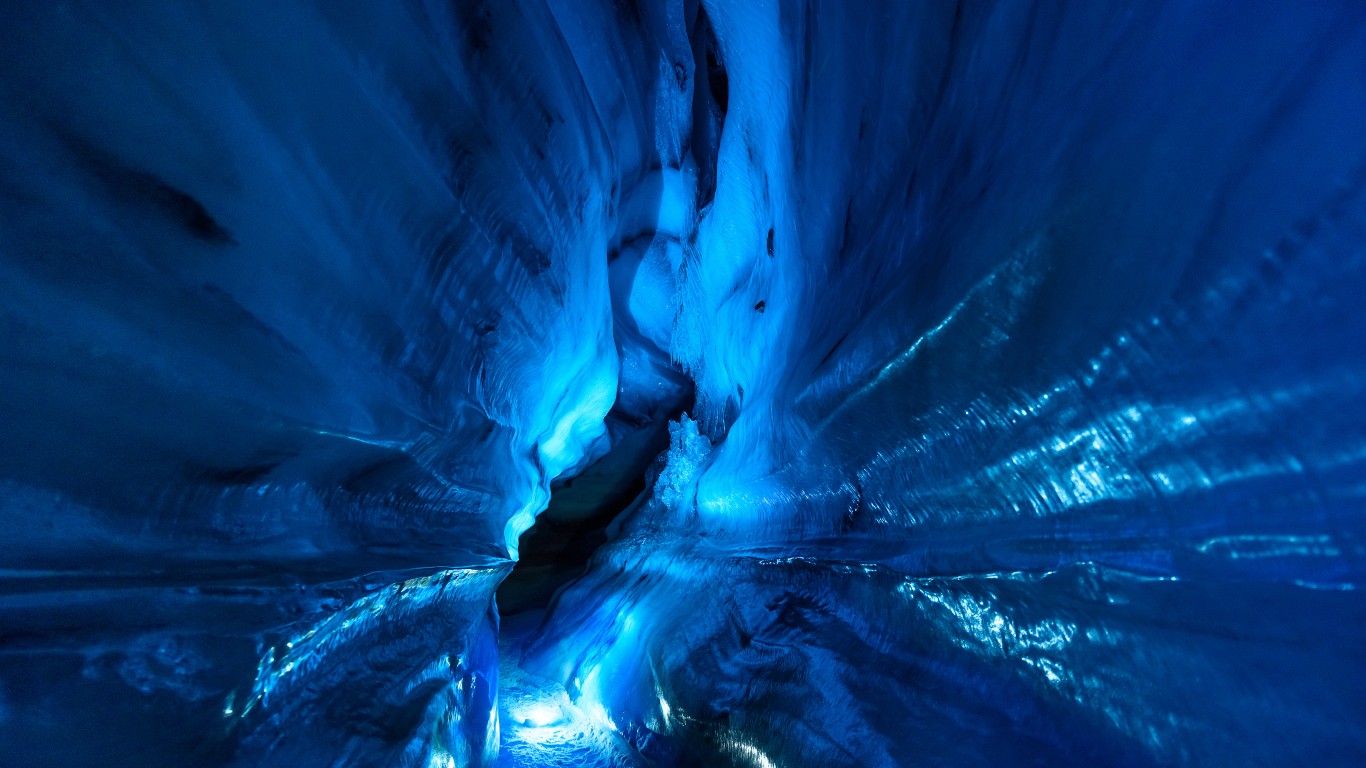
Blue Ice Caves
> Location: Norway
Nature was the architect of this wonder in Norway's Jostedalen Valley. Located under the Nigardsbreen glacier, the blue ice caves are surrounded by ice and snow and have naturally sculpted ice walls that glow in different shades of blue. You can go solo but it is advised to use a guide. The hike each way is about four miles.

Križna Jama Cave
This cave in Slovenia's Lož Valley, also known as Cross Cave, is for the more adventurous, daring tourists because it is naturally preserved with no concrete paths or strong lighting. There are 22 lakes in the cave, which is a sanctuary for hedgehogs, spiders, and other animal species.
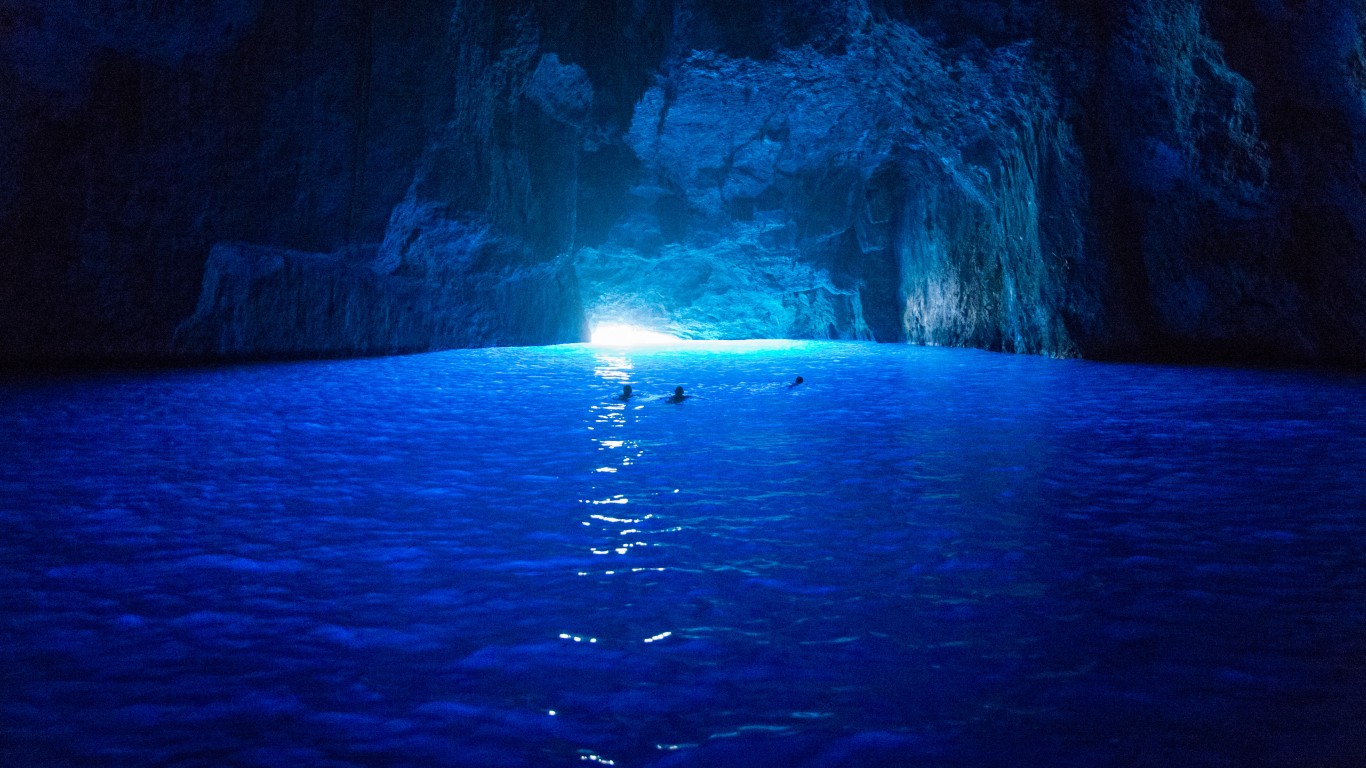
> Location: Greece
Due to its strikingly blue water and spectacular stalactites, the Blue Caves on the Keri Peninsula are a tourist magnet. They're also known as the Marathia Grottoes, as they're near the village of Marathia. Thousands of years of coastal erosion led to their formation.
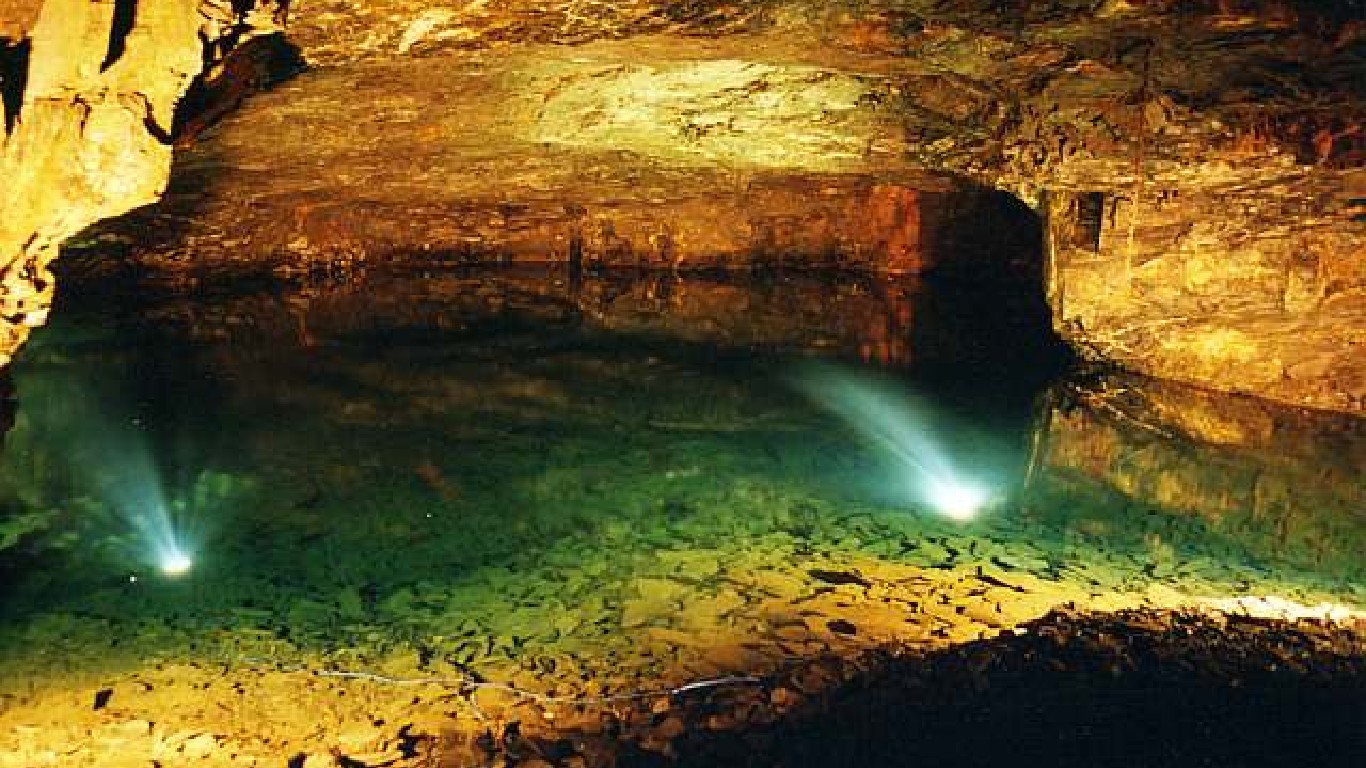
Carnglaze Caverns
The Carnglaze Caverns are comprised of three man-made caverns created as part of a slate quarry. It covers 65 acres of woodland in the Loveny Valley in the Cornwall section of England. Although it is temporarily closed, the site is used for music and comedy performances.
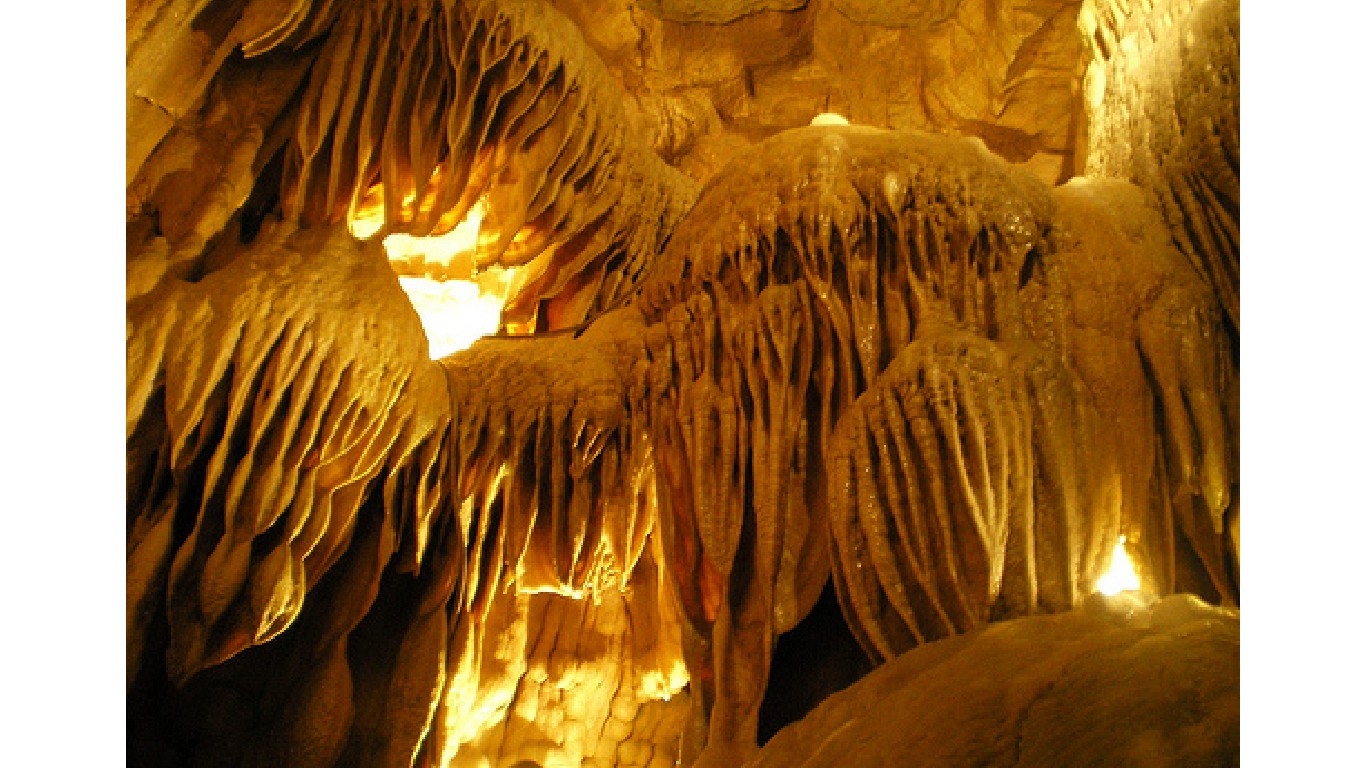
Indian Echo Caverns
> Location: Pennsylvania, USA
The Indian Echo Caverns at Echo Dell in Hummelstown, Pennsylvania. The walk through the caverns takes about 45 minutes and has been drawing tourists since the 1920s. The caverns were formed out of limestone 440 million years ago and are home to bats, bears, and raccoons.
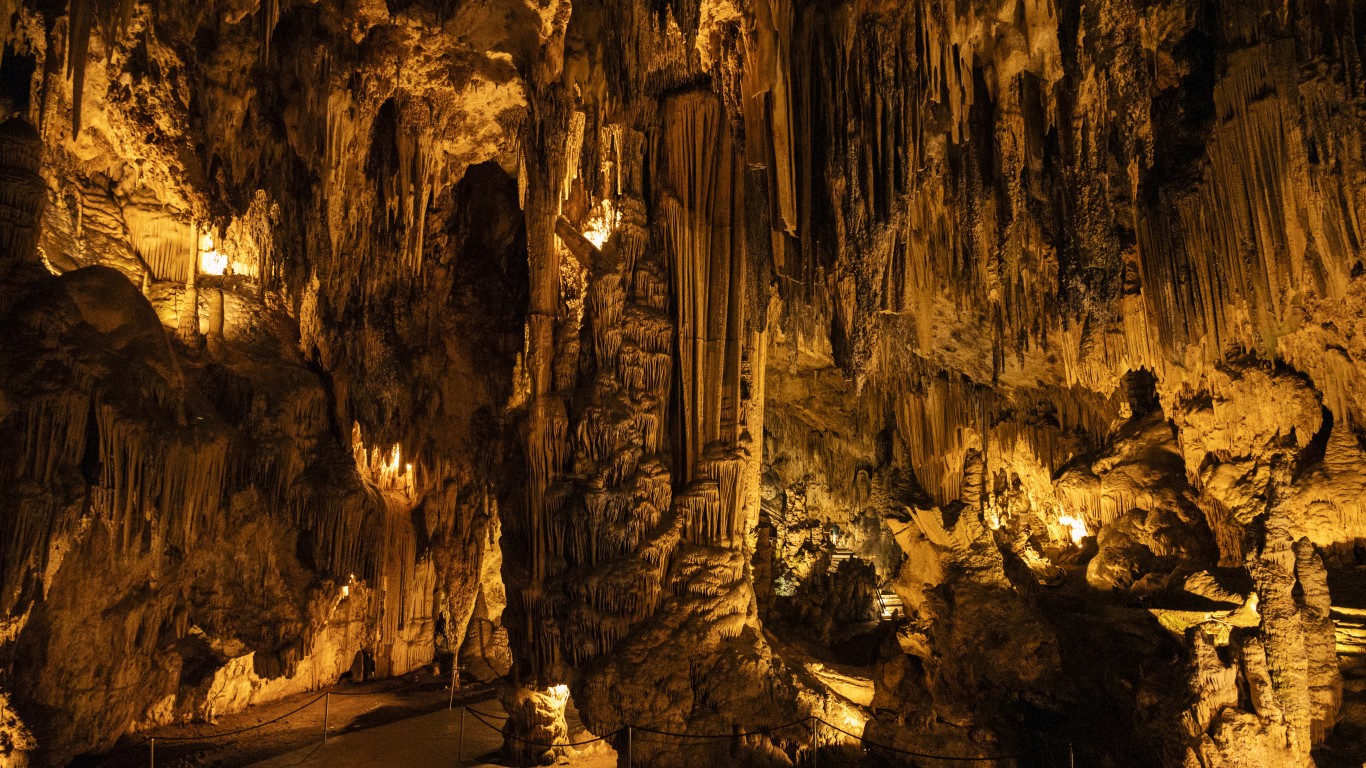
Nerja Caves
> Location: Spain
The Nerja Caves, in the province of Málaga region of Spain, feature paintings on rock formations from the Paleolithic era as well as the world's largest stalagmite. This series of caves, comprised of Nerja I and Nerja II, extends slightly over three miles. Nerja I, which forms a natural amphitheater, is home to concerts that are held on a regular basis. Nerja II is not open to the public.

Cave of the Crystals
This cavern full of giant crystals in the state of Jalisco was discovered in 2000 by miners after they pumped water out of a cave nearly 1,000 feet under the Sierra de Naica Mountain. The largest of the selenite crystals, which grew uninterrupted for at least half a million years, are 36 feet long and three feet thick.
More for You
NATO Aircraft Activated After Waves of Russian Strikes
I'm abrosexual - it took me 30 years to realise
I Was Told My Father Was A 'Deadbeat.' After He Died, I Found Out Everything I Knew About Him Was Wrong.
Caitlin Clark Tweaks Shoulder During Promotion at Bucks-Pacers Playoff Game
We Ordered 7 Fast-Food Breakfast Sandwiches to Find the Best One
Unsellable Houses' Lyndsay Lamb Says Buyers Are Moving Away From This Color Trend
The most expensive state to live in isn't California or New York, based on data. Here are the top 10.
Last letters of pioneering climber who died on Everest reveal dark side of mountaineering
'10-foot-tall people' discovered by archaeologists in Nevada cave
Famous Roles That 16 Actors Never Want to Play Again
Major Steakhouse Chain Closes 41 Locations
I’m a psychologist and mom—here are 3 phrases I wish more parents would say to their kids
I’m a Bank Teller: 3 Times You Should Never Ask For $100 Bills at the Bank
Map reveals best places to live in the US if nuclear war breaks out
Liz Cheney's Message to Supreme Court After Donald Trump Hearing
Hersh Goldberg-Polin's mother speaks out after Hamas releases hostage video of her son
30 food items that you might not know are banned in America
America Gets First Official One Piece Cafe
Remembering Fran
At 43, I’ve finally learned how to love my size 16 curves
- 07732912370
- 07831885985
Tour Departure From: Oban
Wildlife tour tobermory, treshnish & staffa.
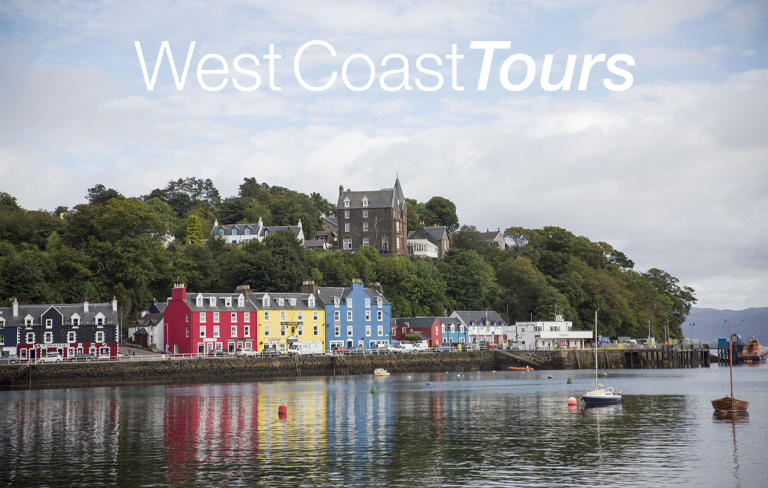
Our highly recommended tour for the chance to spend time with Puffins, view Eagles, Sealife whilst combining Staffa & Treshnish Isles. This Wildlife tour allows you to enjoy the picturesque village of Tobermory, famous for its coloured houses. Visit the Puffins on The Treshnish Isles and walk inside Fingals Cave, Staffa. You will sail on […]
Wildlife Tour
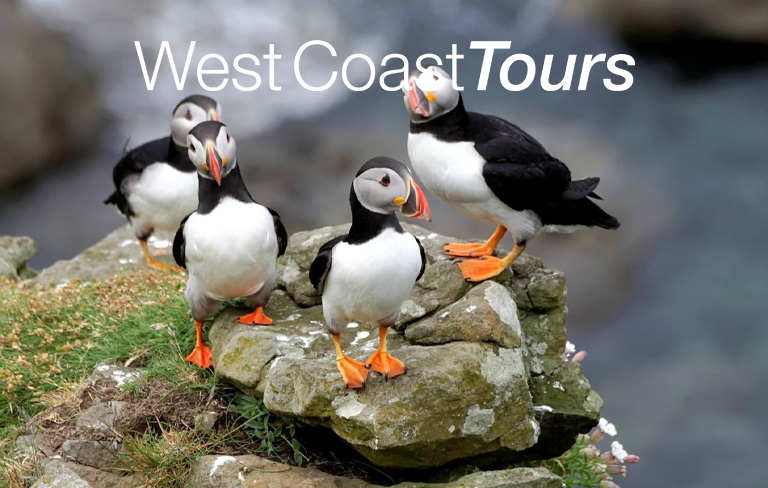
From Oban you will board the Caledonian MacBrayne ferry to Craignure on Mull. From Craignure you will travel to Fionnphort on our local West Coast Motors bus service. At Fionnphort Staffa Tours will take you on your cruise of the beautiful isles of Staffa, Lunga and Iona. Over two hours will be spent on Lunga […]
Three Isles Early Bird Tour
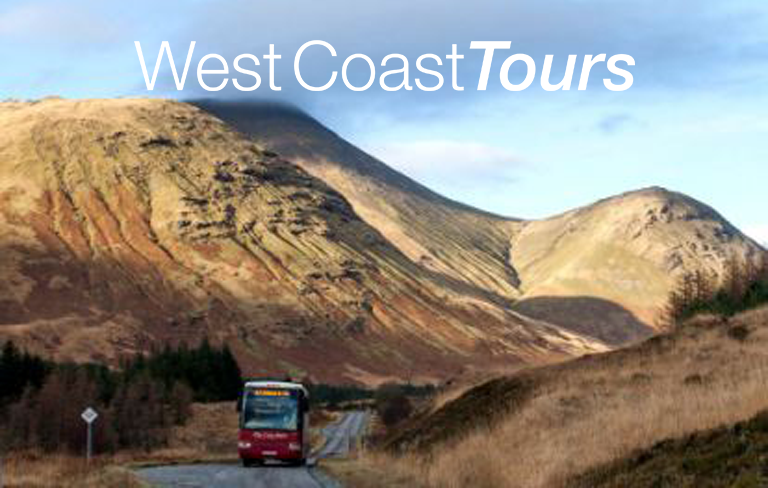
Discover the wonders of three Scottish islands in one day taking you through the stunning scenery of the Isle of Mull followed by a visit to the Isle of Iona to see the famous Abbey, but the highlight of this tour is the awe-inspiring visit to the unique Isle of Staffa to see Fingal’s Cave! […]
A Privacy Reminder
In accordance with the current data protection laws, please take a minute to review the term & conditions for using our services. Our terms describe how we use data and the options available to you.

IMAGES
VIDEO
COMMENTS
DESTINATIONS. Our tours allow you to take in some of the most breathtaking scenery in Scotland. The Isle of Staffa, the world-famous Fingal's Cave, the sacred Isle of Iona, Mull and the ornithological heaven of the Treshnish Isles - the most beautiful and interesting places on the West Coast of Scotland. Explore Our Destinations.
West Coast Tours based in Oban enables you to discover three beautiful Inner Hebridean islands including the beauty of Staffa and the awe inspiring Fingal's Cave. A number of boat operators in Oban offer trips from the mainland to Staffa, including Seafari Adventures. It makes sense to combine a visit to Staffa with trips to its equally ...
Fingal's Cave (Staffa) Take this fantastic trip with us to explore the one of a kind Fingal's Cave and enjoy breath taking views and beautiful wildlife. This three hour cruise takes you South East from Tiree across the passage of Tiree and passed the iconic Dutchman's cap. Out on the open waters, you're bound to experience an adrenaline ...
Fingal's Cave was one of my highlights in Scotland. These huge basal columns are fascinating from the boat and even more from inside the cave formed 59 million years ago. ... It is a full day trip; the price is about £ 60 per adult. Another highly recommended tour is the Isle of Staffa, together with Lunga Island. Lunga is famous for being one ...
Fingal's Cave is a sea cave on the island of Staffa in the Inner Hebrides. It is formed from hexagonally-jointed basalt columns similar to the Giant's Causeway in Ireland. The Giant's Causeway and Fingal's Cave were both formed by the same lava flow 60 million years ago.
An extremely well-known and popular classical piece of music is Felix Mendelssohn's Hebrides overture, Fingal's Cave. Mendelssohn visited the Island of Staffa and of course the Cave in August 1829. He was allegedly very sea sick at the time. This may help to explain his apparent dissatisfaction with his original version of the overture.
Fingal's Cave. 143 reviews. #1 of 19 things to do in Isle of Iona. Caverns & Caves. Open now. 12:00 AM - 11:59 PM. Write a review. About. Large cavern by the sea full of echoes and the sound of crashing ocean waves.
Built Across Continents. Formed over 50 million years ago, Fingal's Cave is located on the uninhabited island of Staffa and contributes to part of a vast network of sea caves. The cave was carved from the same lava flow that shaped the Giants Causeway, an area of about 40,000 interlocking basalt columns in Northern Ireland.
3 hours. Departs: Iona, Fionnphort. Take a tour to the most dramatic of all the Scottish islands: The Isle Of Staffa, with its hexagonal pillars and Fingal's Cave. On the way to Staffa keep an eye out for dolphins, porpoises and minke whales which are often seen during the warmer months. The approach to Staffa by sea is breathtaking, with ...
Fingal's Cave. 143 reviews. #1 of 19 things to do in Isle of Iona. Caverns & Caves. Open now. 12:00 AM - 11:59 PM. Write a review. About. Large cavern by the sea full of echoes and the sound of crashing ocean waves.
Child Price. £20.00 per child under 16 years old. —. Please note, dogs are no longer permitted on our trips. To Book a Morning Staffa Visit from Mull Click Here. To Book an Afternoon Staffa Visit from Mull Click Here. Fingal's Cave. The Cave may be named after Finn MacCumhaill, later adapted to Fingal, who was an heroic Irish General ...
Fingal's Cave owes its modern reputation to an 1829 visit by composer Felix Mendelssohn, who was overcome with the cave's incredible acoustics. After returning from his trip, he wrote the opening piano melody from his concert overture Th e Hebrides on a postcard, which he sent to his sister.
The Hebrides Overture, also known as Fingal's Cave, premiered on May 14, 1832, in London. (The original name may have been based on the amazing noises the cave sometimes produces.) In a one-two ...
But it was Fingal's Cave that was the highlight of our trip. It's an extraordinary sight and a must-see on any trip to Mull and the Inner Hebrides. Turus Mara runs small boat trips to visit Fingal's Cave and Staffa from the Ulva ferry dock on Mull. During the puffin breeding season from April until early August you'll spend an hour on ...
Staffa, Fingal's Cave & Iona Morning Tour. 2. Iona, Mull & Isle of Skye Tour. 3. Isle of Mull & Iona Small-Group Tour. 4. Loch Ness, Glencoe & the Scottish Highlands Tour. 5. Magical Mull, Iona & West Highlands Small-Group Tour from Edinburgh.
Staffa is home to the majestic Fingal's Cave and hosts its own colony of puffins. Tours can be joined from both Mull and Oban. ... Our boat trips run from Ulva Ferry on Mull. *Please note dogs are no longer permitted on our trips. Discover our range of trips. Treshnish Isles and Staffa Wildlife Tour FROM MULL (restarts April 2024) 11:45 am ...
Fingal's Cave is a Site of Historic Importance. Lee/ Adobe Stock. This cave was formed in the 1700s and has been visited by many notable people, including author Sir Walter Scott and composer Felix Mendelssohn. Mendelssohn was so inspired by the cave that he wrote an overture called "Fingal's Cave.".
Passengers from Oban join the 12:15 Calmac ferry to Craignure, where our minibus awaits to transport you to Ulva Ferry to join the Turus Mara tour. This trip from Oban is an opportunity to combine a boat trip to visit Fingal's Cave on Staffa with a little bit of Puffin Therapy (May - July) too! Turus Mara team up with Caledonian MacBrayne ...
Duration: 2-12h. Starting Point: Oban or Isle of Mull (Ulva Ferry) Destination: Staffa Island, Inner Hebrides. Tours: Calmac & Turus Mara or StaffaTours. Price: from £35 to £73 (depending on tour and starting point) Best time to visit: May-July. Accomondation: Oban & Craignure.
The trip lasts approximately three hours and you can disembark at Fionnphort or Iona. Staffa Trips leave Iona and Fionnphort twice daily (1st April-late October) and we aim to give you at least 1 hour ashore. Prices: £40 Adult, £20 Child (5-15). Under 5's free. Please note: All trips and landings are subject to suitable weather and sea ...
Fingal's Cave . A sea cave on the uninhabited island of Staffa. This three hour cruise takes you South East from Tiree across the passage of Tiree and passed the iconic Dutchman's cap. Out on the open waters, you're bound to experience an adrenaline rush, as your Skipper revs the engine and takes you on a thrilling high speed journey to ...
One of the best-known caves in Scotland, Fingal's Cave is formed from volcanic basalt columns. Though it looks like it was man-made, the cave is completely natural.
From Craignure you will travel to Fionnphort on our local West Coast Motors bus service. At Fionnphort Staffa Tours will take you on your cruise of the beautiful isles of Staffa, Lunga and Iona. ... but the highlight of this tour is the awe-inspiring visit to the unique Isle of Staffa to see Fingal's Cave! ...